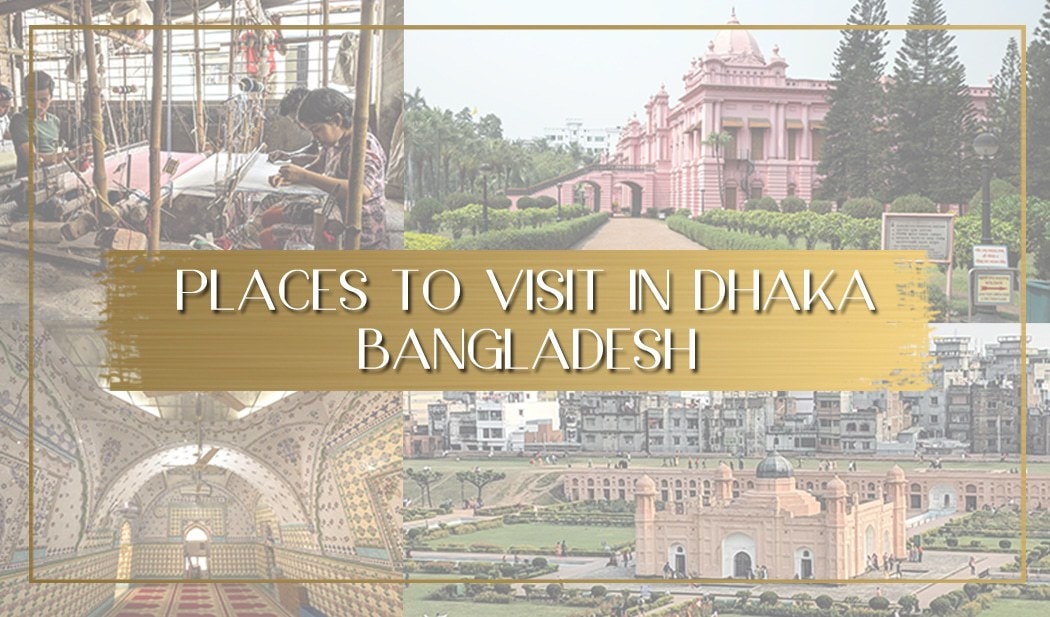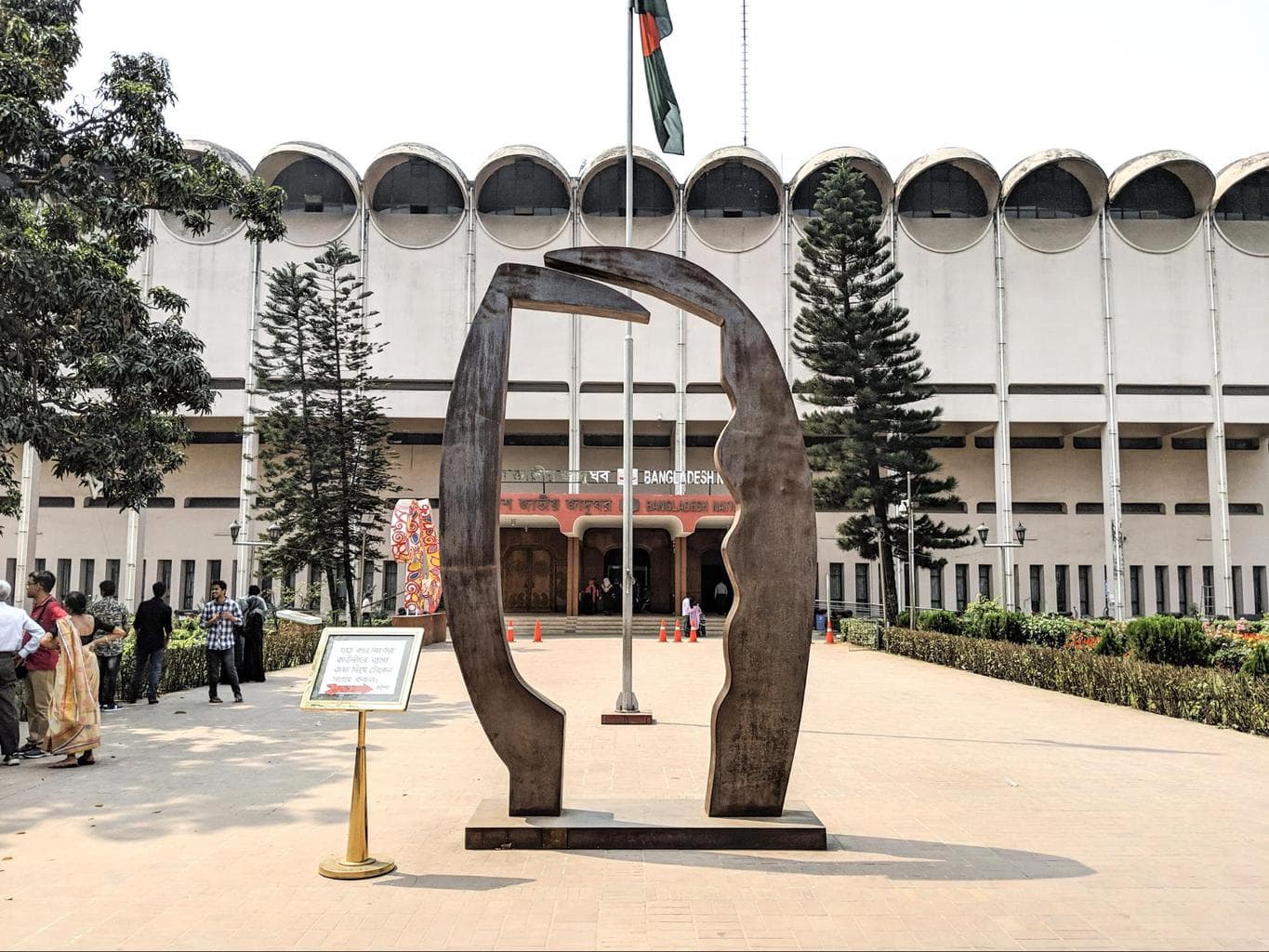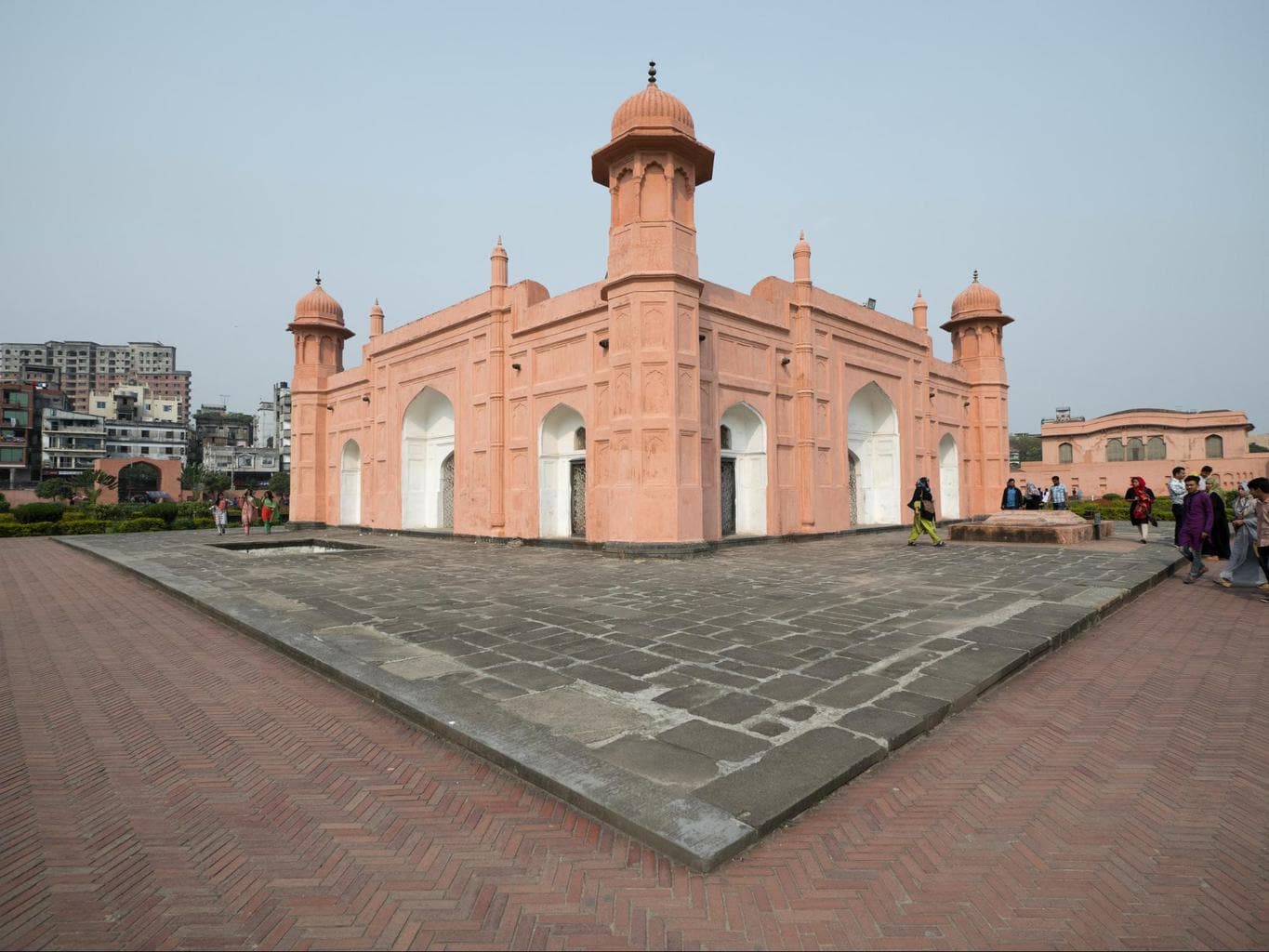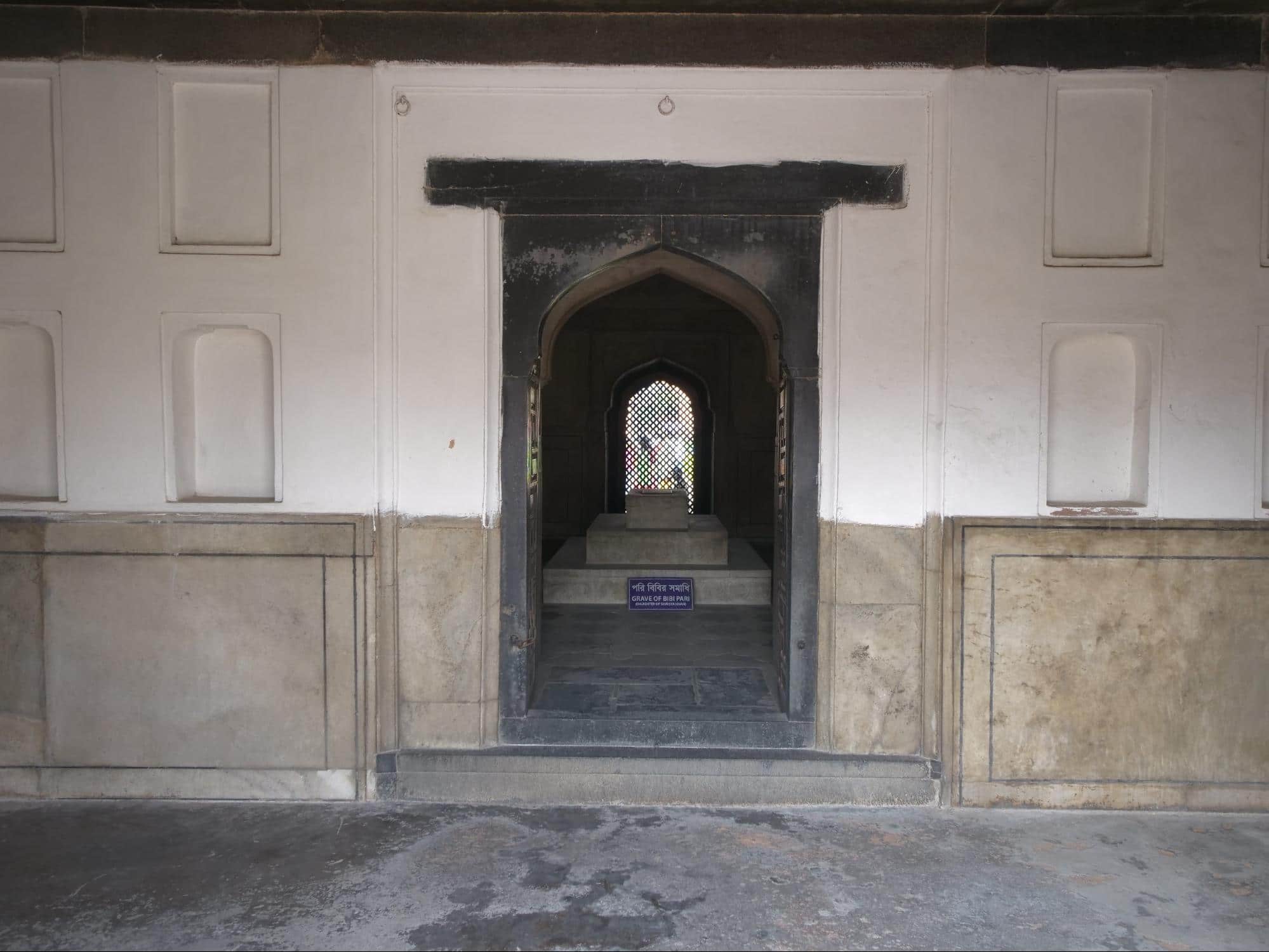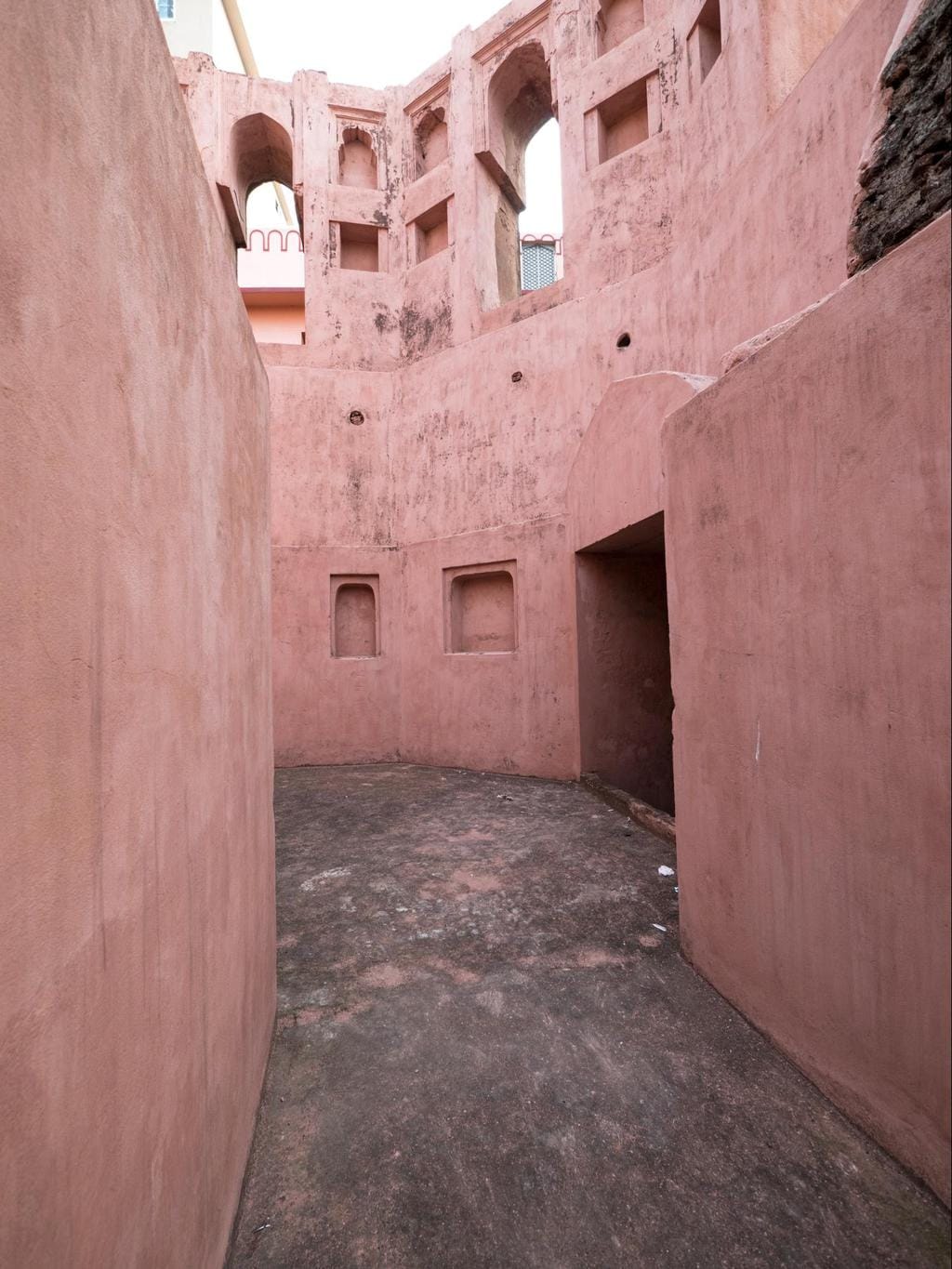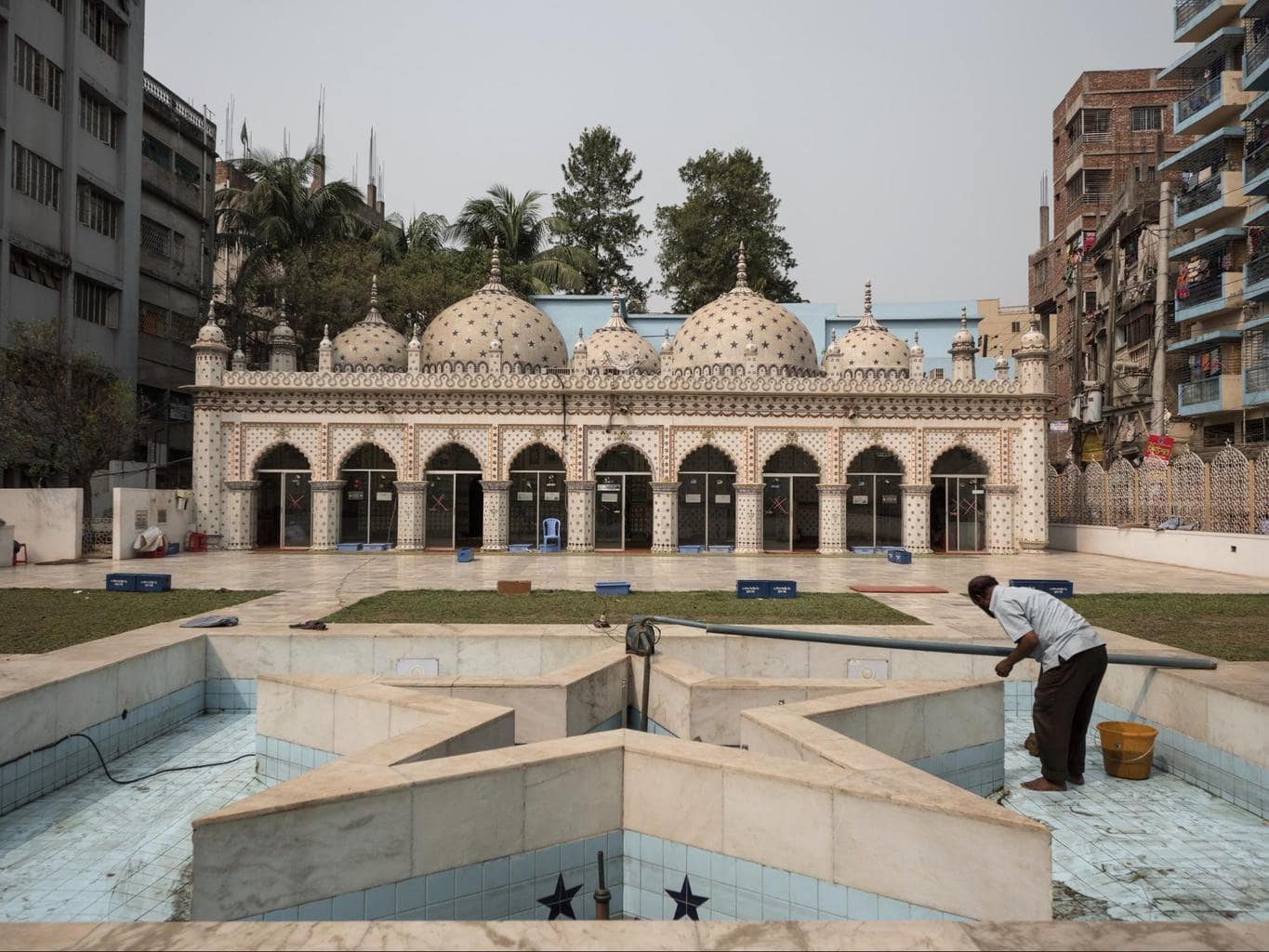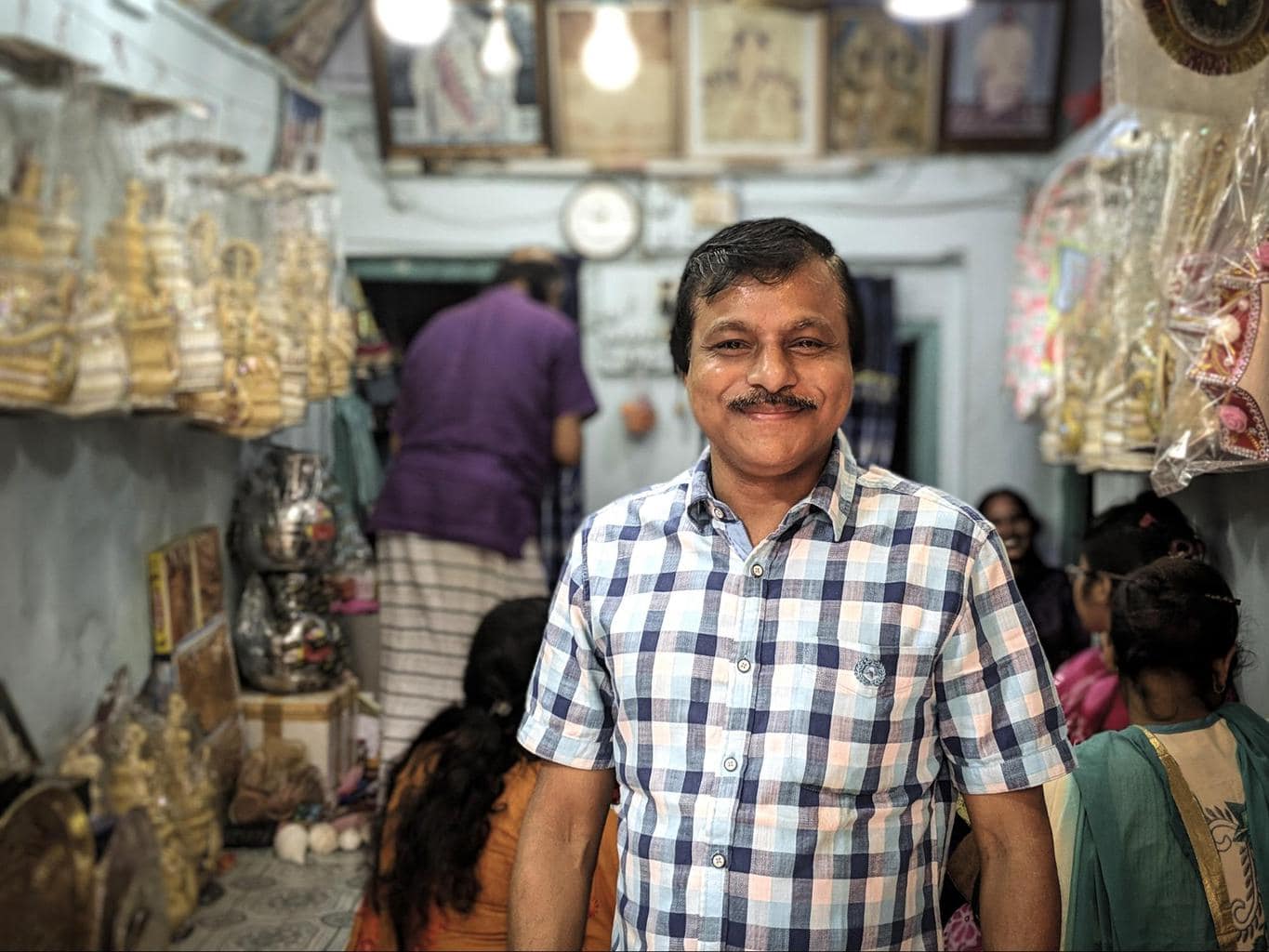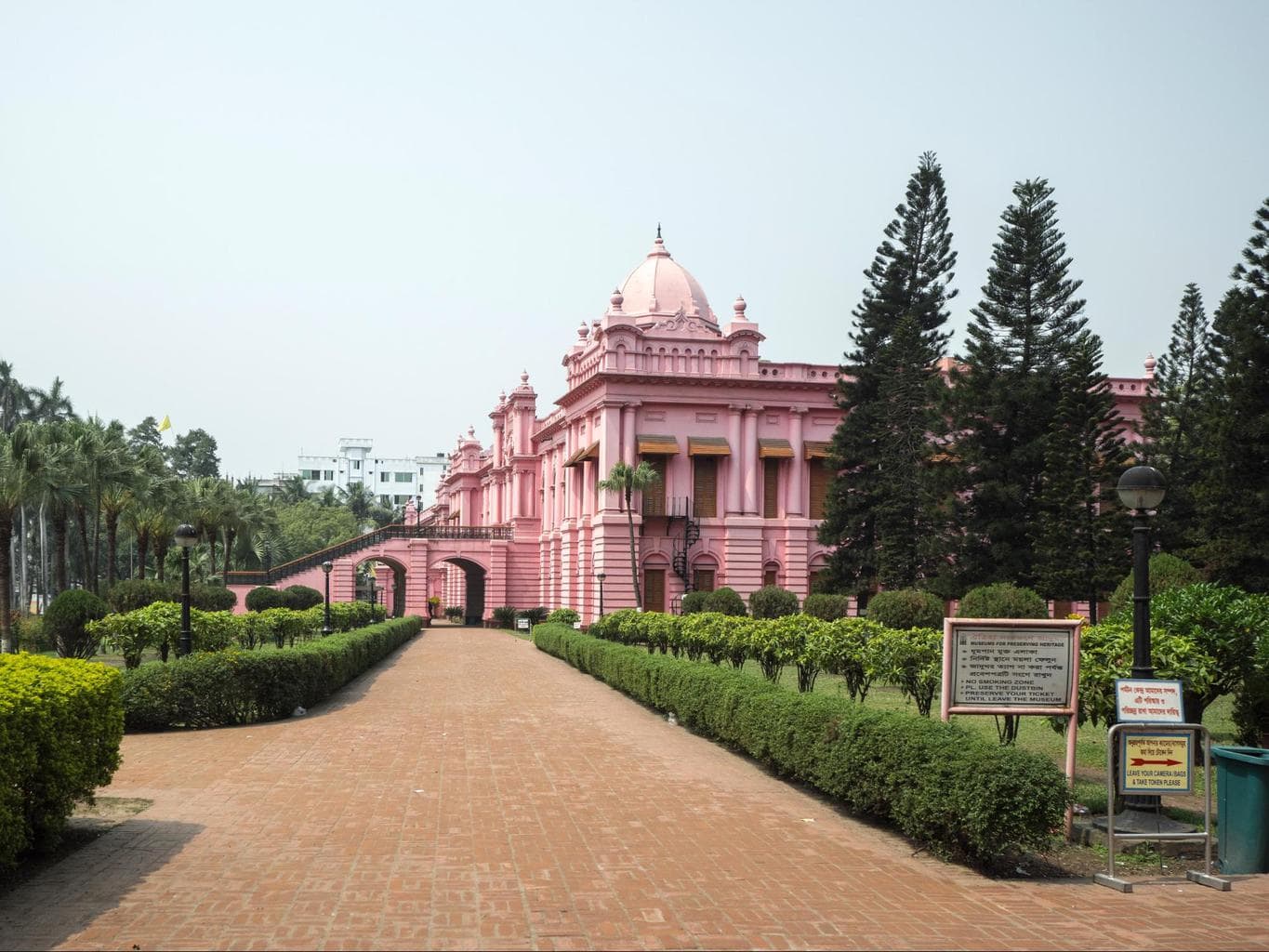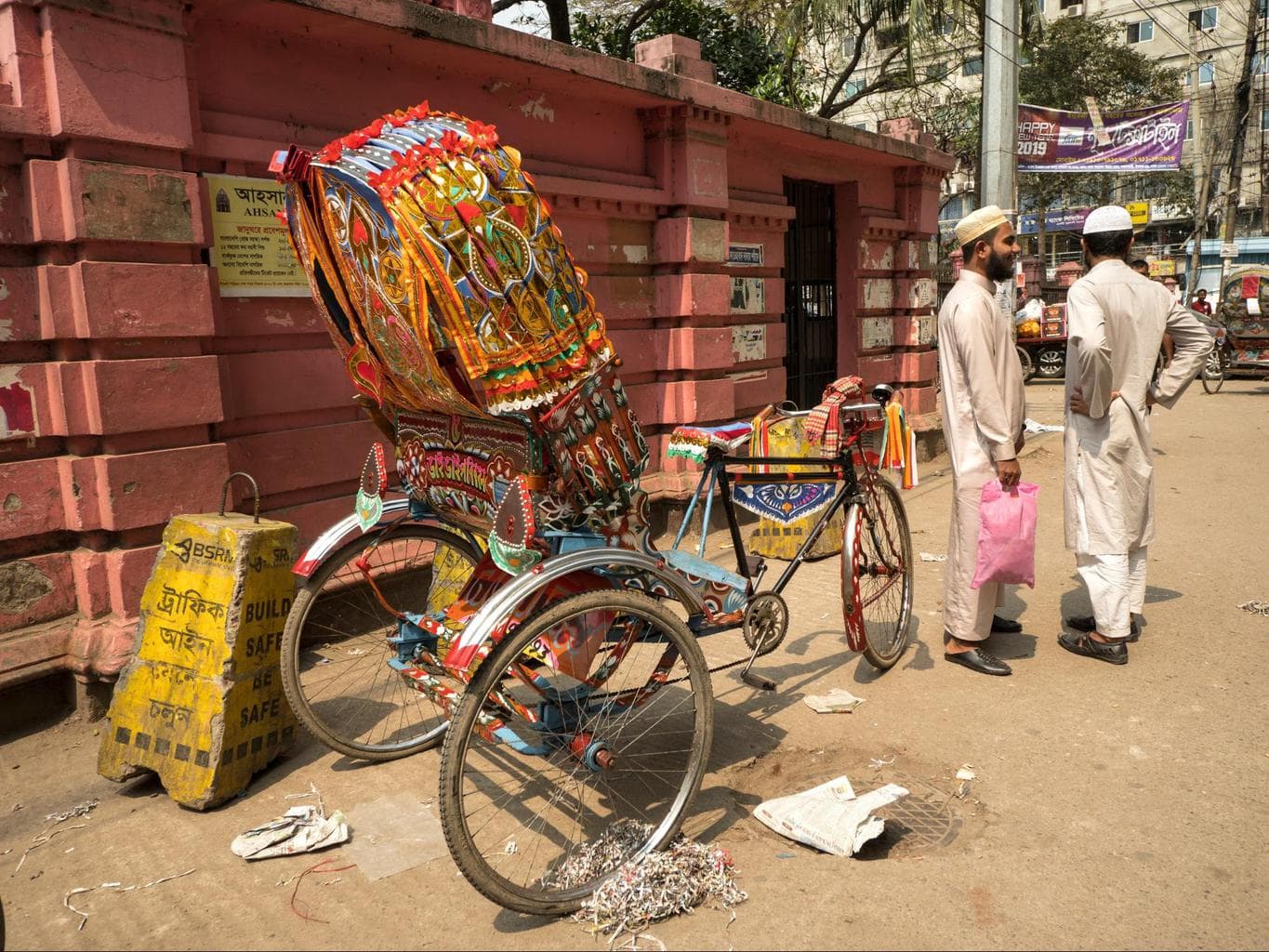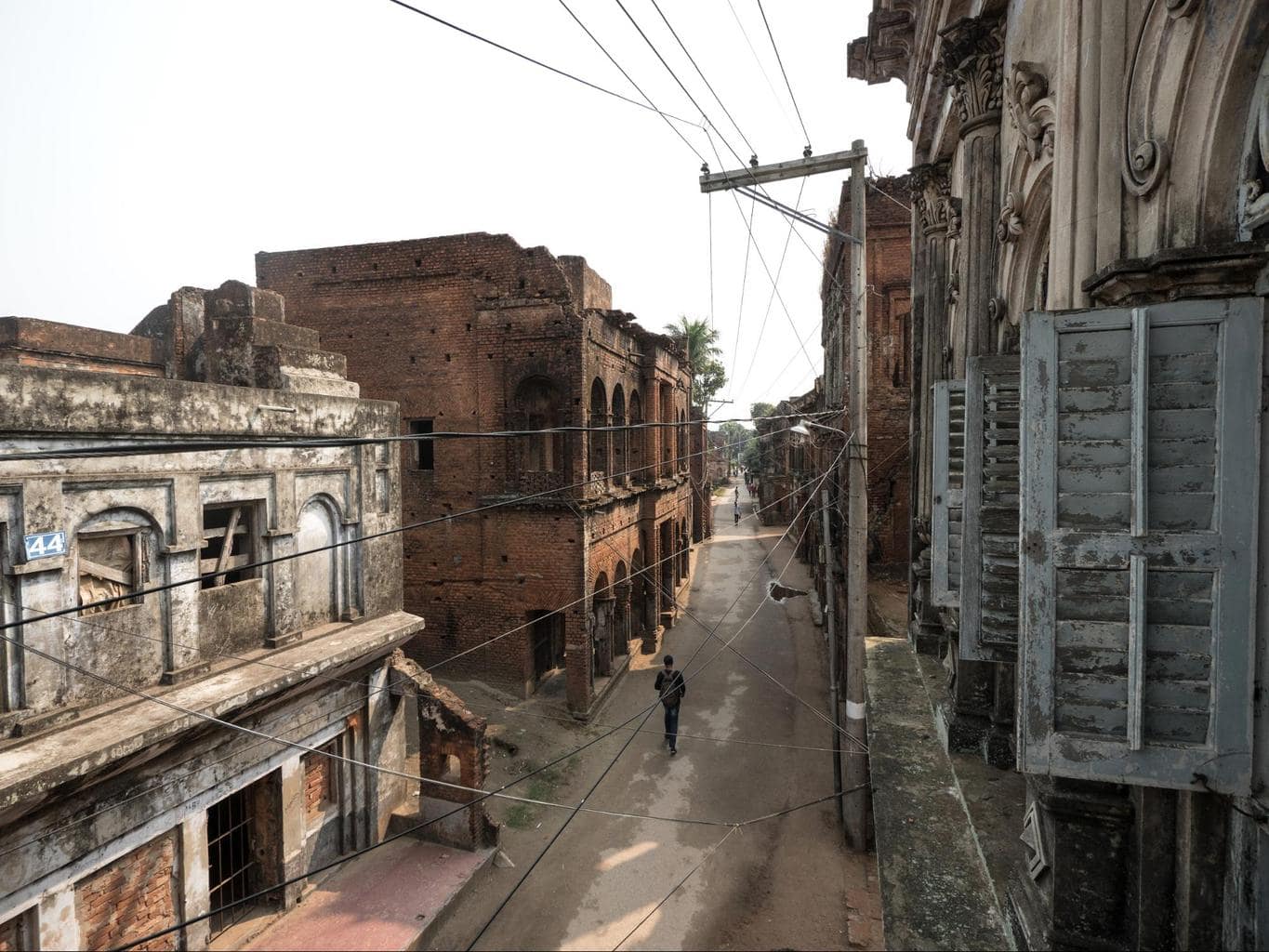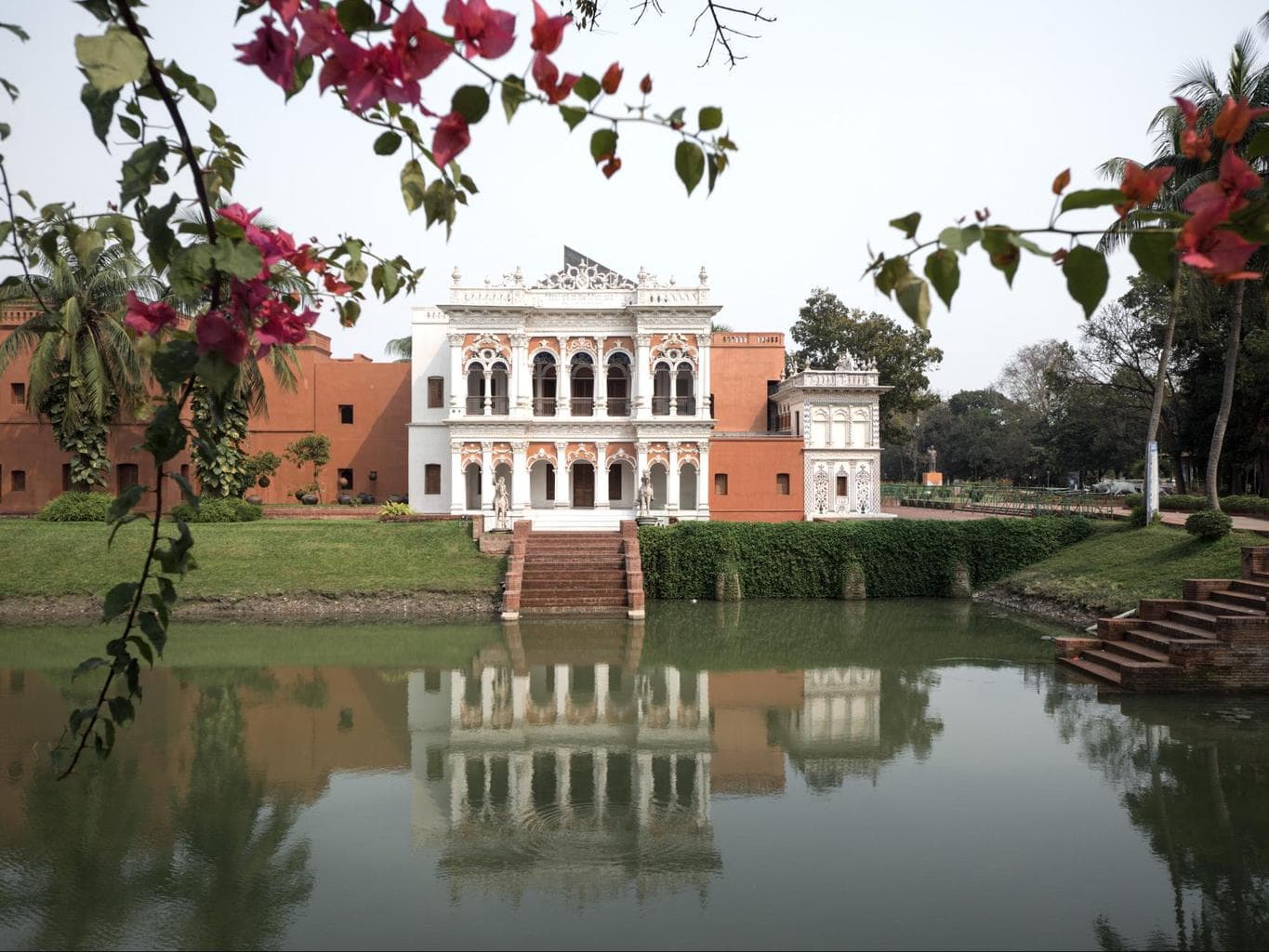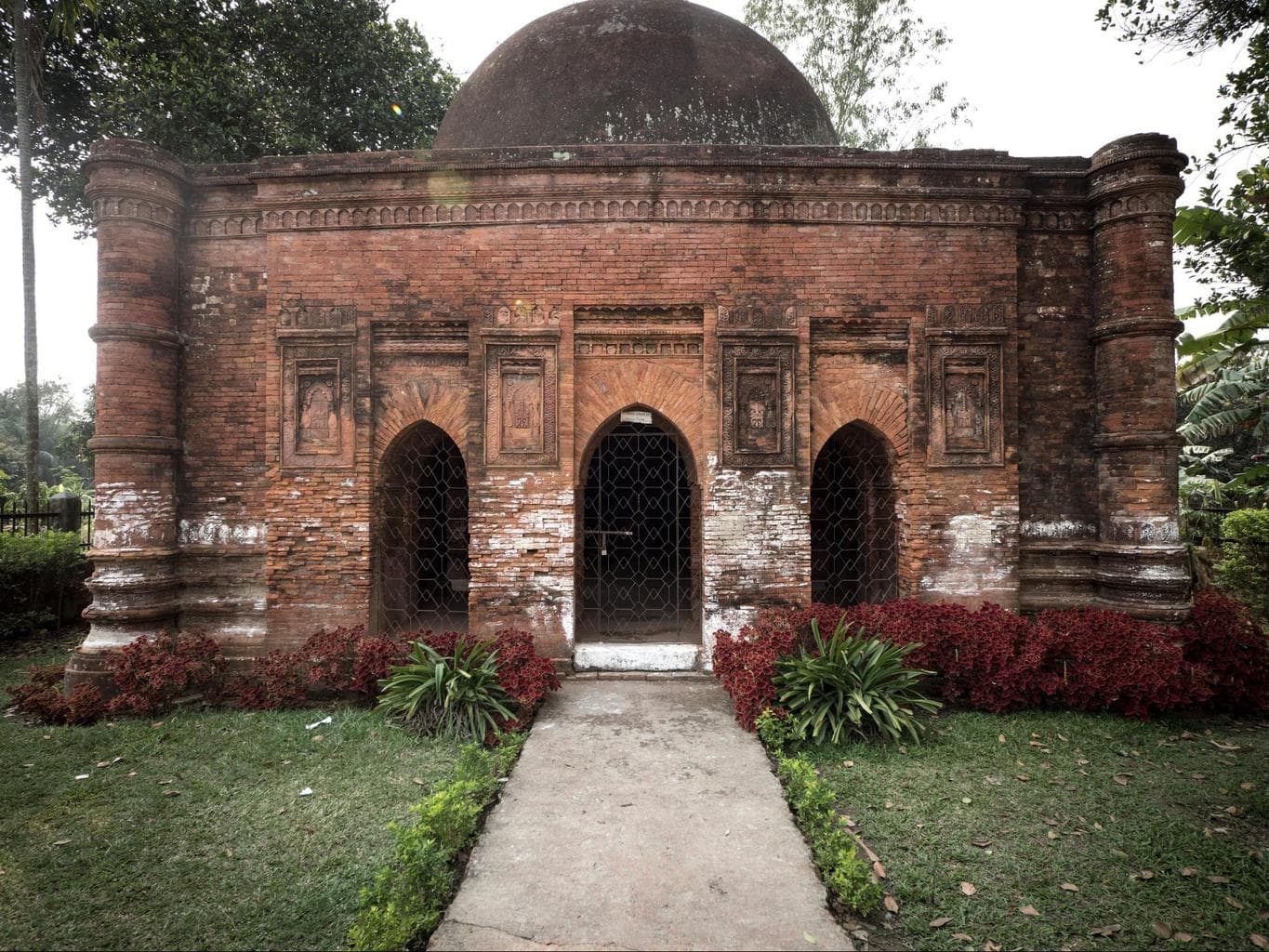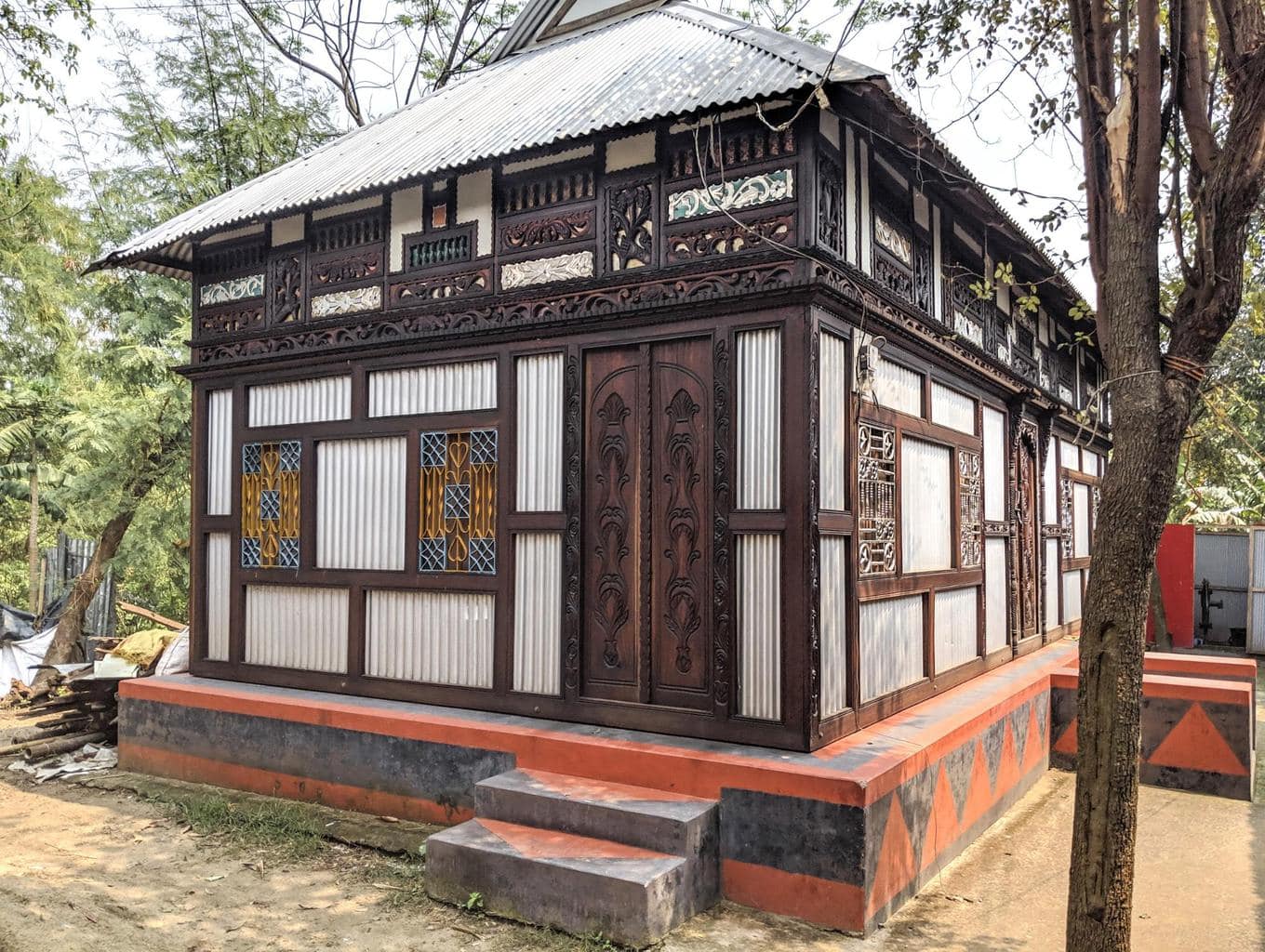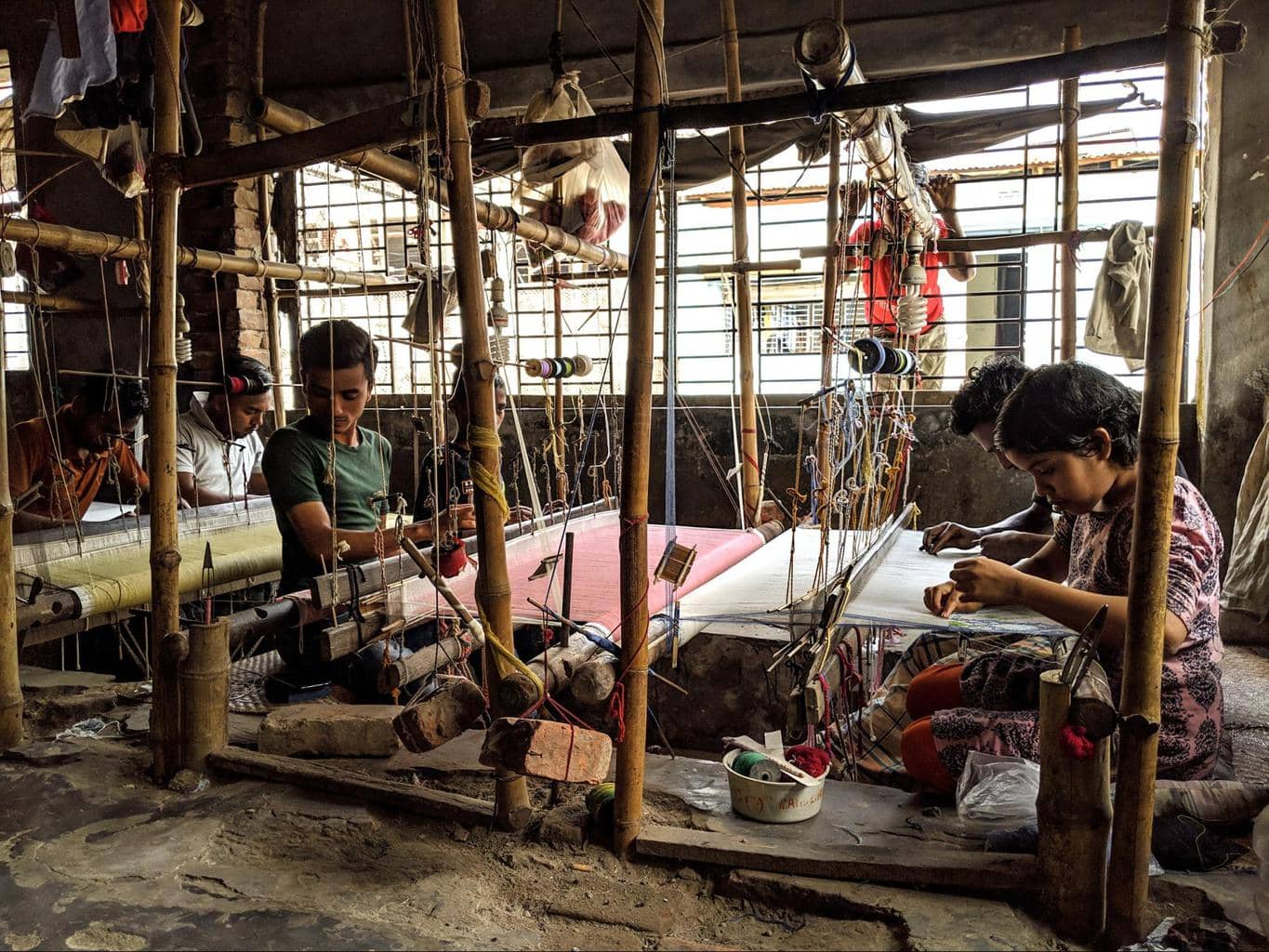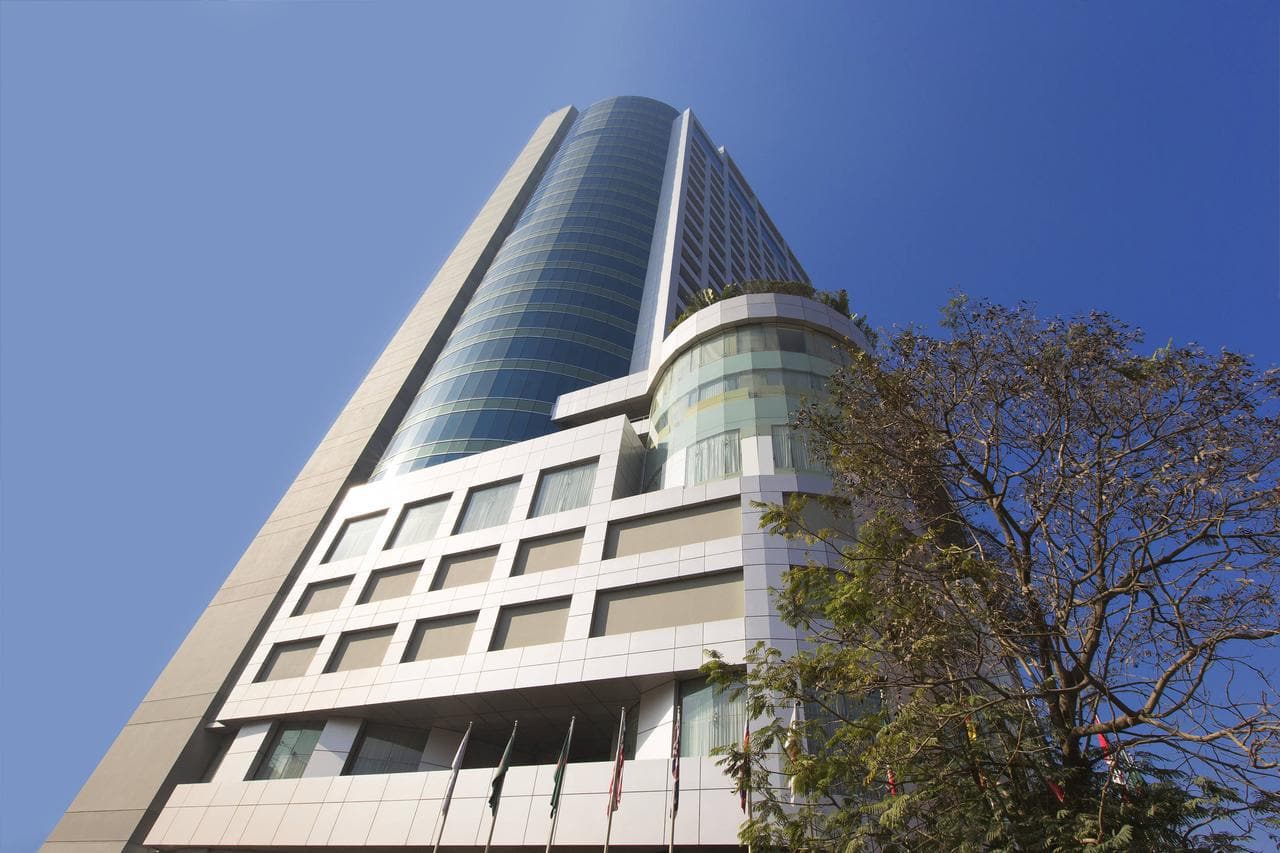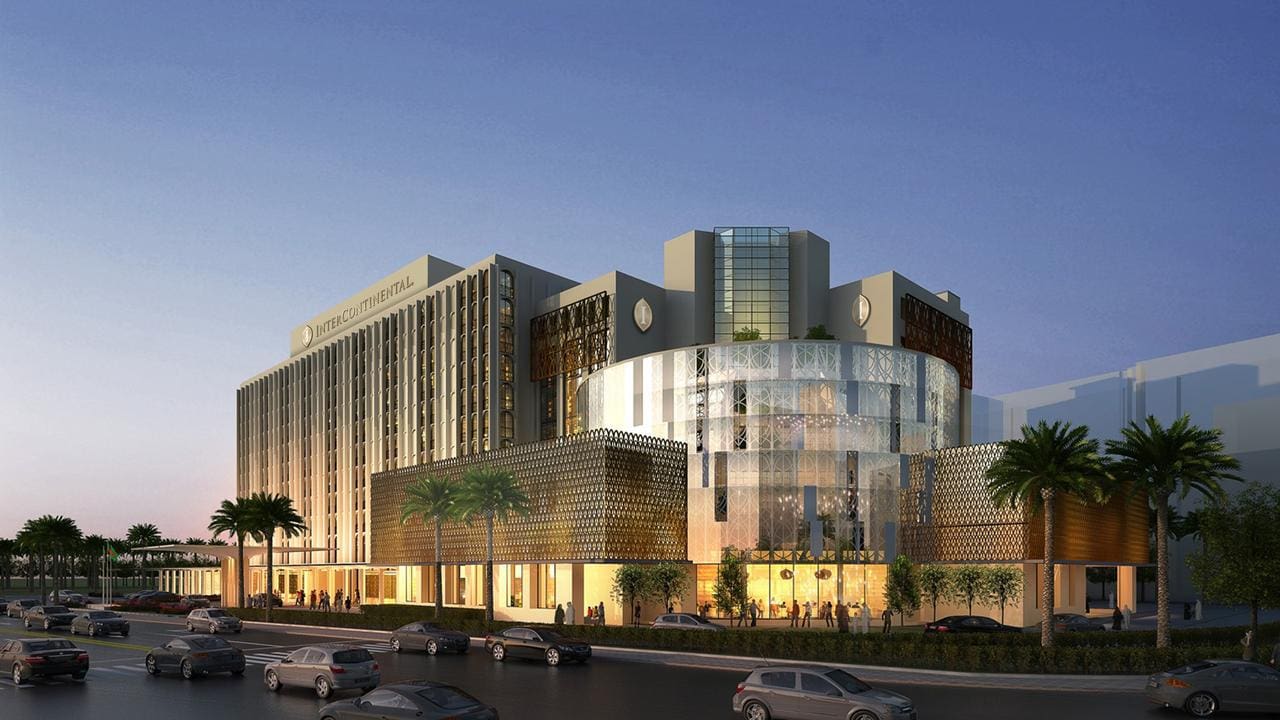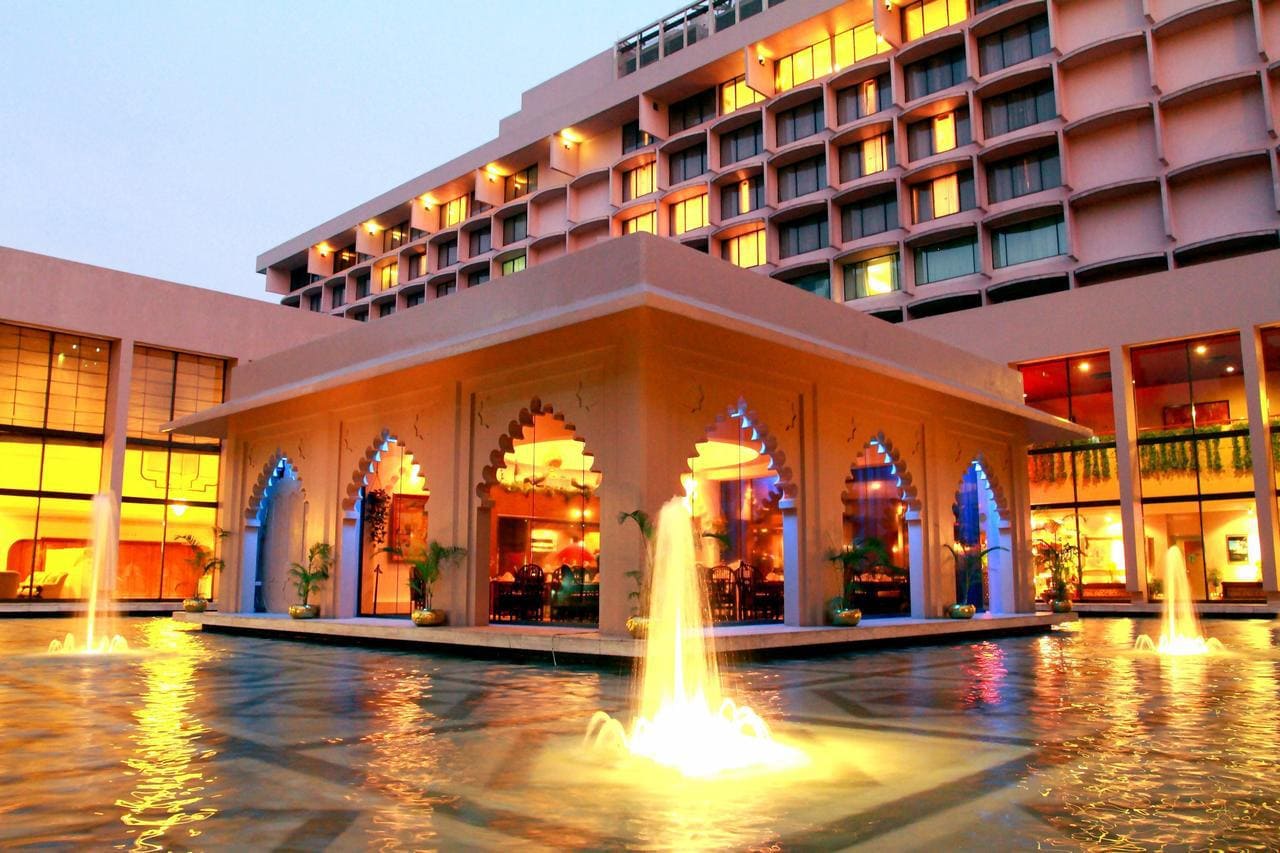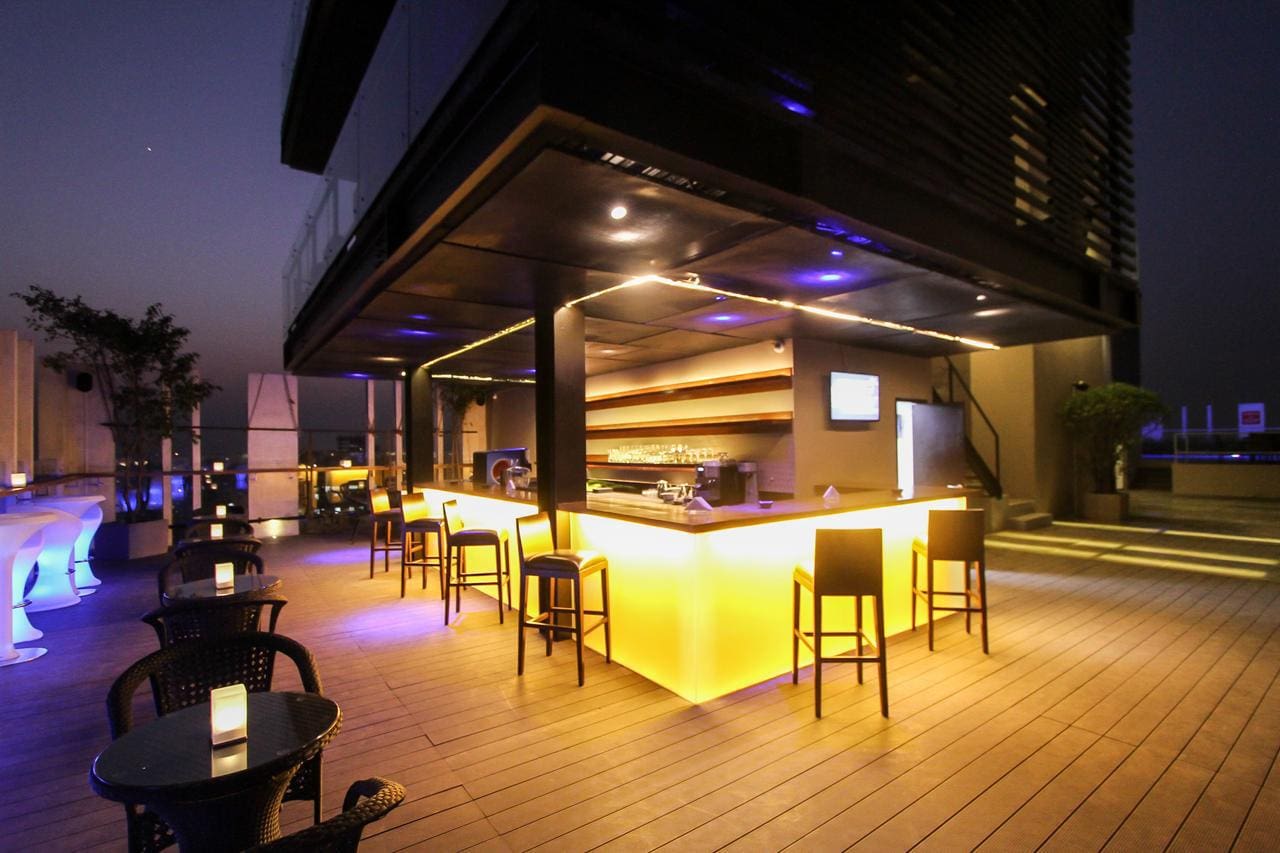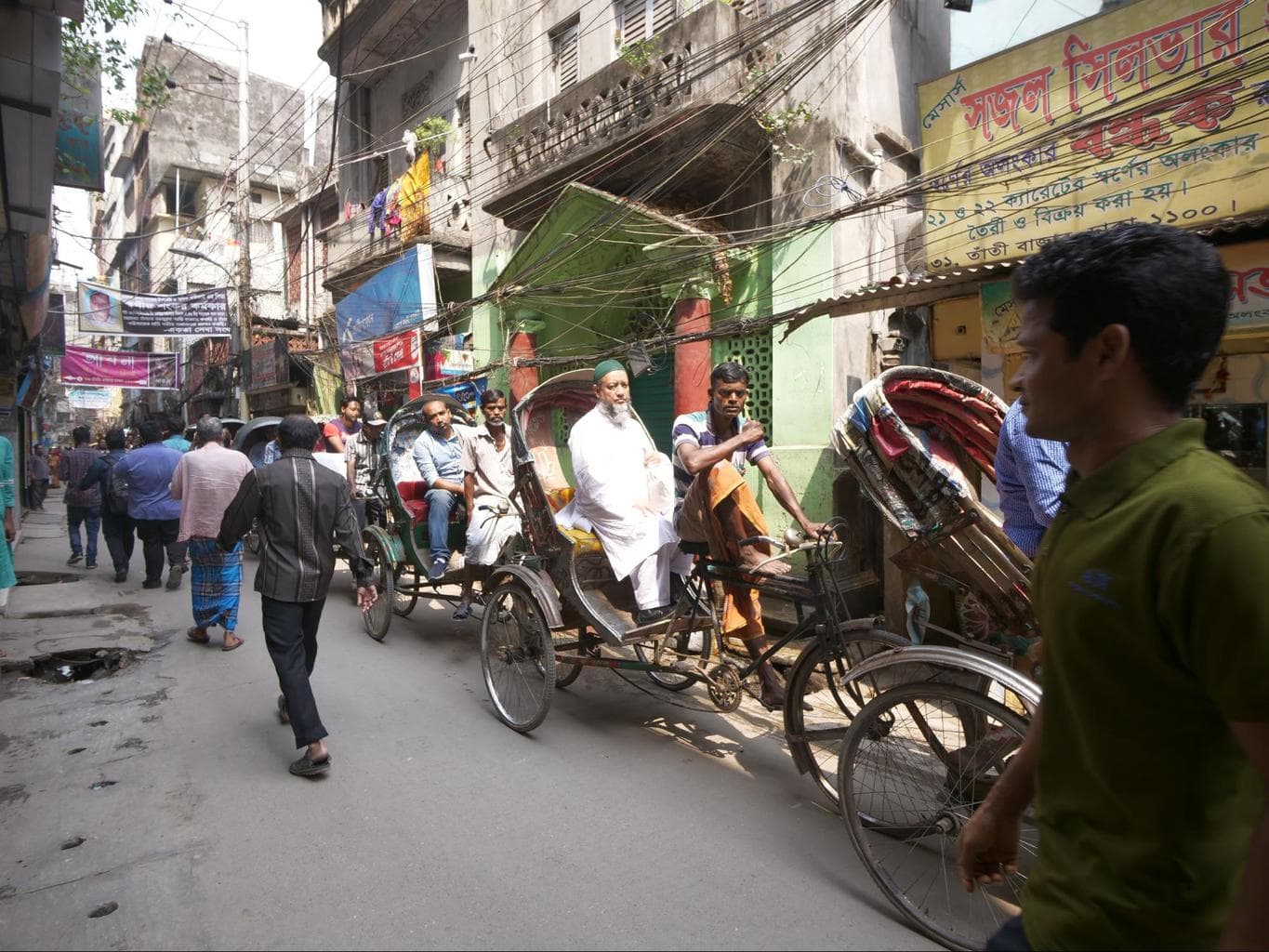If you are looking for a list of the places to visit in Dhaka you have come to the right place because this is what this article is all about.
Dhaka is not one of the most popular places to visit in Asia but it is one which I very much enjoyed exploring and which surprised me positively.
I visited Dhaka with little expectations and without having done much research, I thought the best way to discover it would be by simply walking around since it is more a place to live than to go around ticking boxes.
While this may be true, because the city does not have as many tourist attractions in the strict sense of the word, there are a few places to visit in Dhaka that you should make sure to add to your itinerary.
Best things to do and places to visit in Dhaka
Dhaka is a total explosion of colors, smells, sounds and even touch. It will assault your senses like any other place, and this comes from someone who has traveled to India more than 20 times, Dhaka is a step beyond India’s crowded cities.
But this is probably why I enjoyed my time there.
Before we jump onto the list of things to do in Dhaka, I want to strongly suggest you consider exploring them with a guide, ideally, a private guided tour, so you can tailor your visit to your liking.
This is for safety reasons, for practical reasons (traffic is appalling and English not spoken) and for convenience (distances are big and getting cabs/rickshaws is hard if you don’t speak the language).
Perhaps most important of all, it’s so that you can make the most of your visit with insights and information you wouldn’t normally know. Bangladesh and Dhaka are not touristy destinations and the information that visitors know before coming is small, so without a guide you will miss all the interesting stories.
Here are the best options for a tour of Dhaka:
- A full small group tour (max 12 people) that includes everything below except for Sonargaon or the sights that are far away from the main tourist area. After this tour, there will be little for you to see independently. Book it here. This tour picks you up and includes lunch and even a theatre performance.
- Smaller group tour with only 6 people that also explores all the sights. This one has no theatre and the food is not included. Book it here.
Saat Gombuj Jaame Masjid
Located a bit far off the rest of the main places to visit in Dhaka, the pink Seven domed mosque, as its name translates, is one of the most historical places in Dhaka. The mosque follows a Mughal design and dates back to the 17th century.
When I visited, it was being renovated which is good news as most tourist spots in Dhaka don’t get a lot of love, and bad news because previous renovation work was done without care for conservation principles.
The old structure is reminiscent of the Lalbagh Fort and has a central hall with three domes and four additional ones at each corner. The mosque used to be located by the shore of a river which was later deviated.
National Parliament House of Bangladesh
This octagonal building complex housing the country’s Parliament is one of the most interesting places to visit in Dhaka because of its universal design unlike any other in the city, and its pretty location between gardens and water.
The work of famous American architect Louis Kahn and possibly his magnum opus, the Parliament House is a fine example of form and functionality, it incorporates the essence of Bangladesh heritage and has been called Brutalist by some.
Completed in 1982 as a modernist piece after Bangladesh independence and conceived as an ode to it, its exposed grey concrete and marble facade blends in well with the city’s concrete jungle.
But don’t stay outside, the Parliament building can be visited. You can apply by email by submitting the form available here at least a day ahead.
Karwan Bazaar
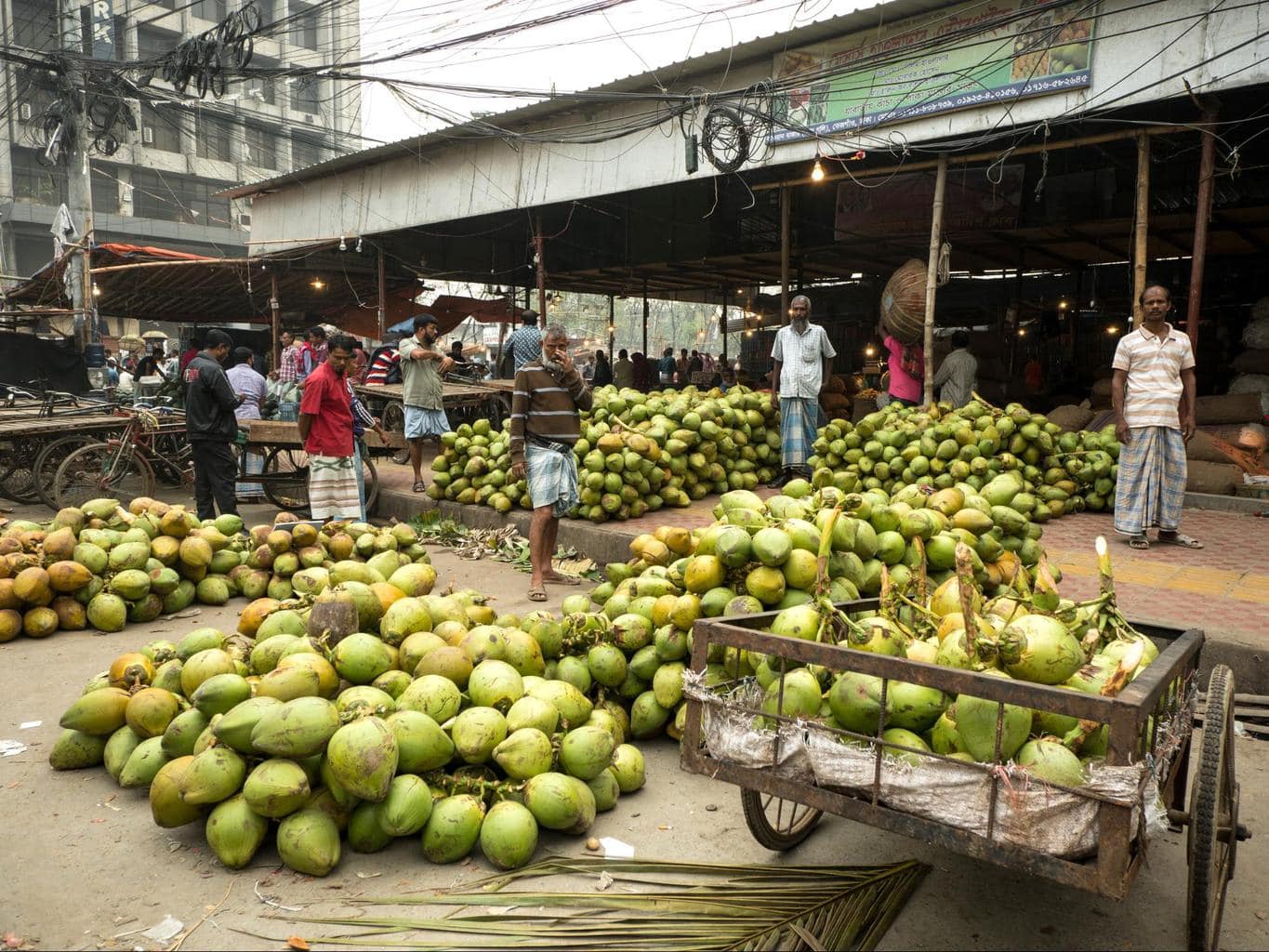
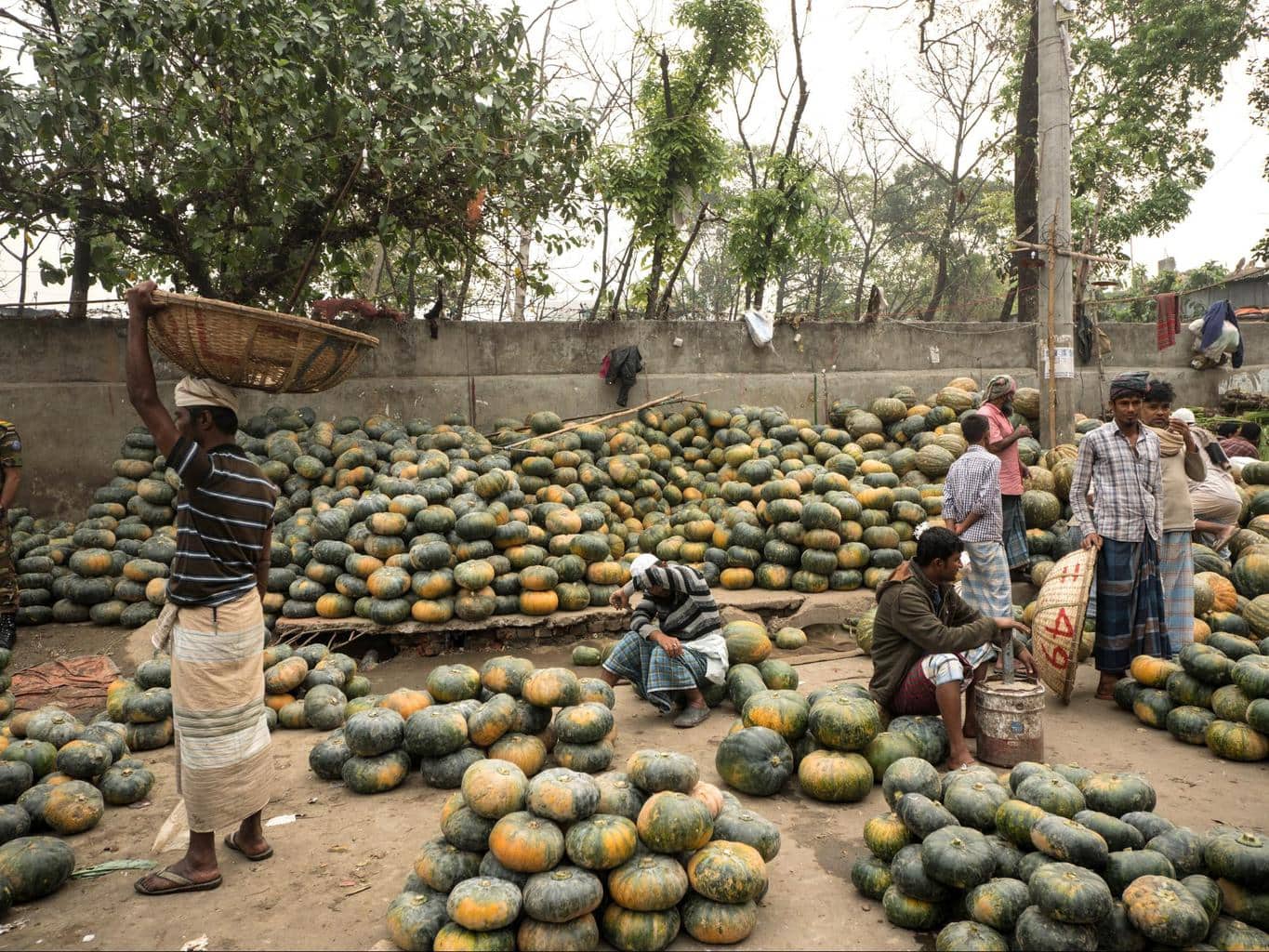
This business area cum vegetable bazaar named after an 18th century Merwari trader sprawling around a train track is one of the most colorful and buzzing parts of the city and one of the most fascinating places to visit in Dhaka.
The working wholesale market overflowing with local farmers selling their produce and caddies carrying large baskets up and down the area is not a tourist attraction but a cultural experience. The area is known for hosting the offices of most of the media companies in the city too.
There are not a lot of foreigners in Dhaka, in fact, I did not see any in my entire time there, and Karwan Bazaar would have been the last place to find them, because it is not really a tourist spot in Dhaka, but what a shame that is.
The majority of the produce sold here is spread on the floor or comes out of sacs, in the open. Large piles of bananas, still attached to the branches, mountains of uneven potatoes, vegetables squashed by passing buyers.
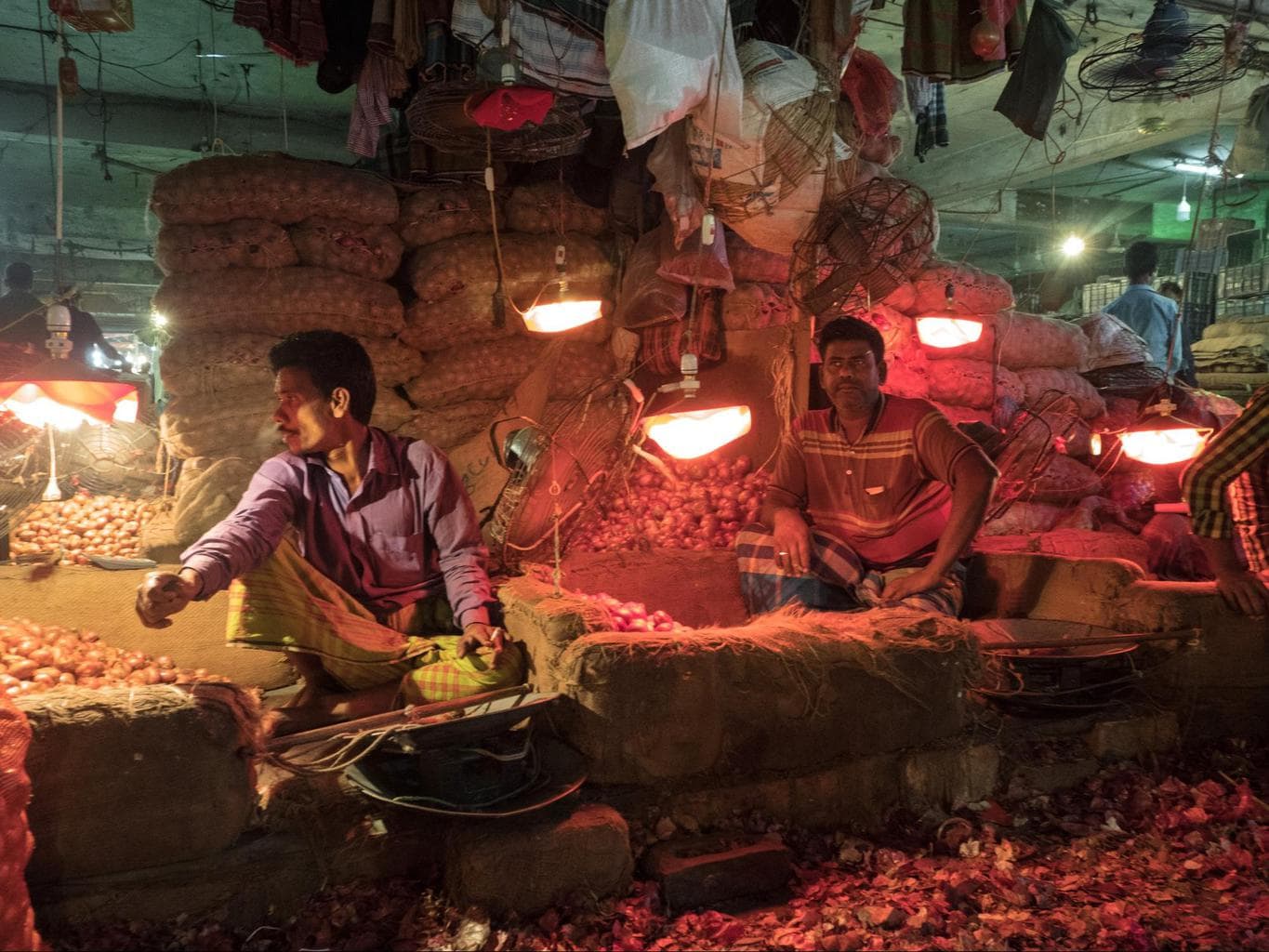
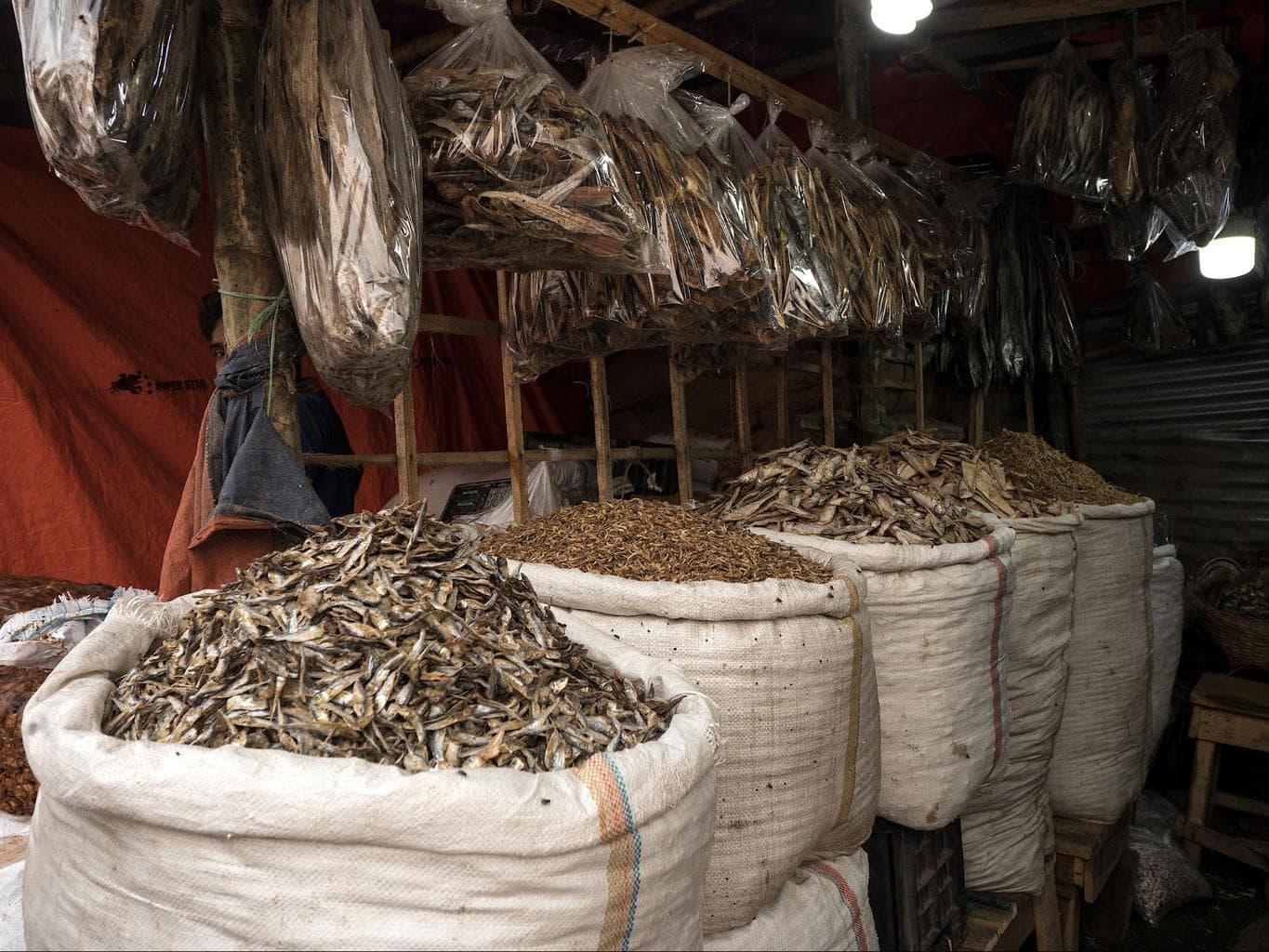
Lucky sellers have a small space in the covered area, and a colored lamp, the same shade as the vegetable they are selling (orange for carrots, red for capsicum) to enhance their appearance.
The area is chaotic, and crowded in the wee hours of the morning, before 7am. By noon, most of the traders will be gone. Occasionally, a train runs through, on the overpass track. Don’t miss it, the image of locals sitting on its roof are a typical sight.
Beware of pickpockets and oncoming rickshaws that will pop up from anywhere. While I did not feel unsafe, the locals were unaccustomed to seeing foreigners (let alone uncovered women) and extremely curious but smiling. I visited with my partner and a local guide.
Bangladesh National Museum
The National Museum of Bangladesh hosts artifacts and information about the country’s history and its road to independence. There is everything here, from all the details about the country’s flora and fauna to how it obtained independence.
You will learn about the plants and animals of Bangladesh (including the tigers in the Sundarbans), archeological pieces recovered from across the country, ethnographic objects from the country’s many ethnic groups (there is a canon from Tipu Sultan).
In the top levels of the museum there is a contemporary art exhibition from local artists. You should plan for a couple of hours here as the building has lots of rooms. More information here.
Dhakeshwari Mandir
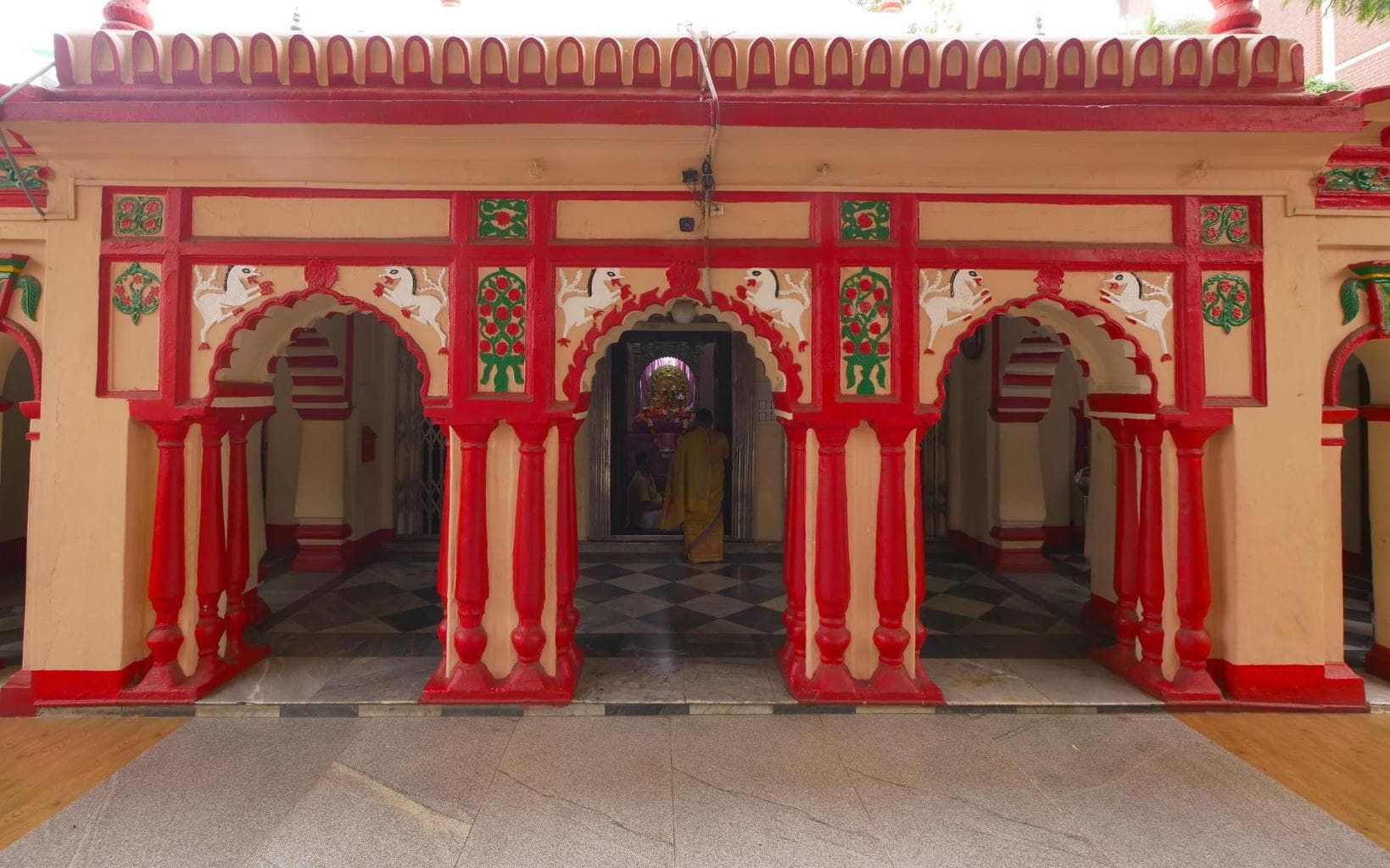
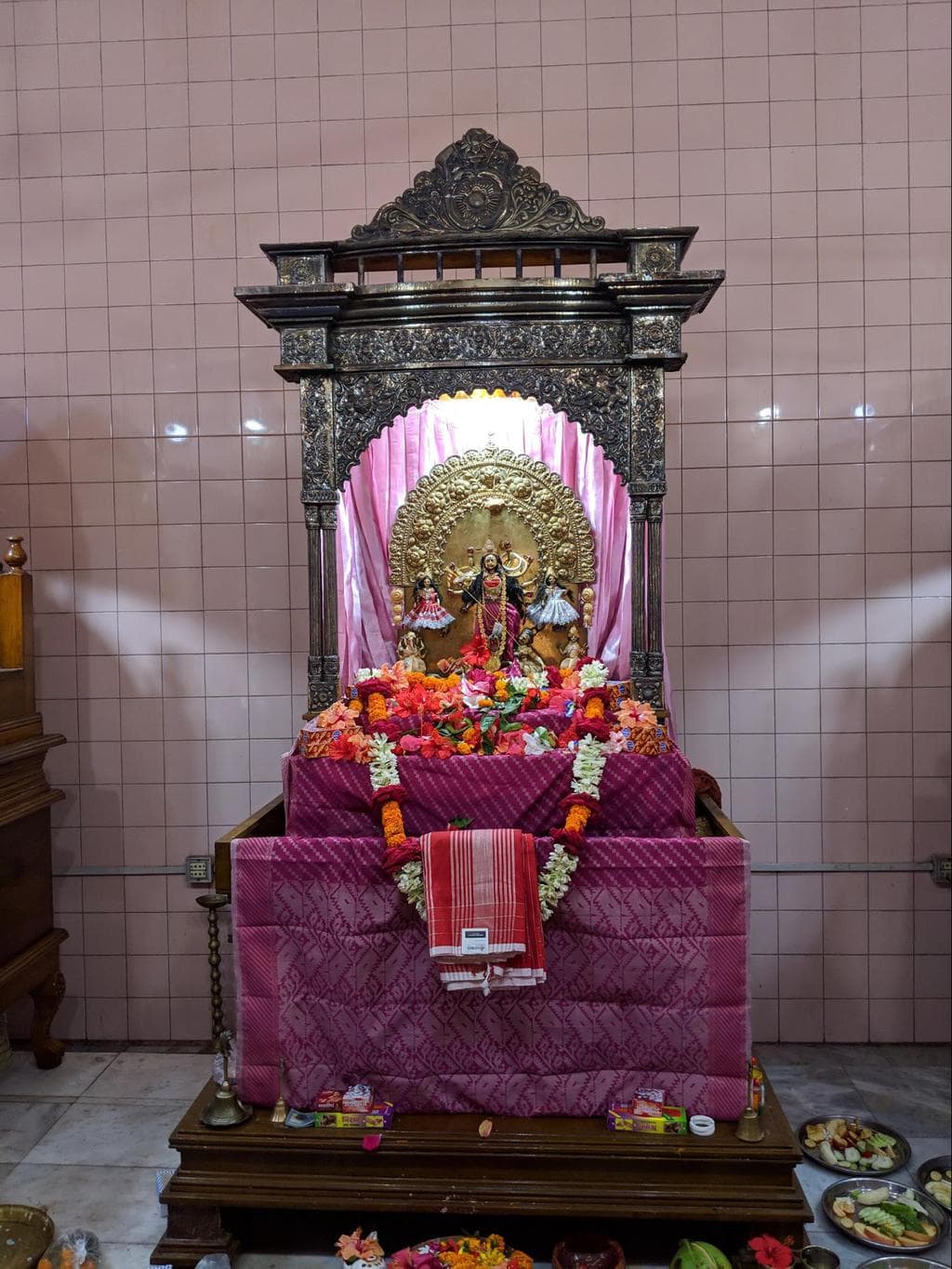
This funky and modern-looking pink and red Hindu temple devoted to the Dhakeshwari Goddess is one of the most important religious places to visit in Dhaka.
While the majority of the population of Bangladesh is Muslim, this Hindu temple is revered and considered of high importance and it is believed to have given the city its name (Dhakeshwari = Temple of the Goddess of Dhaka).
The temple is owned by the government and it was built by an agent of the East India Company in the 18th century over a previous 12th century construction making it an important historical place in Dhaka.
Legend has it that the temple was built by a Sena King who had a dream about a Durga statue hidden in a forest. He found it and placed it in the temple dedicated to Durga.
The original 800 year old idol was either destroyed during the War of Liberation or taken to Kolkata in India to hide it, depending on who you ask (our guide assured us it was in India). The image you see today is a replica.
The temple is an important center of Hindu life in the city and has suffered a lot through the years. The Liberation War against Pakistan caused several of the buildings to be destroyed and during Pakistan rule Hinduism and the temple were suppressed.
The annual Bengali Durga Puja festival takes place in the temple every year and is the most important event. It is common to see locals preparing meals for services or for weddings taking place at the temple.
Dhakeshwari Temple is open to everyone, free of charge, and usually guarded by the police because of its religious importance, and it is a very peaceful place. Make sure you include it in your list of tourist spots in Dhaka. Read more about it here.
Lalbagh Fort
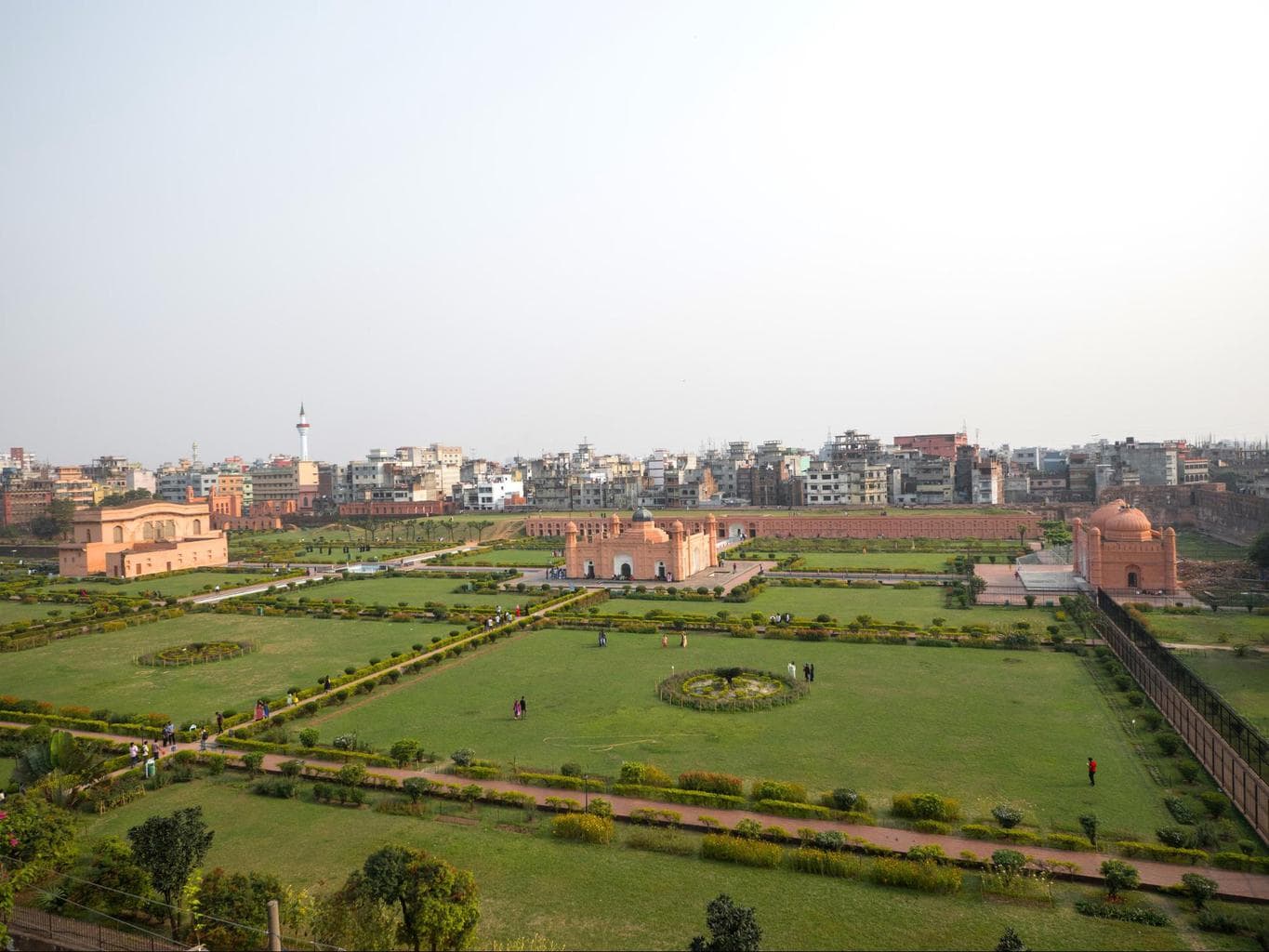
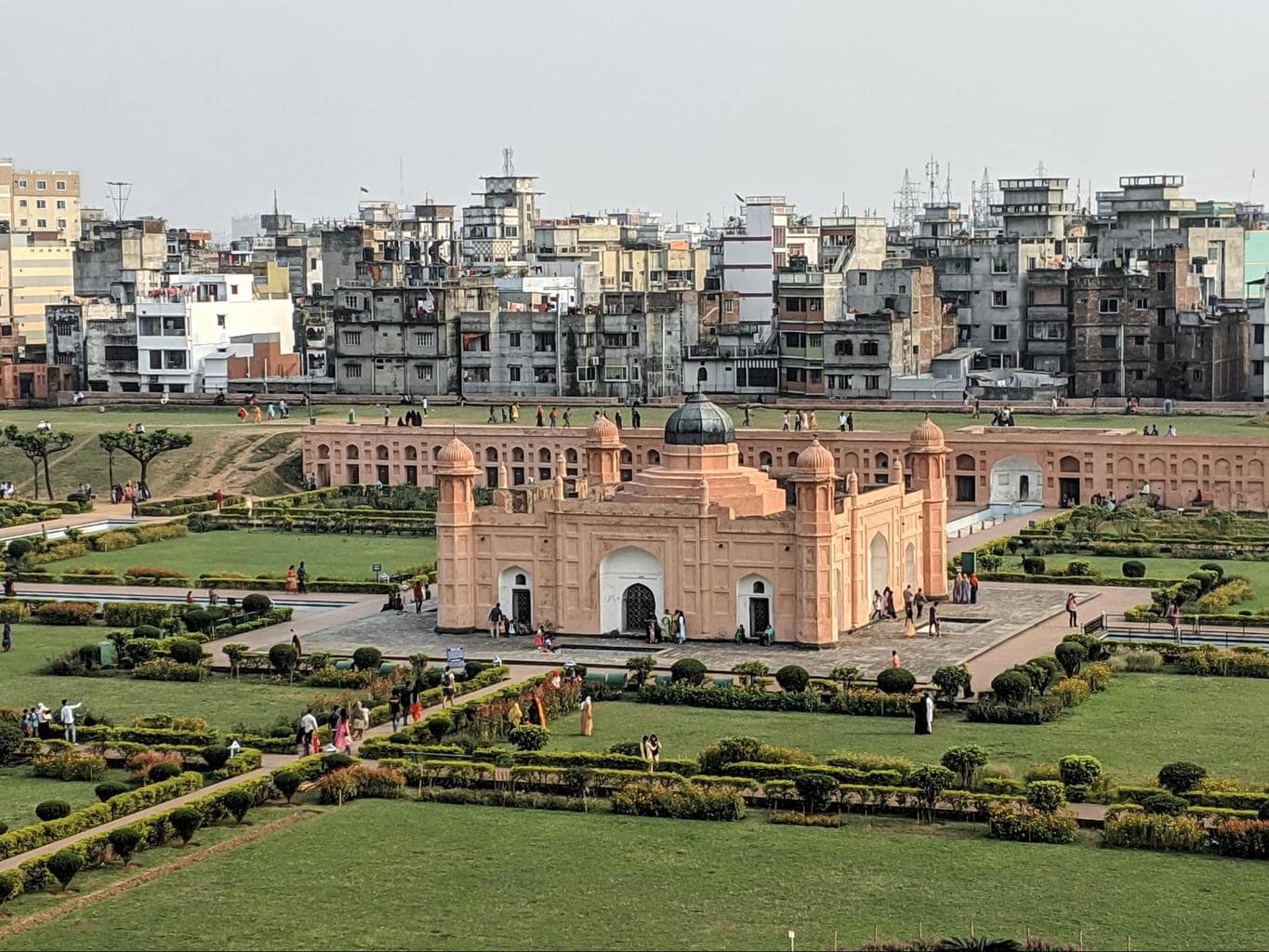
Lalbagh Fort is the most beautiful of all the places to see in Dhaka and takes you miles away from the noise and chaos of Old Dhaka, just a few meters away. It is also one of the few tentative UNESCO sites for Bangladesh.
The fort is unfinished but its construction started in 1677 by Prince Muhammad Azam, Viceroy of Bengal, and was continued by his uncle, Shaista Khan when he had to travel to help his father, Mughal Emperor Aurangzeb in a war he was fighting.
While away, his future wife, amicably known as Pari Bibi (Fair Lady) and daughter of Shaista Khan, died. Convinced that the fort was cursed, the uncle abandoned its construction and left it as it was. Some of the legends around the fort’s dark past have survived until today and locals still believe them.
Prince Muhammad Azam ascended to the throne after his father’s death in 1707, but was killed by his half-brothers in a battle for power just three months after. He was of the feared and regal Timurid lineage, considered to be direct descendants of Genghis Khan, thanks to his Persian mother.
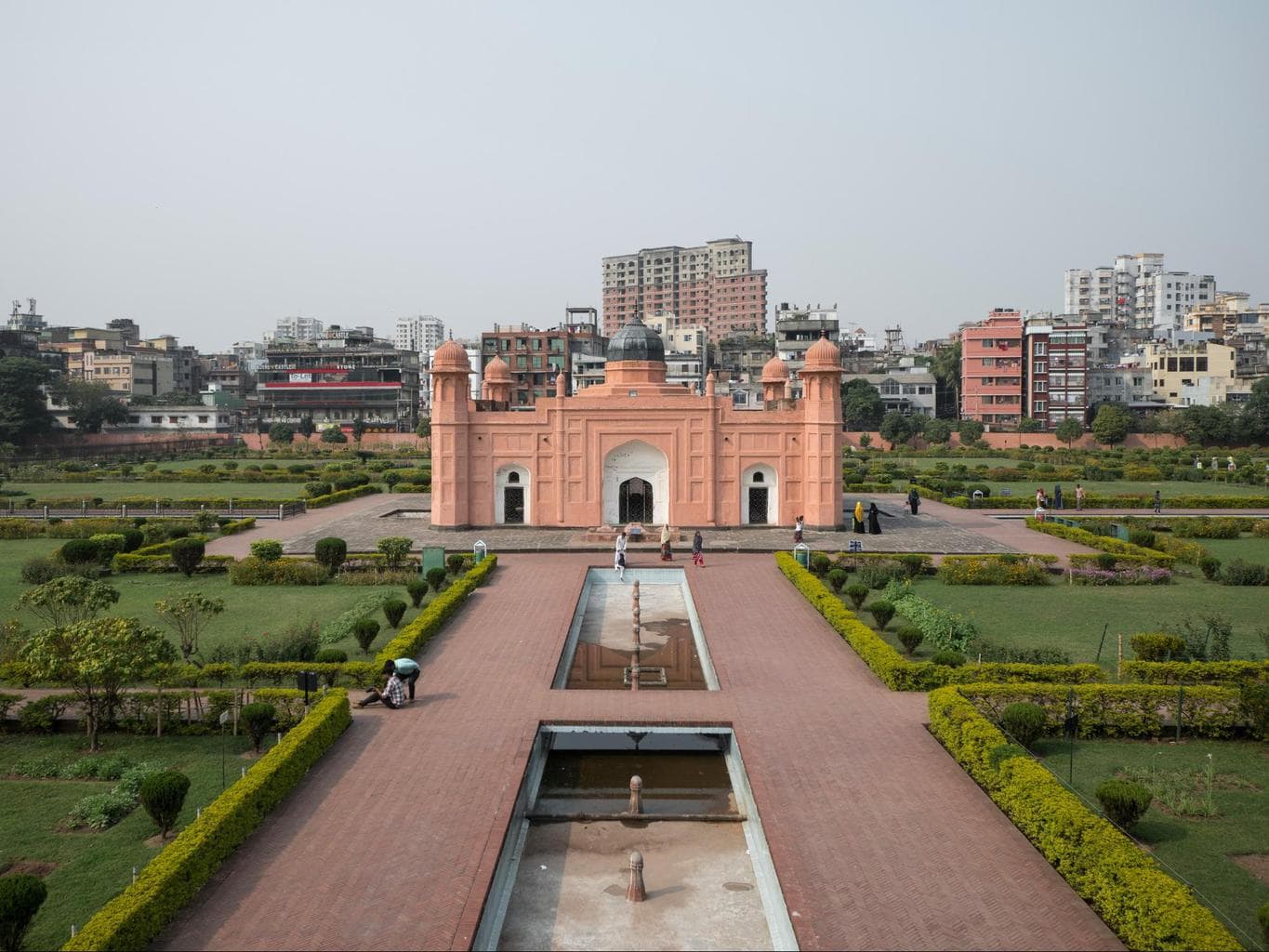
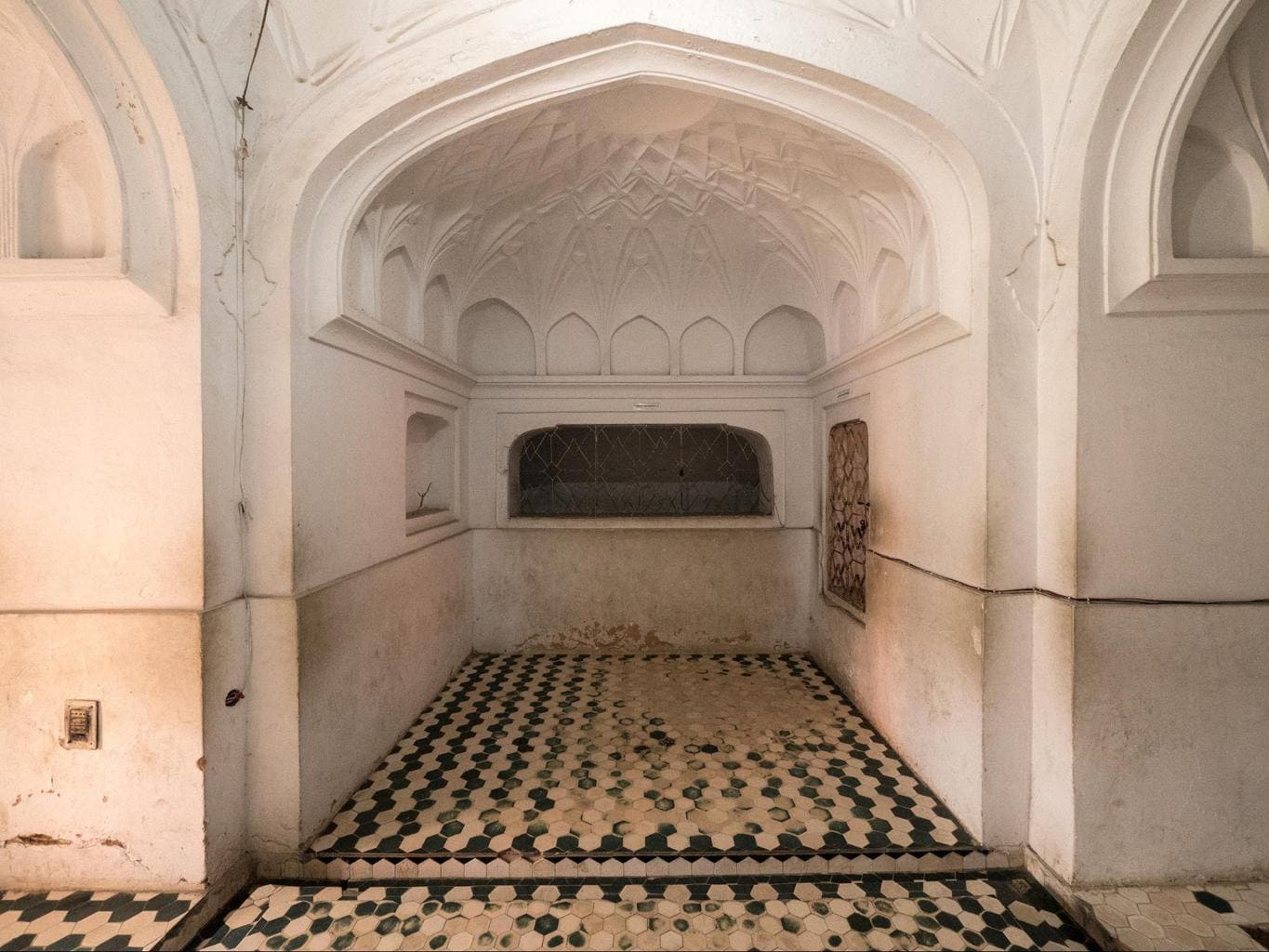
Lalbagh Fort is a typical Mughal complex very similar in nature to Jahangir’s Tomb in Lahore, who was actually the Prince’s great grandfather and father of the creator of the Taj Mahal, and had it been finished, I have no doubt it would have been as grand and beautiful.
Originally, the fort was built on the banks of the River Buriganga and was meant to be a palace fort whose walls and structure would protect the royal family living inside.
What we can see today is the renovation work of the fort done after independence by the Bangladeshi Department of Archeology. After its abandonment, the fort was unoccupied until 1844 when the successor of Shaista Khan leased it to the British and these turned it into the police headquarters.
Visiting the fort is a must thing to do in Dhaka and its rectangular grounds are a popular place for locals to come enjoy a picnic with friends and family in the evenings and weekends. There is little shade, other than the one provided by the buildings, but the green grass and well tended-to bushes very pleasant.
There are currently three structures remaining aligned along the middle axis, as well as parts of the fortress walls and towers which has probably become the most popular tourist spot in Dhaka.
In the middle is the Mausoleum of Pari Bibi who is buried here, to the right Quilla Mosque and to the left the Diwan, or Hall of Audience and residence of the Governor.
The Diwan hosts a small museum of the fort, with the artifacts and objects recovered on display, including pictures of the Prince and his uncle. You can also see the hammam and some of their swords and clothes.
The octagonal mausoleum is open to the public. The main room, in the middle, is covered in beautiful white marble from Jaipur, the tomb sits on a pedestal in the middle of the room and is made of black basalt rock. It is surrounded by eight rooms. There are (non working) fountains at either side of the building.
The mosque is still a working religious building so only accessible to Muslims. Its pink facade and three bulbous domes with three matching entrances are reminiscent of the Saracene architectural style of Chennai’s colonial buildings.
What I found most interesting are the fortified constructions at each corner of the fortress walls which served as defensive structures. If you explore the one that is closer to the Diwan, in the south, you will see that it is in a more advanced state than the other ones. It’s three story minaret is beautiful.
You can also walk over the fortress walls to the other side of the entrance to the fort and the bastions. It is common to see Bangadeshi teenagers sitting around or couples people watching and talking on this very historical place in Dhaka.
Under the bastions on the southern walls are several passages and alleys and even a small maze that is thought to have been added to distract invading armies.
Many legends point at the fact that the fort had a secret passage coming out at the other side of the river (our guide also shared that story with us) but the tunnel is no longer visible.
Baitul Mukarram National Mosque
Considered the national mosque of Bangladesh because of its size, which can accommodate 30,000 people, Baitul Mukarram National Mosque is among the top-10 largest mosques in the world and a unique tourist spot in Dhaka, mostly because it is not visited by many.
Unlike other historical places in Dhaka, this mosque is relatively new, completed in the 1960s, and has a very unique design which blends Mughal elements with a cubic shape that resembles the Kasbah in Mecca. It also lacks some of the typical mosque elements such as a cupola and minarets.
You won’t be able to go in as a non-Muslim but the building’s structure can be appreciated from the outside. Admire the white marble square and the golden dome. On Fridays, the holy day in Islam, the mosque is packed.
Old Dhaka
Old Dhaka is a pedestrian, bike, motorbike and rickshaw only area and it is where the action happens and the most popular tourist spot in Dhaka, visited by anyone who makes it to the city and probably the image that comes to mind when you think of it.
Old Dhaka is the most interesting and colorful place to see in Dhaka and well worth at least half a day of exploration and try some Bangladeshi street foods.
I highly recommend getting a guide for your visit, not just because of safety or because you can’t do it alone but because they can provide commentary, explanations about the culture and point at things you would miss. They also help interact with the locals who don’t speak English.
There is close to no information online about all the sights in this part of the city so without a guide you will miss the cultural understanding of what you see. I hired a private guide and driver for the day to visit almost all of the places to visit in Dhaka on this list.
Here are some options for a tour:
- Walking tour with a local of Old Dhaka, you can customise the tour to your liking and will explore on foot. If you want to enter into museums (i.e. Ahsan Manzil) or get food or drinks, then you will have to pay separately. This tour starts in the area you want to explore so you need to get there on your own, which is relatively easy with Uber from your hotel. Book it here.
- If you want to see what the city looks like at night, when it is less hot, this tour explores Dhaka after dark and also takes in Curzon Hall in the University of Dhaka and it is mostly about street food. Book it here.
Star Mosque
Popularly referred to as Tara Mosque or Star Mosque, this beautiful one storey mosque located near the Armenian Church in the heart of Old Dhaka is a slice of peace and tranquility among the nerve-wrecking rickshaw traffic that cloaks the streets of this part of the city.
Its name comes from the many star shapes on the walls and domes, and a tiled ablution fountain located in front of the mosque which is often empty.
The mosque is breathtaking for its interior walls covered in colorful tiles with flower patterns. The level of detail in every tile, coupled with the fact that all the walls and ceiling are covered in it gives the mosque a rather tranquil atmosphere. This is a must visit tourist spot in Dhaka.
But it was not built to be this way.
The mosque was originally constructed sometime in the 18th or 19th century, the specific date is unknown because the mosque is not dated, but it was done during the Mughal Empire and was of smaller and more modest design, with only three domes, the ones on the left, and without any of the tiles that you can see today.
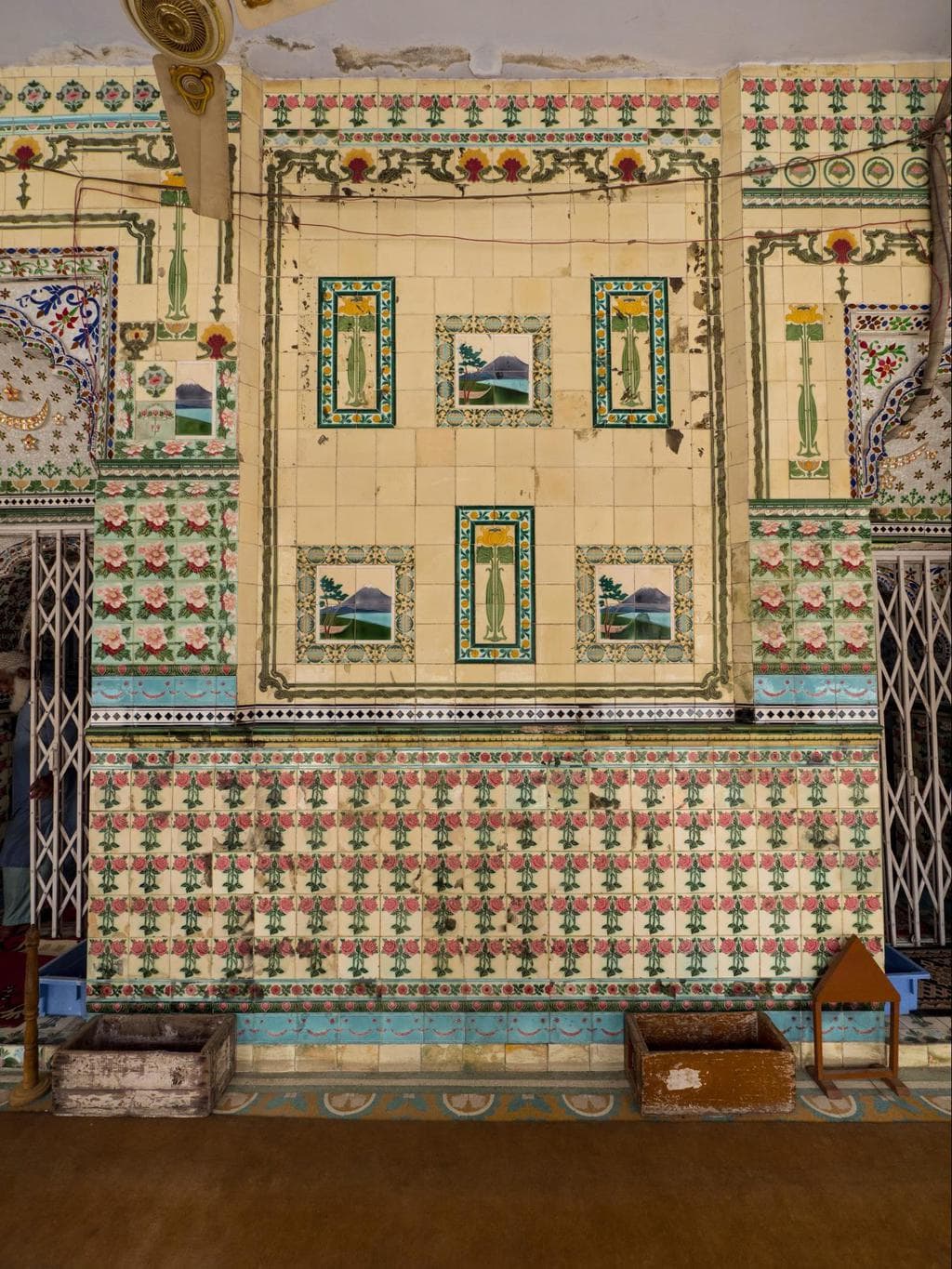
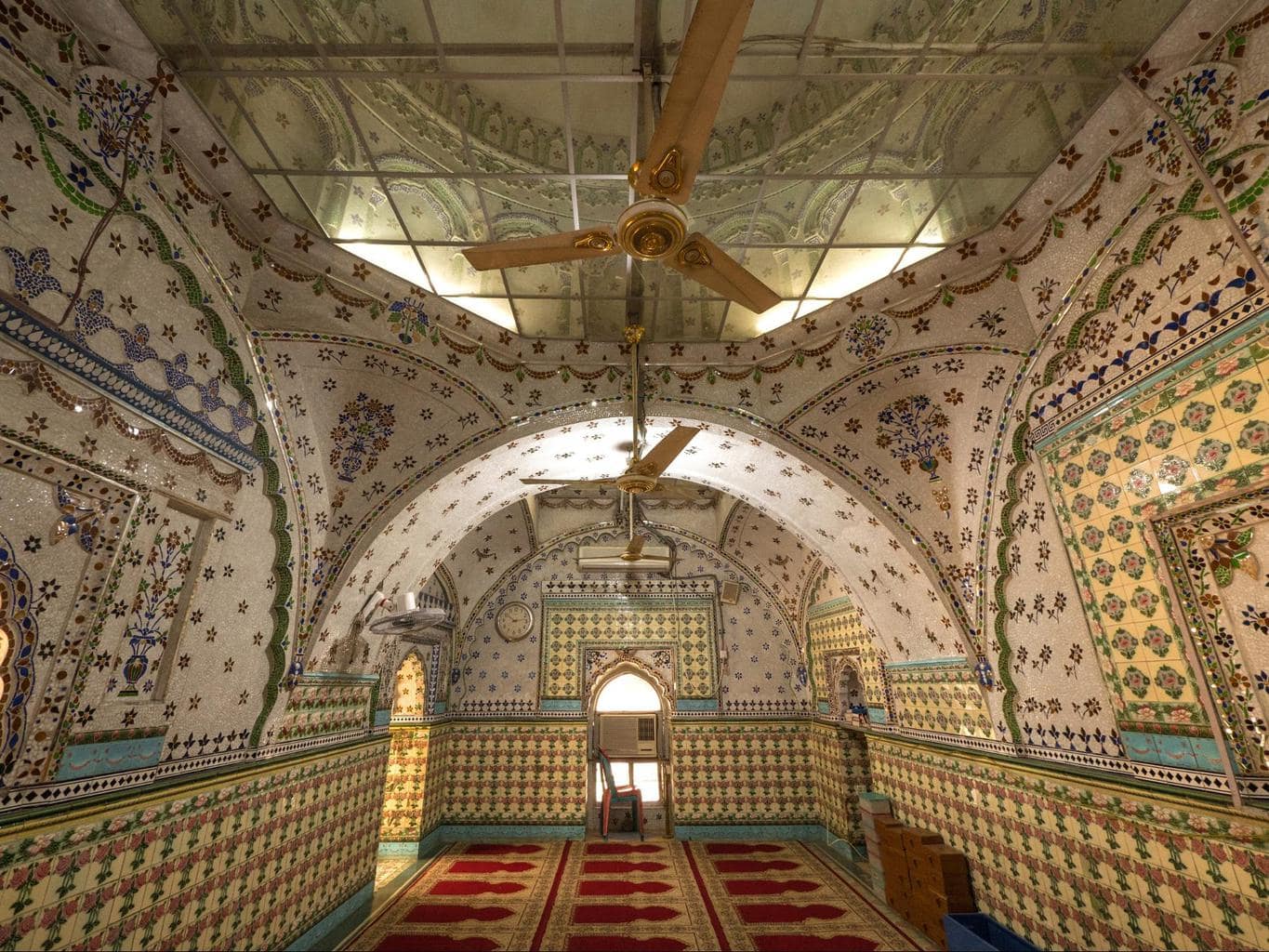
It was a merchant who renovated and decorated the mosque in 1926 using the Chini Tikri technique which is similar to Gaudi’s “trencadis” technique used in many of his buildings such as La Sagrada Familia. He also added an arched verandah in front and the star-shaped fountain.
To do that, he imported fine colorful tiles from England and Japan and hired local artisans to use them to decorate the walls and domes of the mosque. He also built a school which still provides free education. The most beautiful part of the mosque are the blue star-shaped mosaics on the domes.
The mosque was expanded in 1987 by the government and part of the original structure was damaged. Two more domes were also added. The expansion was not done using the same type of expensive tiles but with a combination of tiles as well as direct painting.
When you go inside you can see which part is the new and less delicate work vis-a-vis the original refined one financed by the wealthy trader.
This mosque can be visited outside of prayer times, just take your shoes off and leave them outside. Women should cover their heads and wear modest clothing, as for all of Dhaka. The prayer hall is covered in carpets as is common of mosques, and is remarkably cool even in the heat of Dhaka.
Armenian Church
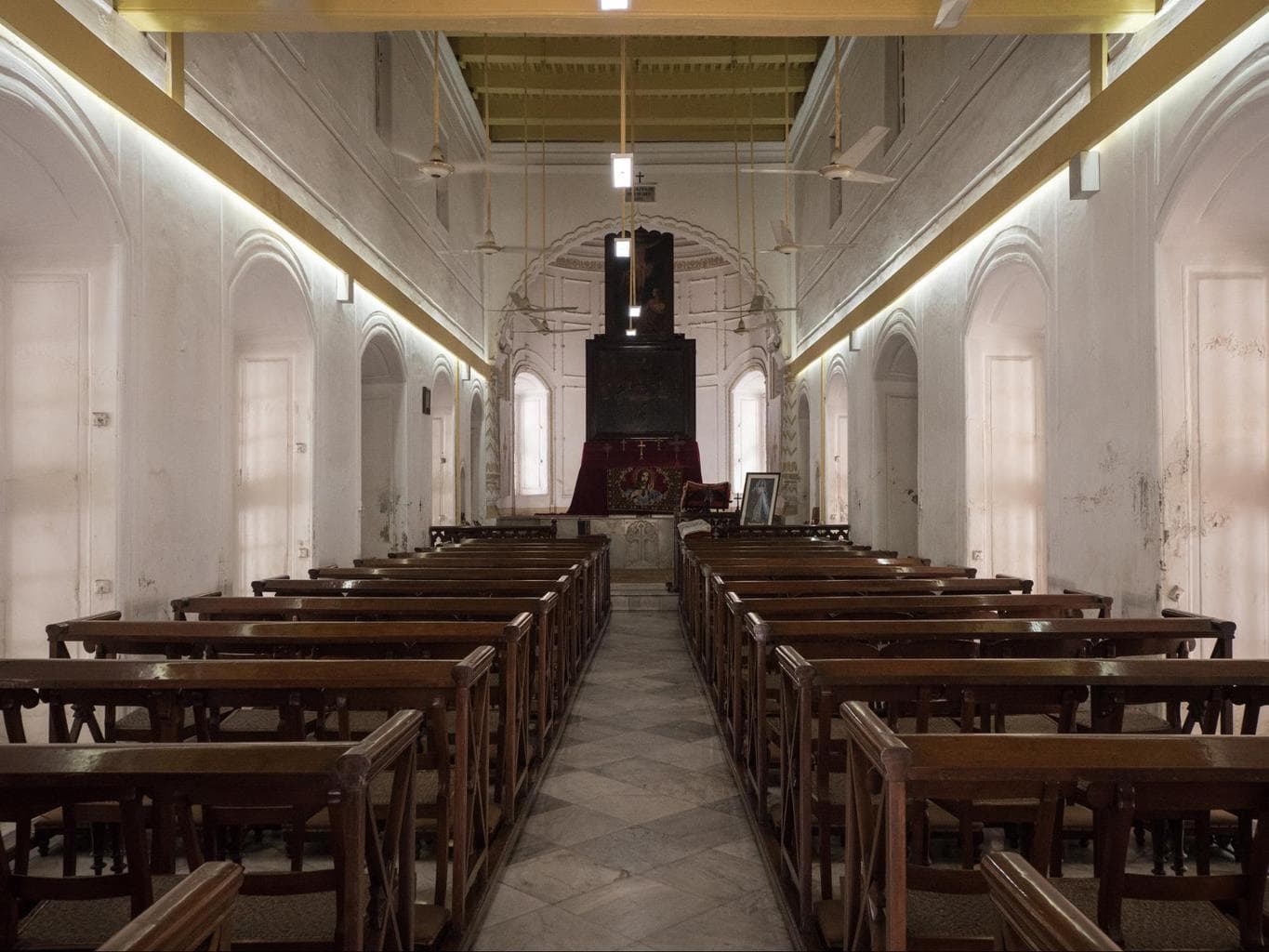
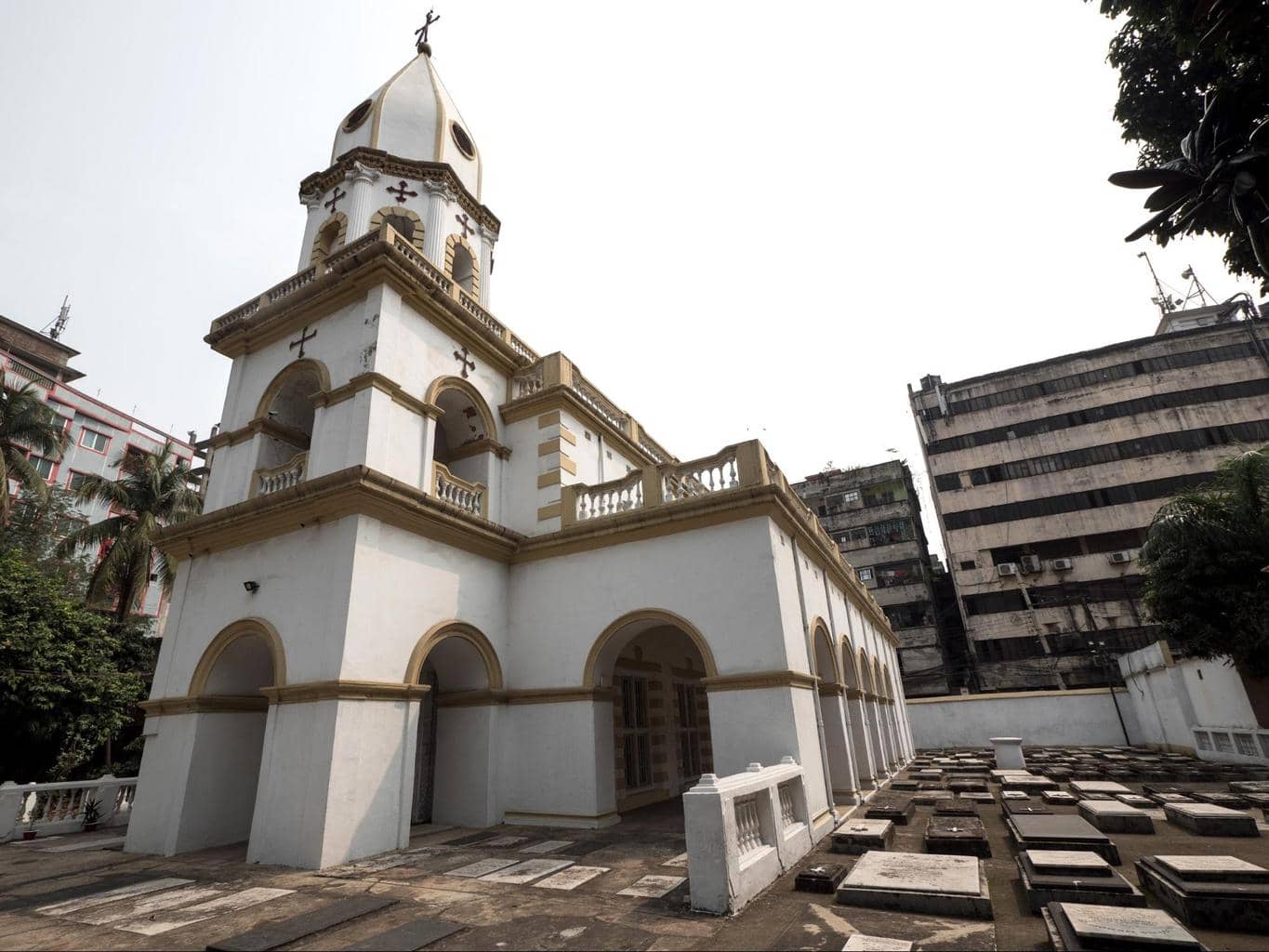
The Armenian Church is the last vestige of Armenian heritage in Dhaka and can only be visited by appointment when the local caretaker will show you around (your guide will have his contact number to arrange).
Alternatively, you can try your luck, knock on the gate and wait for him to come out and show you around this historical place in Dhaka.
The Armenian community used to amount to about 150 people in the past but they have all left so the church is no longer a continuous functioning religious institution. The caretaker is Muslim and the building is maintained as a heritage monument with the occasional service being held for special occasions with visiting priests.
The church was built in 1781 by the local Armenian trading community and is a tall yet cozy building of white and yellow facades surrounded by tombs in a very large garden-cemetery.
Inside, wooden benches are still intact from when it still held mass and there is a spiral wooden staircase that takes you to the upper balcony. The white marble altar is from 1915 and the painting of The Last Supper on the altar was painted and donated by Charles Pote in 1849.
The tombstones outside will tell you more about the people who lived here, and help date the church and graveyard. The oldest tomb is from 1714 and belongs to Avietis Lazar, the first Armenian to die in Dhaka.
Similar to the Armenian community in Chennai, Dhaka welcomed many Amernians in the 17th and 18th century when the Mughal Empire’s official language was Persian and Armenian traders would come to the region in search of new opportunities.
Their presence and business success gave name to the street (Armenian Street) and the area it is located in Old Dhaka, known as Armenitola. The church has started the process to apply for UNESCO inclusion in 2019. You can find out about their events here.
Shankhari Bazaar Road
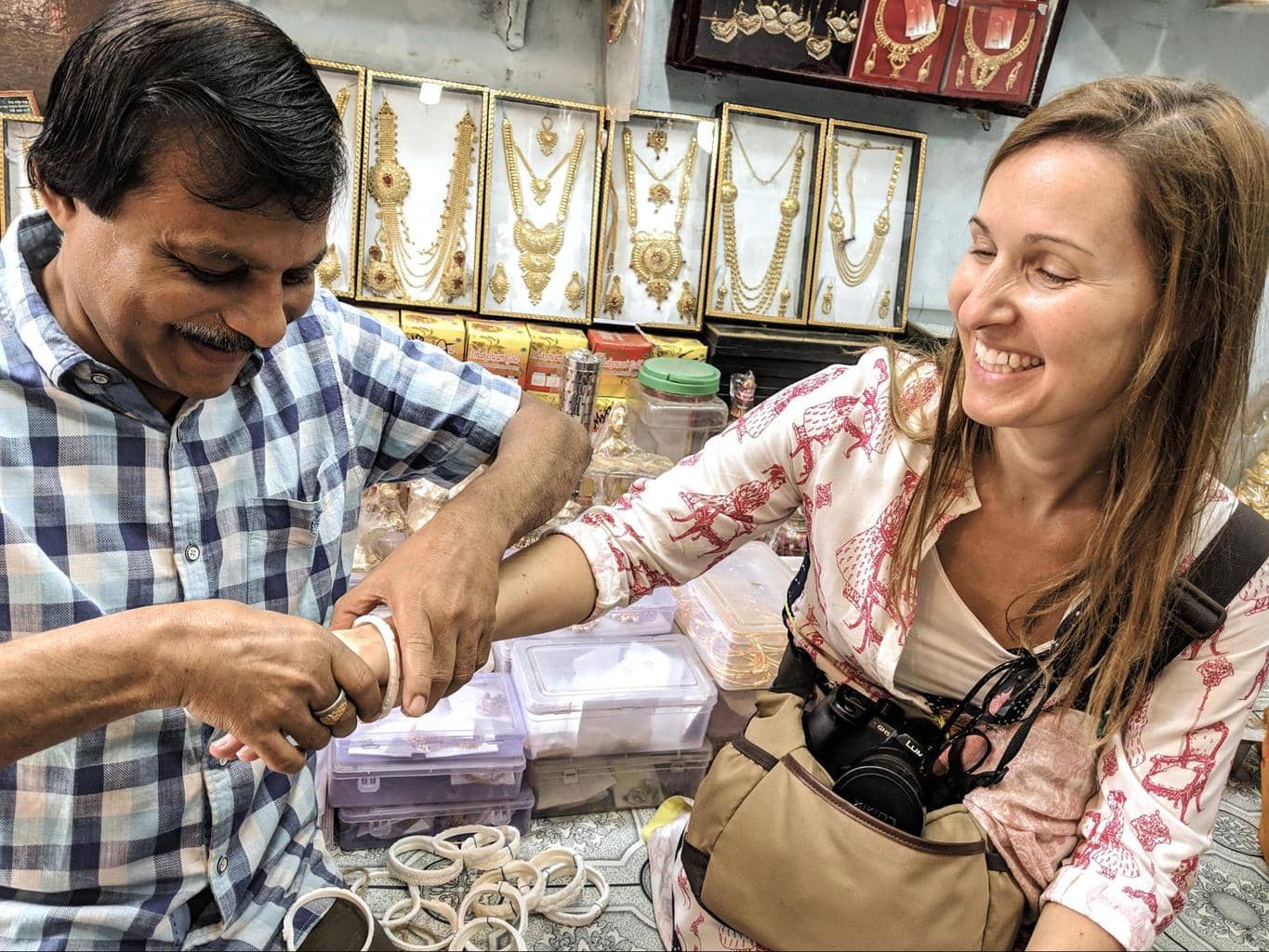
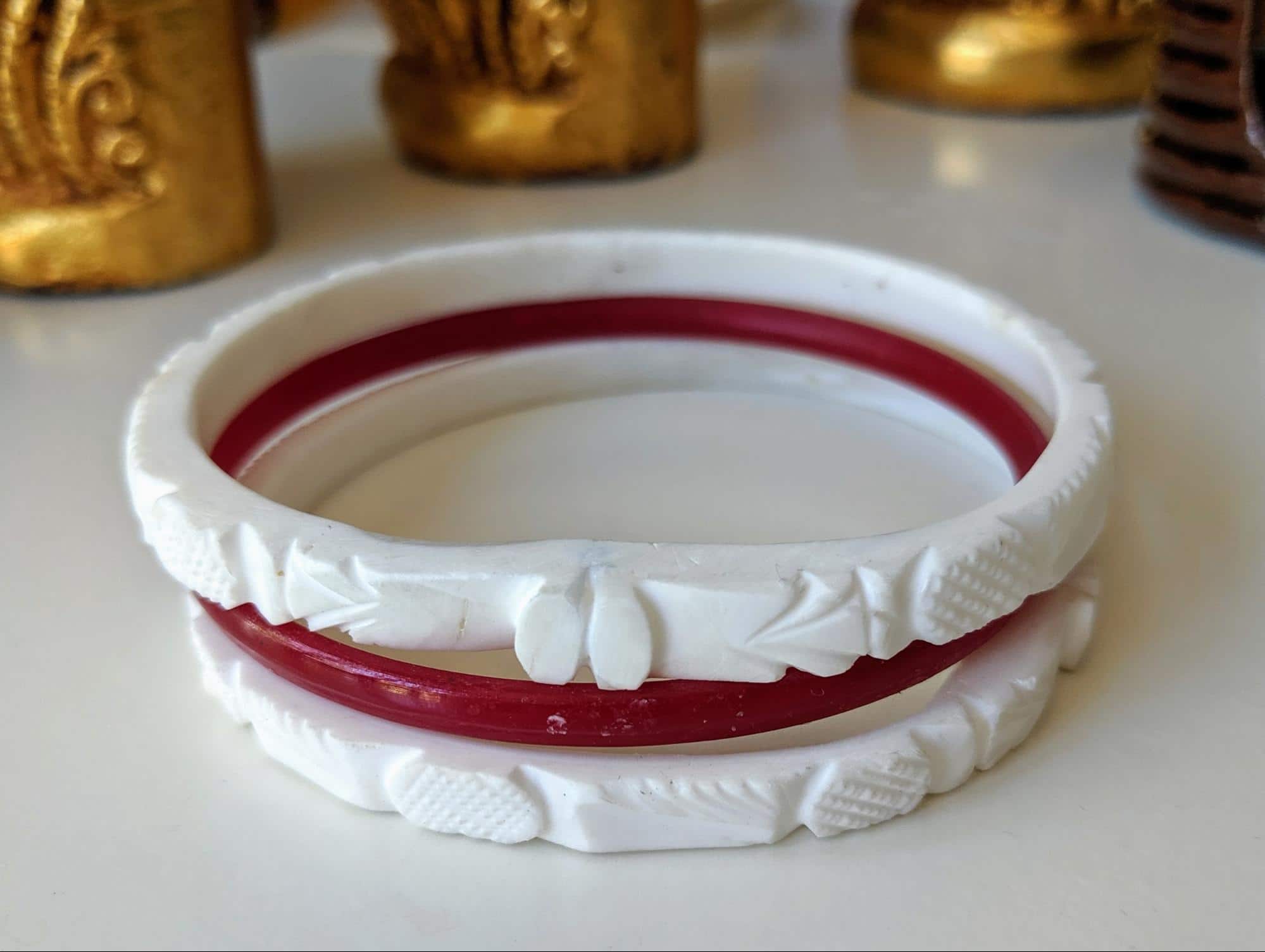
This buzzing and fascinating street in Old Dhaka is the heart of the neighbourhood and a place where you can spend hours just walking into tiny shops, admiring the narrowest of buildings and being entertained by the ongoing traffic of people and rickshaws. This was the place I enjoyed the most visiting and the number one tourist spot in Dhaka.
The name of the street comes from the group that originally inhabited the area, the Hindu Shankhari, which draw their name from a traditional conch shell bangle they make which the women wear when they get married.
Shankha are given to the bride to be on the day of her marriage by the older women. You will see lots of shops selling them and it is well worth it to stop and get into a couple.
The bangles are not very expensive but they are hand carved in beautiful motifs. Once you put them in, you are never to take them out so they are admittedly very narrow and not flexible at all, so it might be a bit painful trying a few in and out until you find the one you like.
Buying some Shankha, a dying art, is one of the nicest things to do in Dhaka, not just for the experience, but also because you will be contributing a bit in keeping this tradition, which is threatened by cheap plastic versions, alive.
Shankhari belong to an artisan Hindu cast and were brought here by the Mughal Emperor in the 17th century and have remained here. This means that the area is a known Hindu stronghold, in a primarily Muslim society, but is far smaller today since the War of Liberation and the massacre of Shankari carried out by the Pakistan Army.
What makes the street extra unique are the commonplace mesh of electricity cables hanging from the very narrow colonial buildings on the street and the designs of the older constructions.
Some of the buildings here can be a mere meter wide, though the majority are about 2-3m wide, most are three storeys high, and have their facades painted in bright colors, some with verandahs with intricate carved designs.
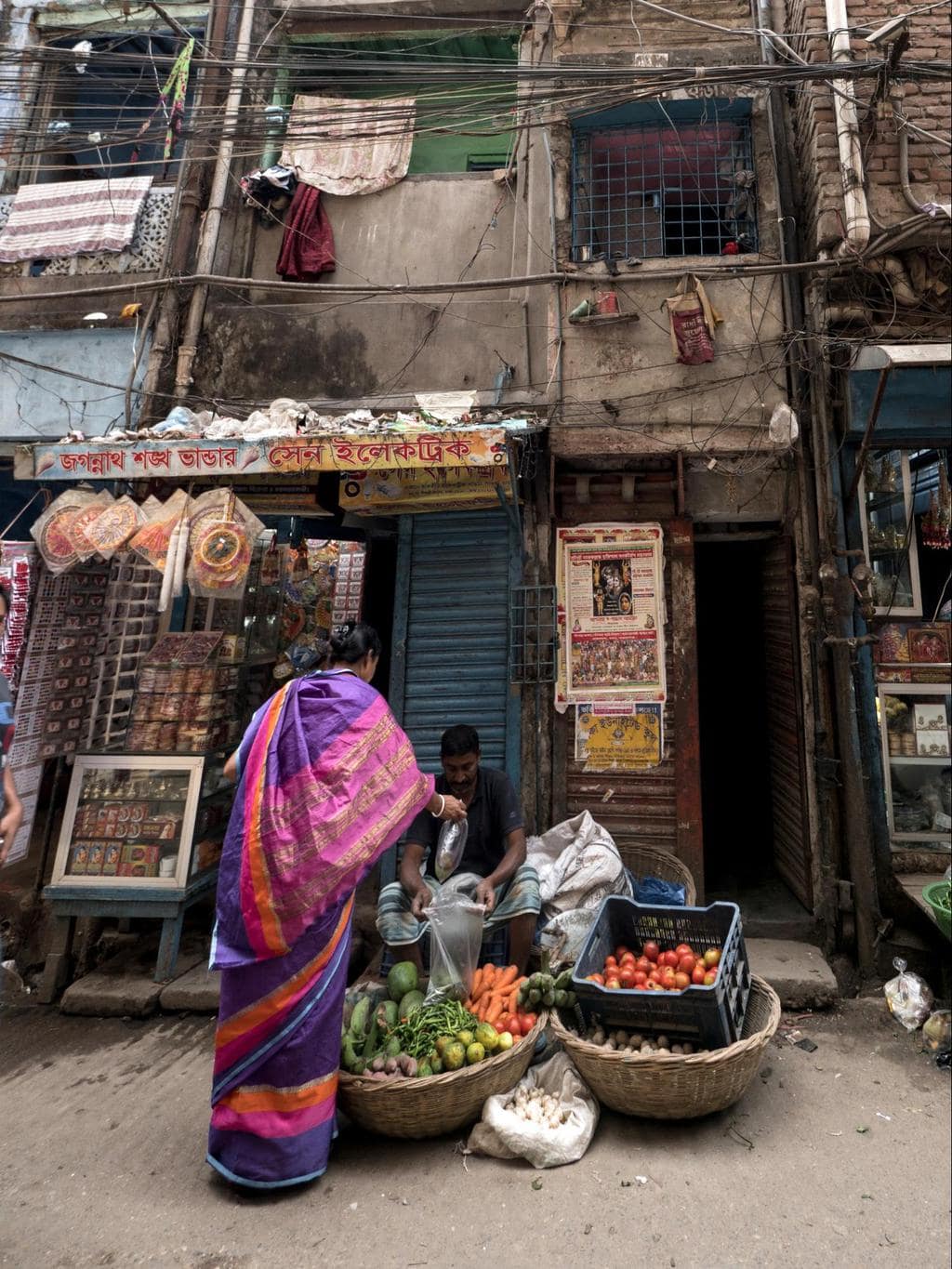
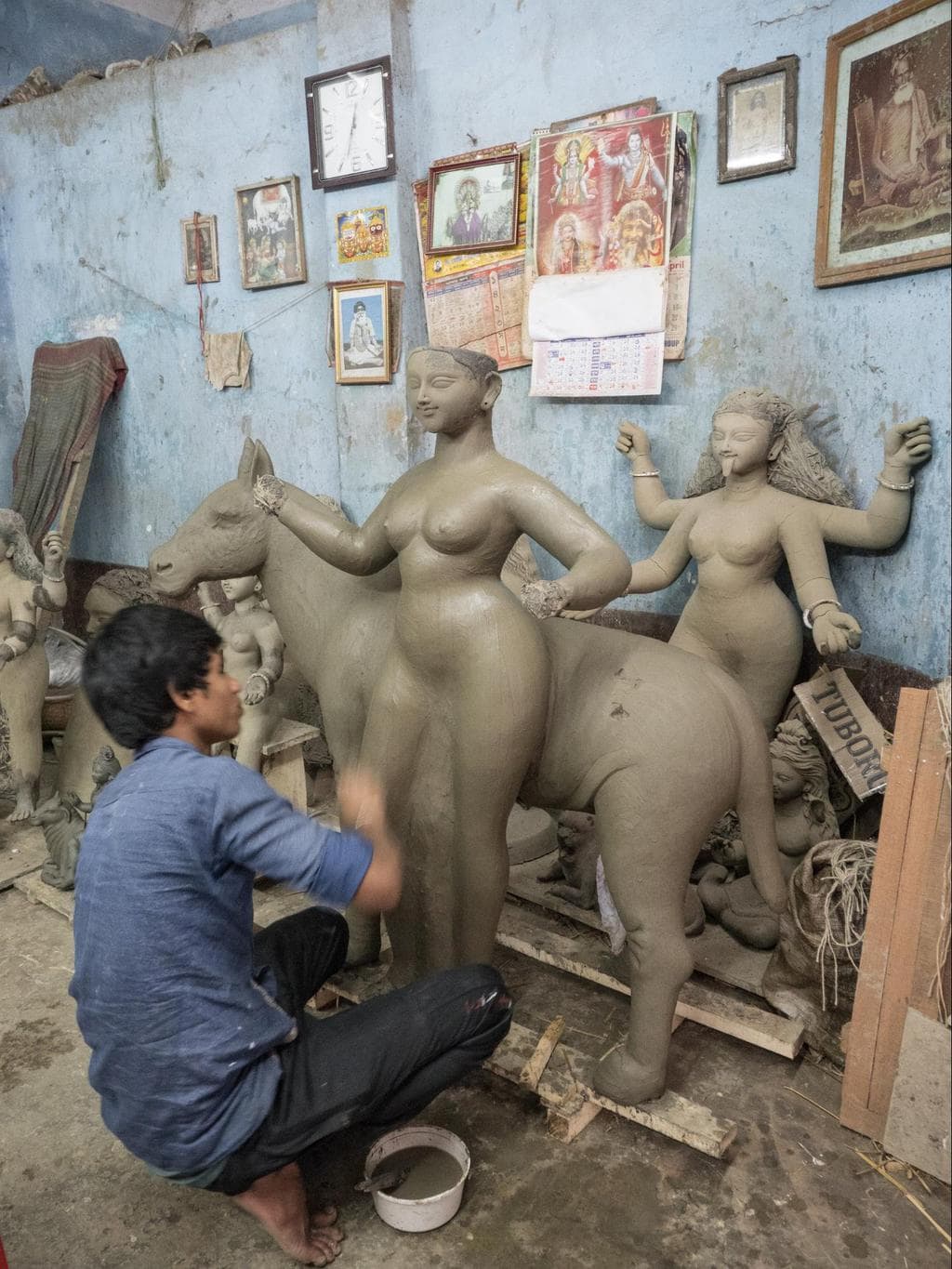
It is incredible to see the amount of people living in such a small street, 10,000 by some estimates, packed into 153 buildings along the 200m street with permanent traffic of rickshaws.
Apart from the Shankhari, you can also look out for another artisan group, the Panitola, who specialise in making statues from tin foil. You will see many shops selling them and artists at work. They produce mostly Hindu idols, on a basis of tin foil and colorful decorations.
Shankhari Bazaar is teeming with temples. Historically, each house had its own temple room, now not all may, but you will see temples and shrines all along.
Needless to say, this is one of the densest areas in an already intensely populated city and it can get a bit too much if you are not used to it so take it easy and always pay attention to oncoming traffic, especially rickshaws, other hand pulled carts and people.
Nawabpur Bazaar
This main road in Old Dhaka is not your usual tourist spot but an interesting place to stroll, since you will most likely come here for Shankhari Bazaar. This area is known as the place to come get spare parts and the street is lined by shop after shop selling all sorts of items.
Ahsan Manzil Museum
This beautiful bright pink European-style palace on the banks of the Buringa River is a fine example of the blend of Mughal and European elements which had become pervasive and aspirational to the wealthy of Bangladesh during the time of the British Raj, in the 19th century and which has come to be known as Indo-Saracenic.
Ahsan Manzil is a complex made of the main building, sitting atop a platform which is 1m high and reached by a flight of stairs, and a large garden with grass and flowers. It is the beauty of the structure which makes it a must-see tourist spot in Dhaka.
At its peak, successful Europeans and dignitaries would arrive at Ahsan Manzil on their beautiful boats and ascend to the building via the staircase.
The construction was carried out by a British company, Martin and Company, and started in 1859. The property had been acquired by Abdul Ghani, the Nawab of Dhaka, in 1830 from a French trading company who were using it as a factory and headquarters and had to be redesigned as his family’s residence.
The design of the building is symmetrical, as was common of the architectural style, and has a verandah that was not originally a European feature, but one that was typical of Indo-Saracenic structures like the ones in Chennai.
The top dome dates from the renovation work carried out after a cyclone that destroyed much of the palace, in 1888. Ahsan Manzil reminded me a lot of the Mysore Palace in India’s state of Karnataka.
The Nawab were important land owners and businessmen in Dhaka at the end of the 19th century. When the Mughal left Dhaka, they started to occupy important positions and gained relevance.
Abdul Ghani was part of the Viceroy’s Council and contributed to the city’s development. Thanks to his strong support and loyalty for the Raj, the family was favored and thrived. The palace was named after his son Ahsan, who took over his business.
They were involved in most of the developments that brought prosperity to the city, from educational institutions to lighting projects. Ahsan Mazil was also the place of many marked moments and hosted politicians and diplomats visiting Dhaka, making it one of the most historical places in Dhaka.
In the middle of the 20th century, the Nawab’s influence and wealth had declined and the government bought the property. Not much was done with it so it became a squatter house until the government took over in 1985 and the building opened as a museum in 1992.
If you visit you can see the objects and possessions of the Nawab family but the interest is really in the building itself.
Take a rickshaw ride
Taking a rickshaw ride is one of the most fun and frightening things to do in Dhaka.
Dhaka is the city of rickshaws. I had read that, I had heard friends say it, but I did not fully understand the meaning of these words.
When they said it’s the city of rickshaws, they meant there are an estimated 1 million rickshaws, maybe more, the city even won a Guinness World Record for the most rickshaws. And that is in comparison with fewer than 300,000 cars.
There are parts of Dhaka, the Old Town, where cars are banned and rickshaws dominate, but that doesn’t mean there are no traffic jams, they are just of a different kind.
The rickshaws in Dhaka are not like the ones in Thailand or anywhere else in India for that matter, they are bicycle rickshaws, physically pulled by the leg strength of the often very old rickshaw riders.
They are also narrow, can barely fit two people, but will fit in incredibly small alleys, even if there is another one coming from the other side. They navigate the potholed streets, and the mud and rocks, and they battle the car traffic.
Rickshaws are the answer to the lack of public transport and of sidewalks in a city with 26 million people (the fourth largest in the world), the world’s most densely populated, and probably the one with the highest percentage of private drivers, if you are going to be stuck in traffic, you might as well do it in an air conditioned car someone else is driving and parking.
I can’t tell you if I enjoyed the ride in Old Dhaka or was too terrified to even open my eyes, probably a mixture of the two, but you can’t leave Old Dhaka without at least spending a few minutes seeing the city from a meter above the ground.
Dhaka Dockyard
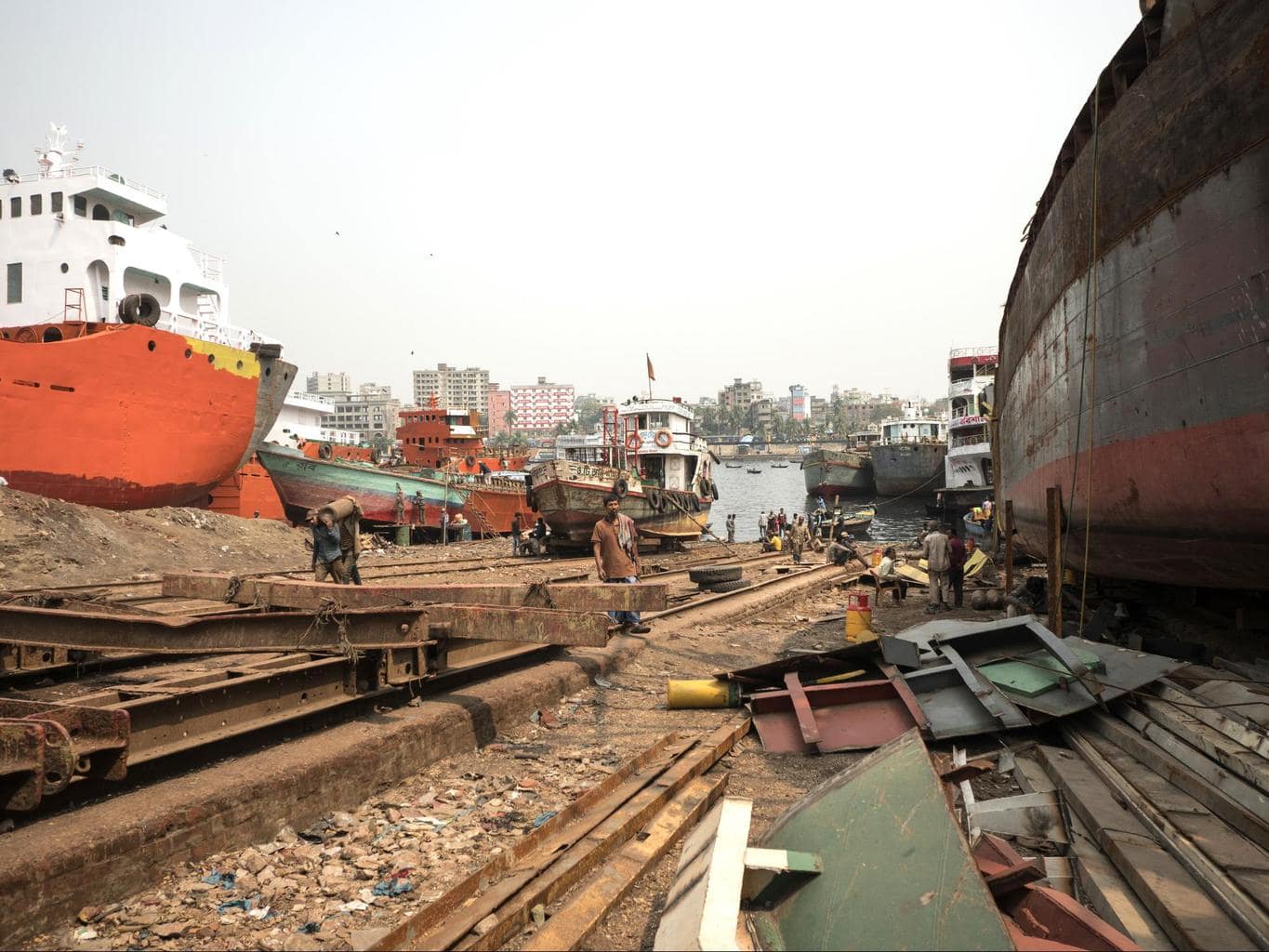
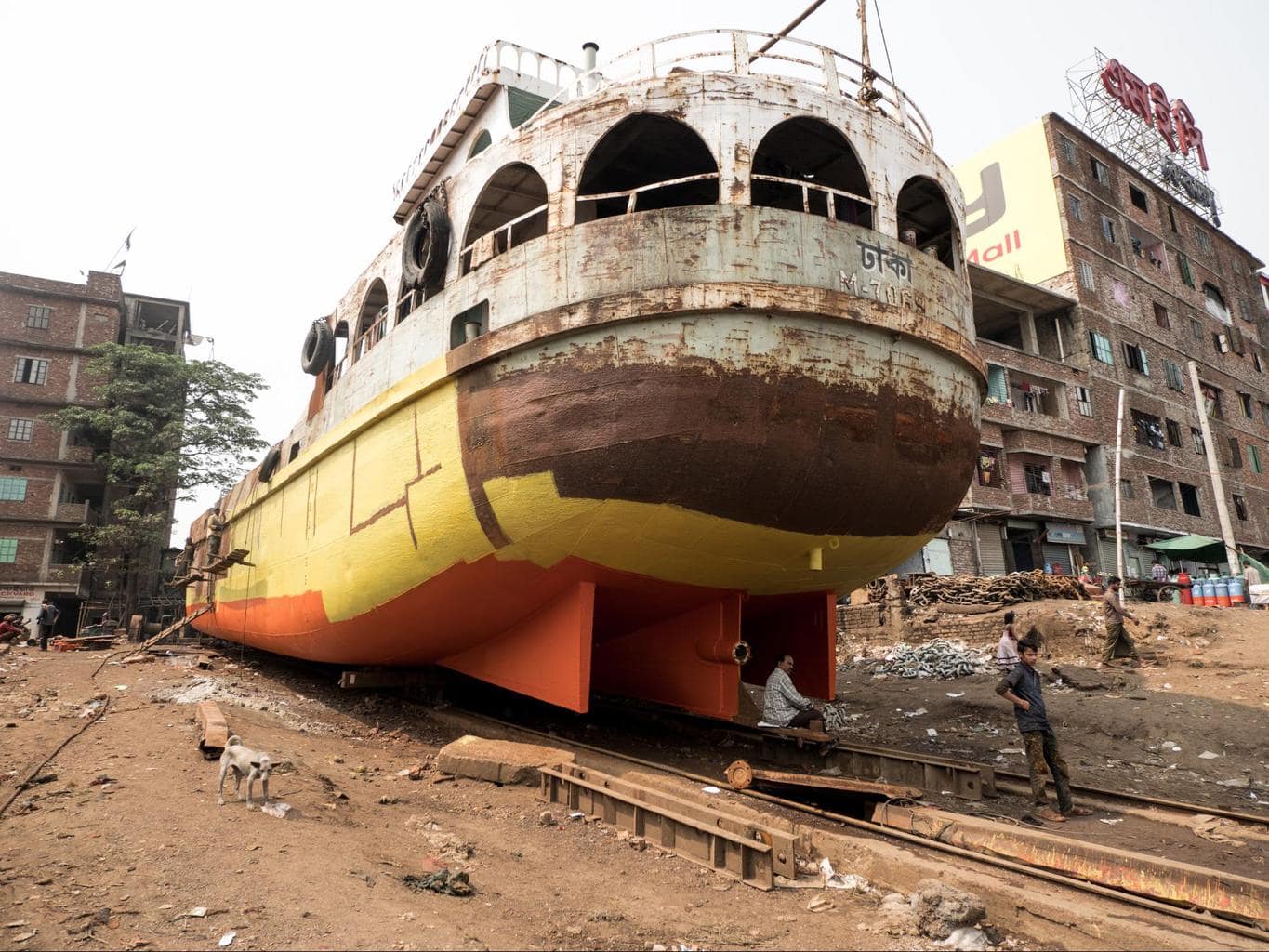
The dockyards have to be the most impressive place to visit in Dhaka. This graveyard of old cargo ships and birthplace of new ones is an incredible place to observe, and one of the last tourist spots in Dhaka a visitor would think of.
Located across the river from Old Dhaka, you need to take a boat from the river port area near Ahsan Manzil and then get off on the other side, upstream, a few minutes after. Traffic on the river is constant and it’ll only cost a few Taka to get a boatman to cross you over. But make sure you pick a solid boat.
The boat ride is an experience in itself, the small wooden boats practically sinking in the filthy and contaminated water and shaking with every larger vessel that overtakes are a metaphor for Bangladeshi farmers, fishermen and the like in front of the goliath industries.
I was frightened to the bones for the duration of the journey, fearing that we might capsize with the next wave and I would die, not because of drowning, but from the incredibly toxic water, black like the dark night.
Once we made it to the other side, I sighed in relief and was glad we got there because this has to be one of the most fascinating things to do in Dhaka and Bangladesh, even though I had to step on the filthiest of mud, as dark as the river water.
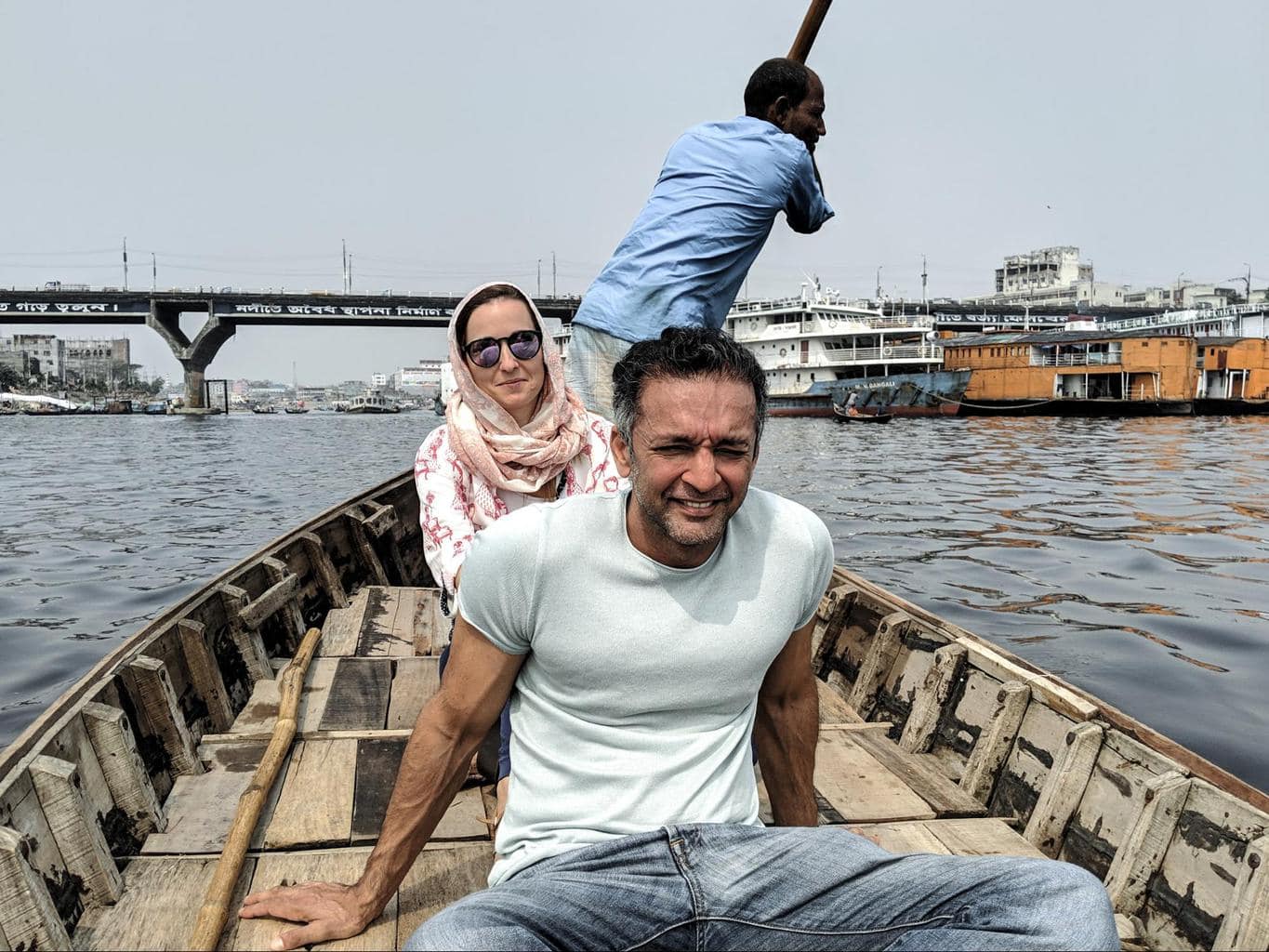
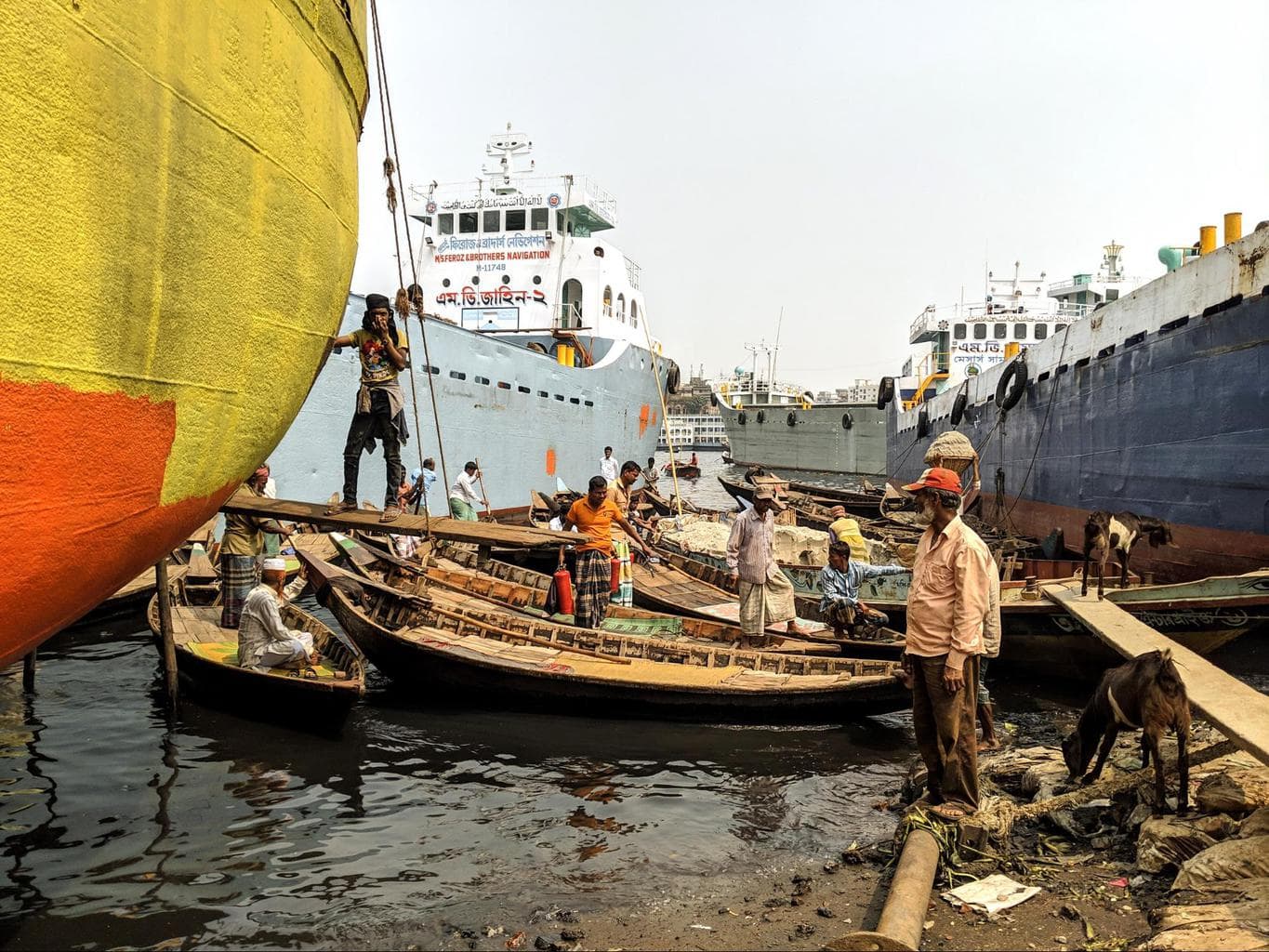
The area is filled with old ships being dismantled and new ones being built. The catch is that everything here is done by bare hand with rudimentary tools and by hardened workers who fight under the blazing Bangladeshi sun, to beat the pieces of metal until they fall apart.
Bangladesh is a known port and its shipyard industry is one of the largest. In the port city of Chittagong, massive shipyards need up to a year to dismantle 30,000 ton container ships from all over the world, all under the tight supervision of the various local and international environmental agencies.
But in Dhaka, this is done at a slightly smaller scale in a way the looks painfully artisanal. Dwarfed by the size of the vessels they are trying to break down, tiny workers hang from the side of a ship, precariously held by basic ropes, barefeet, among starved dogs.
The opportunities for photography are endless and the locals are as curious as the visitor, asking for photos to be taken, smiling ear to ear. But you can’t forget that the underlying reality of life is really tough for these workers, and that safety standards are all but nonexistent.
Don’t get distracted by a photo opportunity and end up stepping on a sharp edge or a nail, or worse yet, falling on a tetanus infected rusted ship part.
University of Dhaka, Curzon Hall
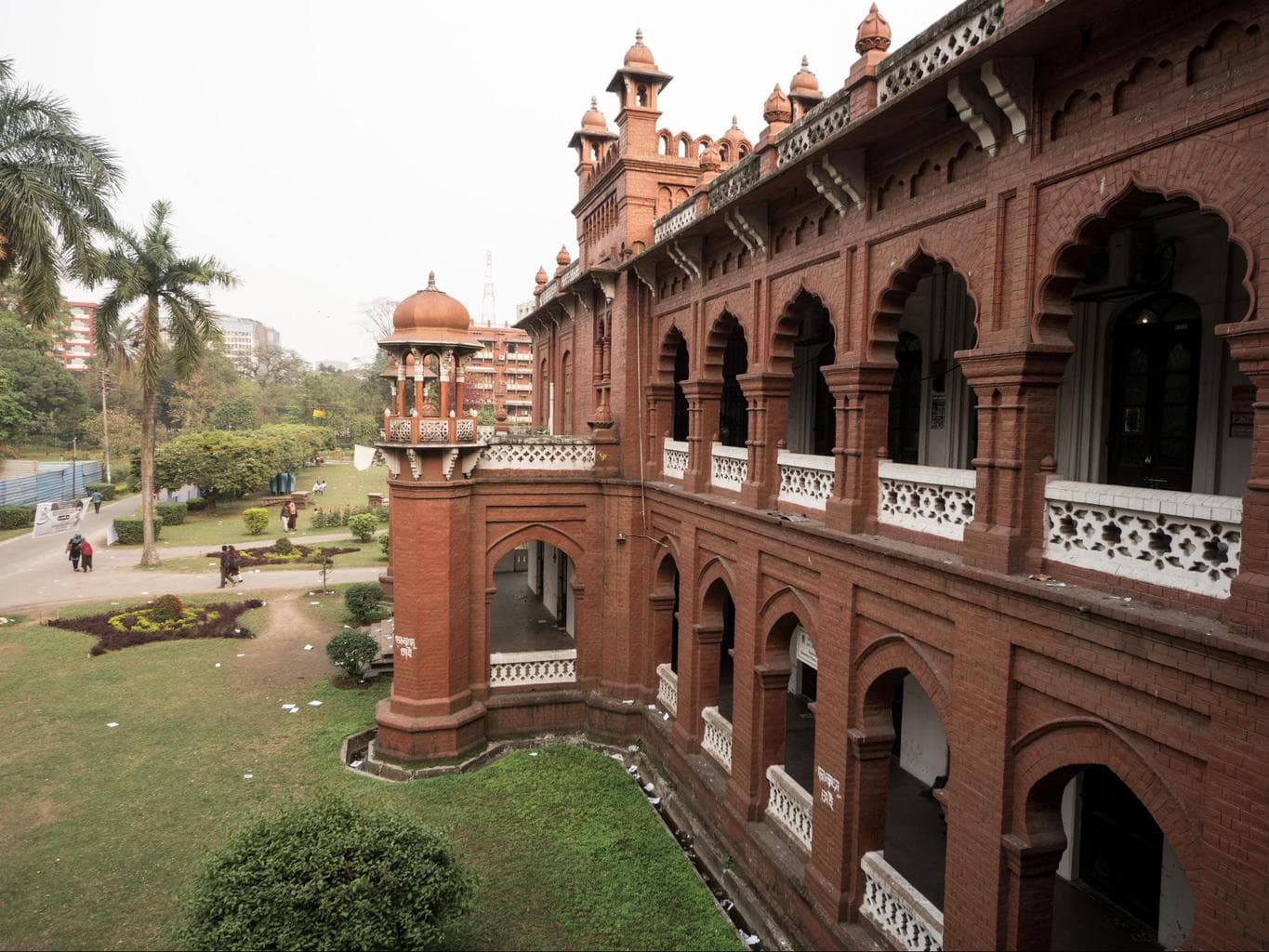
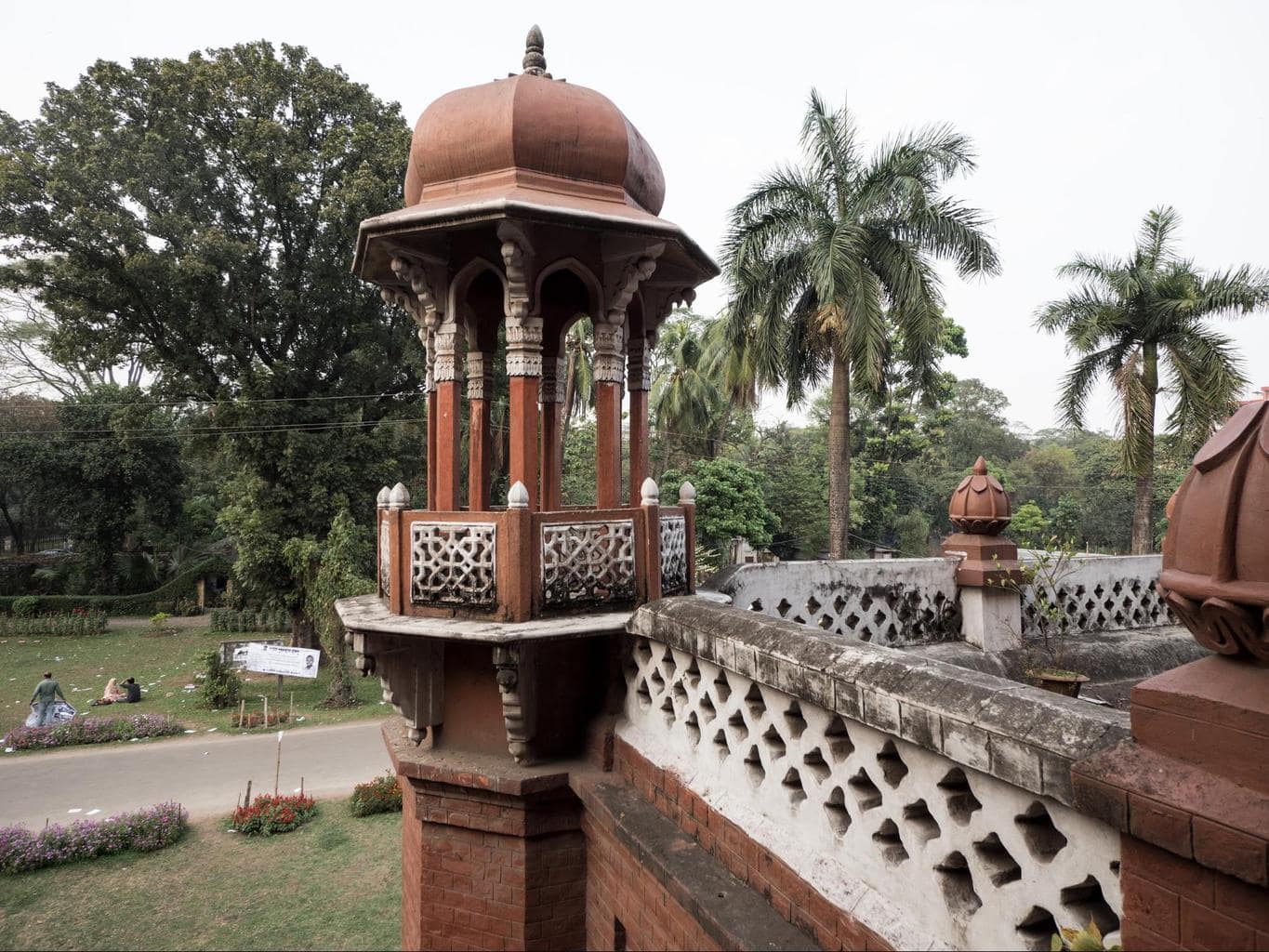
It might seem strange that a university building features in the list of places to visit in Dhaka but the Curzon Hall in the University of Dhaka complex is one of the most beautiful and well-preserved examples of Indo-Saracenic architecture in Bangladesh and also played an important role in the country’s independence movement.
It was here that, after the unification of Pakistan and Bangladesh, the students mobilised to defend the Bengali language. When the government of Pakistan decided to name Urdu and English the official languages, the population demonstrated and the government banned any form of assembly.
But the students continued. The university was the site of a massacre in 1952 when the army attacked students who were demonstrating.
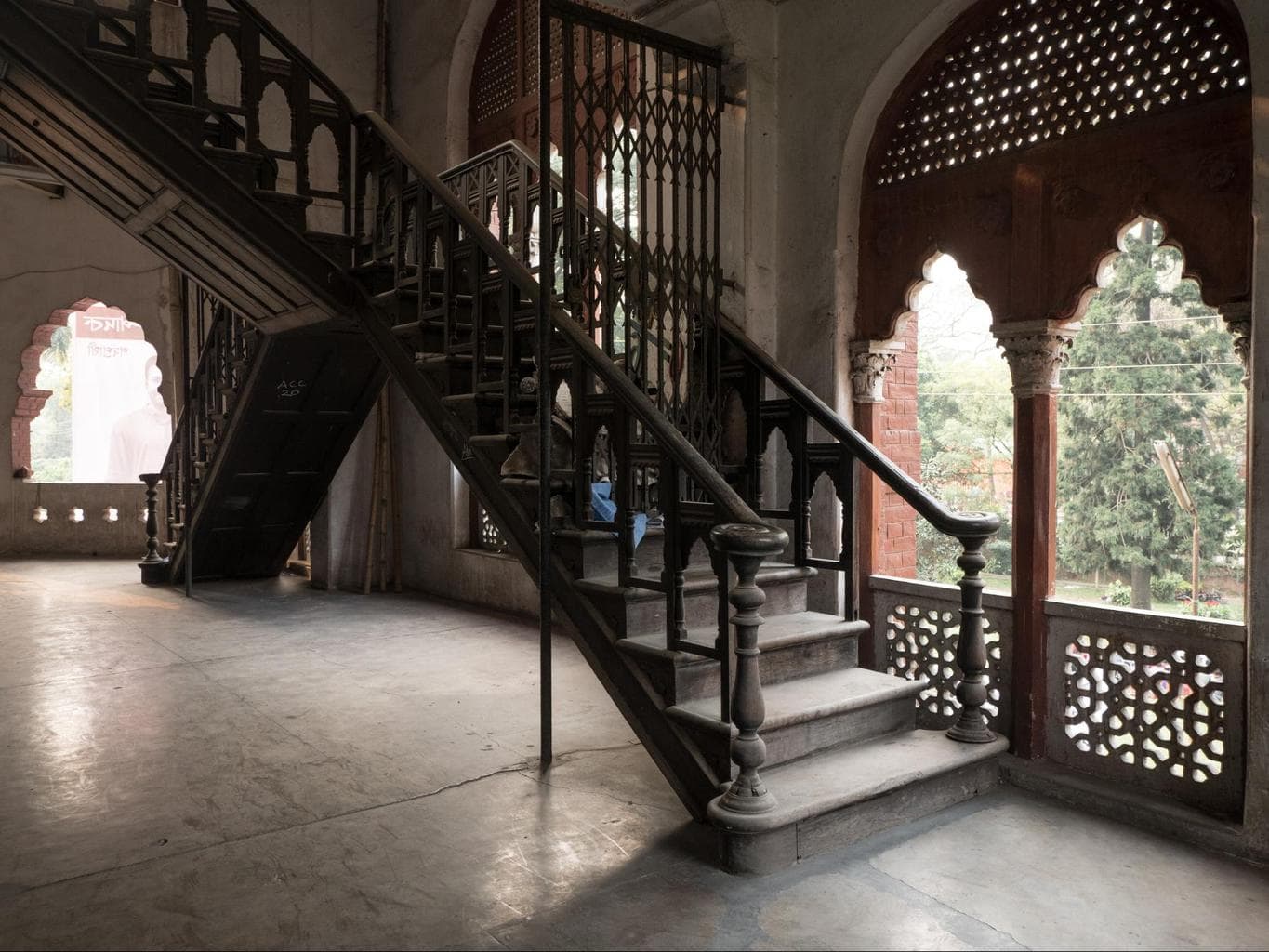
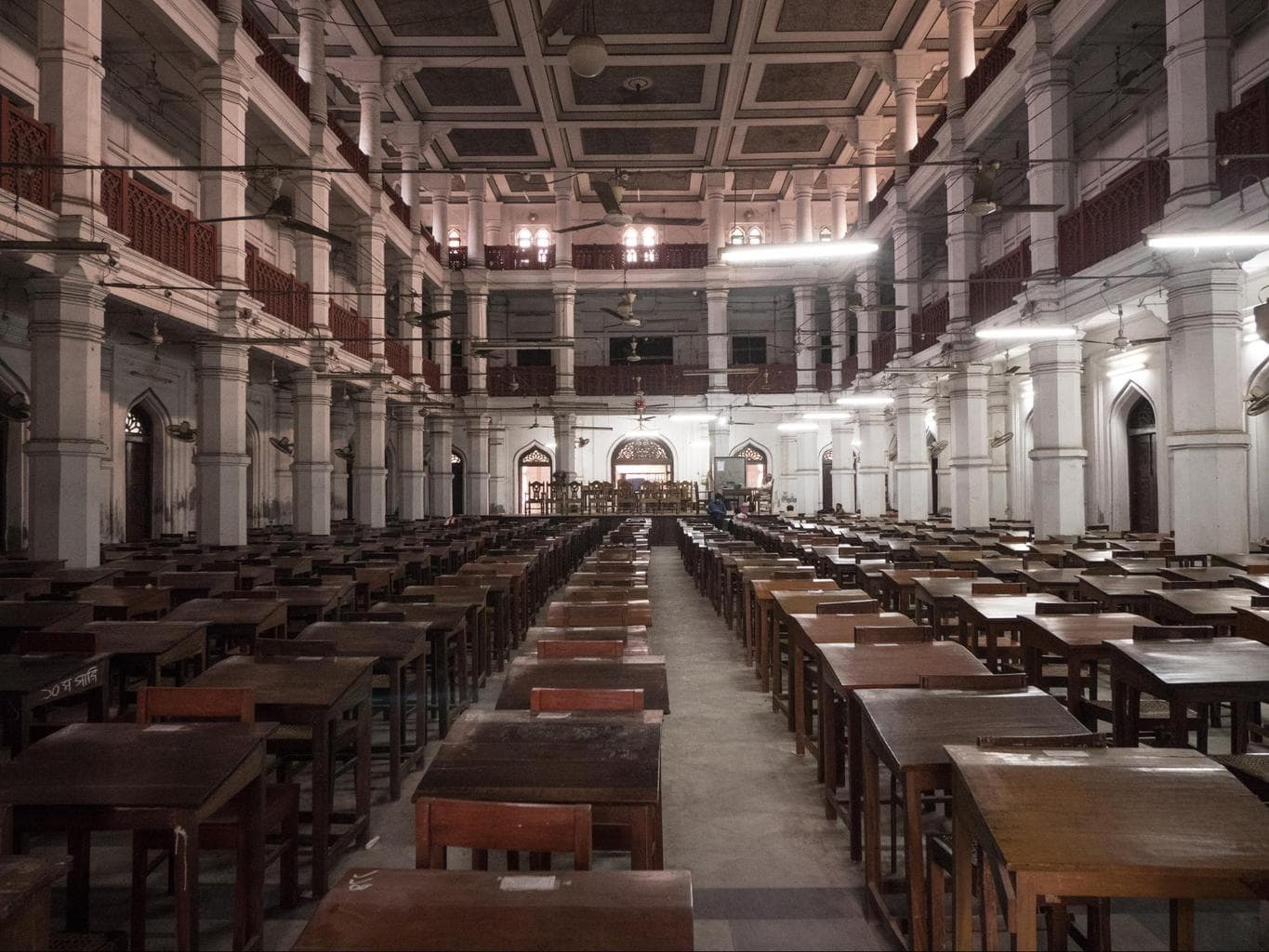
If you visit today, it is interesting to see the red building and the classrooms, still keeping the former colonial architecture with the wooden benches and the high ceilings. At the back, there are the student residences hosted in equally pretty buildings.
The building was originally envisioned by a British Viceroy Lord Curzon who gave it his name at the beginning of the 20th century and was meant to be a Town Hall. But when Bengal broke away the building to become part of the University of Dhaka Science Faculty.
Entrance is free and open to anyone as this is a working university, and the students are always quite curious to see visitors. Coming here, and chatting to the students, who are likely to speak English, is one of the nicest things to do in Dhaka.
Shahbagh flower market
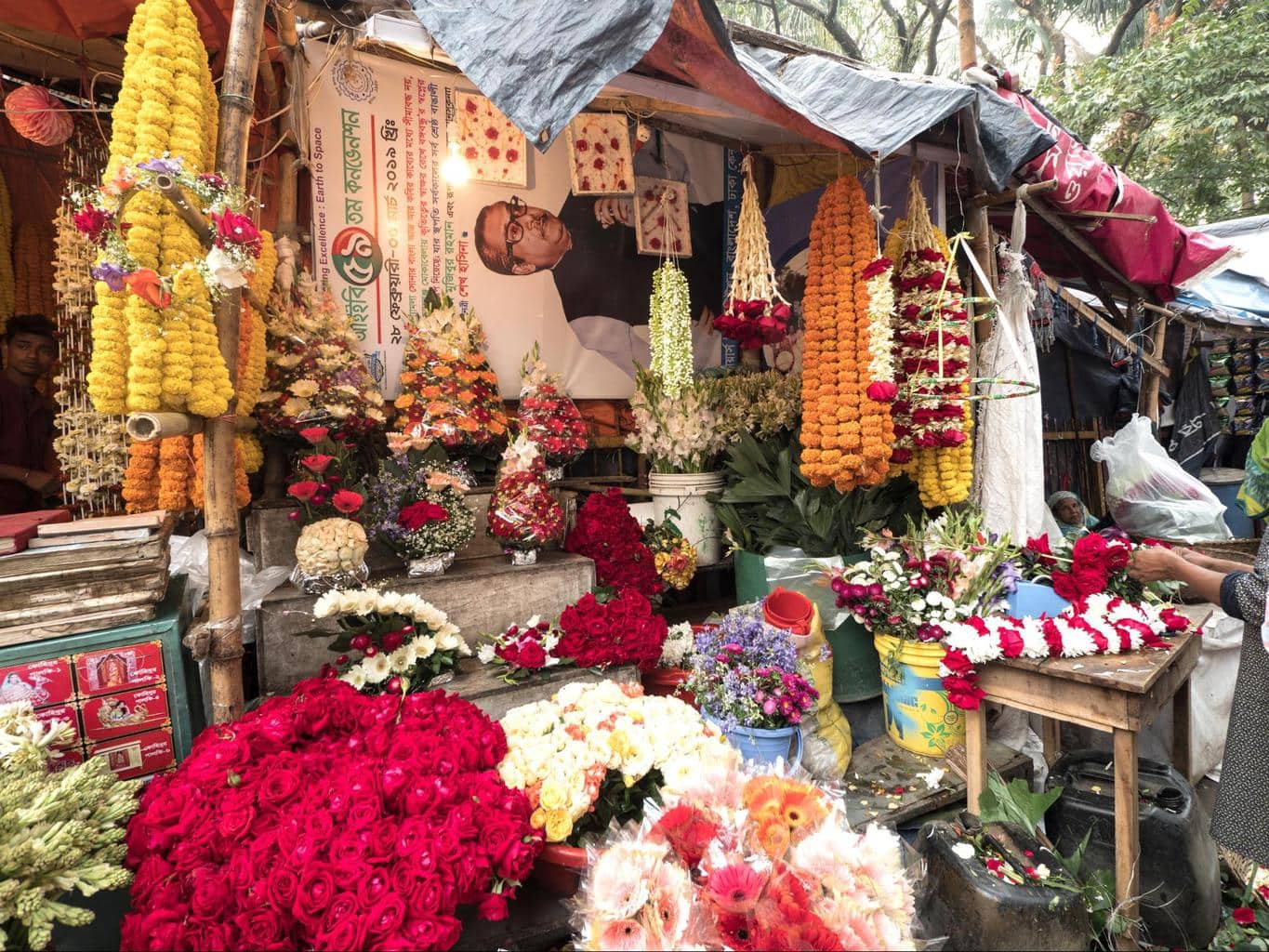
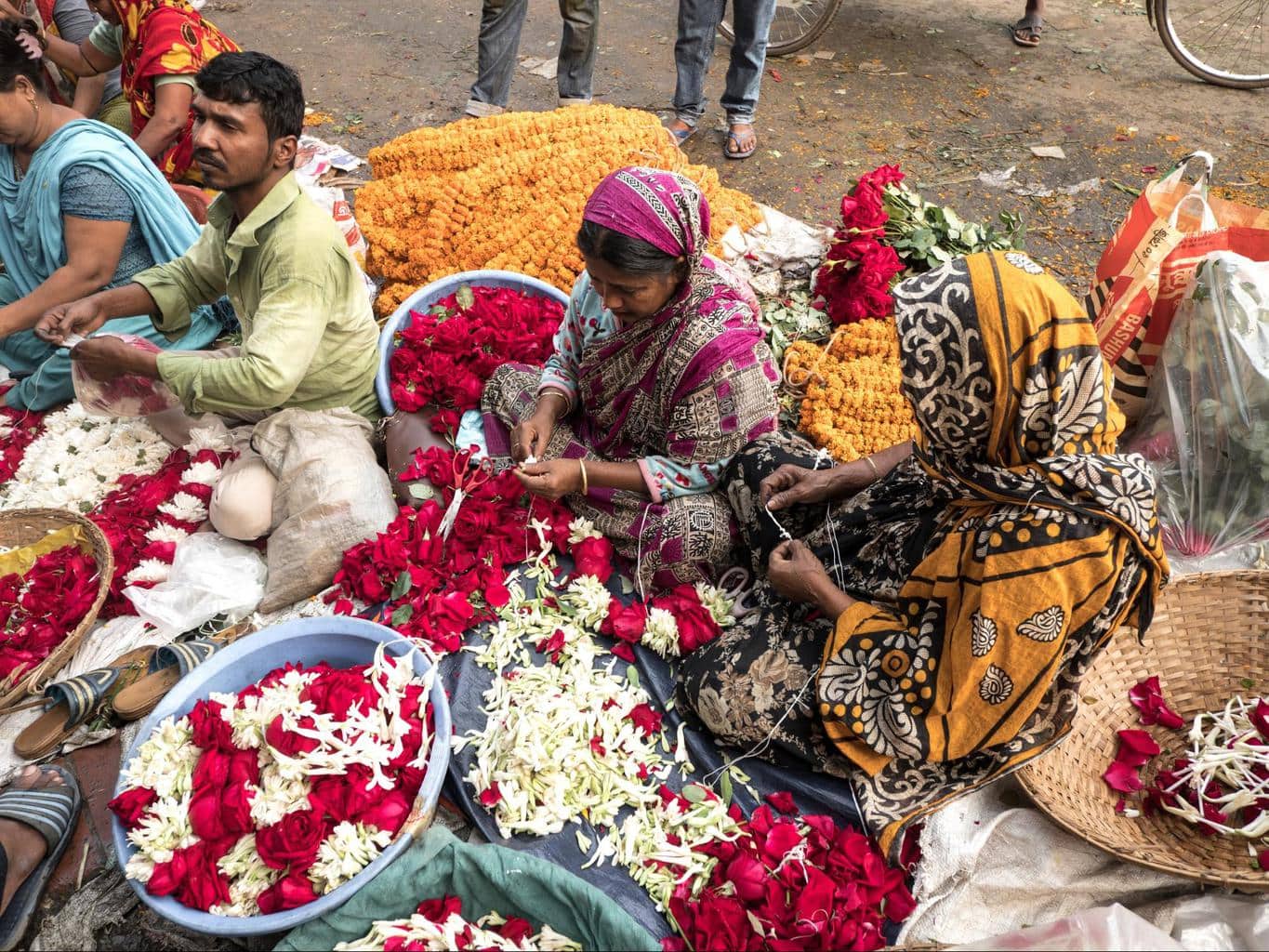
This is the largest wholesale market in the city and is an explosion of colors and smells. As a working market, you will see the artisans creating beautiful flower garlands and decorations which is why a visit is one of the nicest things to do in Dhaka.
Many stalls have books filled with the types of decorations they can prepare, wedding couples come here to choose the design for their big day, to cover the dining hall, etc.
The market is set along a road, on the sidewalk, and it is usually quite crowded so beware of pickpockets. Locals are friendly and will smile at you. Although this is a wholesale market, there are lots of retail products to buy too, including flower crows, for a fraction of the price in the West.
This is one of the best places to visit in Dhaka for photography enthusiasts as the buzz of people and the beautiful flowers create great contrast.
Half day trip to the ancient capital of Sonargaon
You cannot visit Dhaka and not make it to the ancient capital of Sonargaon, also known as Suvarnagram. In fact, visiting Sonargaon was one of the things to do in Dhaka I was most excited for and it did not disappoint.
First things first.
You don’t actually see the ancient capital city of Sonargaon, because there is little left of that, you visit Panam Bazaar which is nearby and is a street lined with colonial mansions from the 19th century.
Sonargaon is about an hour’s drive from Dhaka and used to be one of the medieval capitals of East Bengal and an important port in the 13th century during the Deva Dynasty. The city continued to be one of the main administrative hubs of the Bengal and Delhi Sultanates until 1610 when the Mughals arrived.
When they moved the capital to today’s Dhaka, Sonargaon declined in importance and it was abandoned. The British took over the area during the time of the Raj and Panam Nagar was developed as a neighbourhood of Sonargaon but the original buildings have mostly disappeared.
A day trip to Sonargaon should include all the below places to visit.
Panam Nagar Bazaar
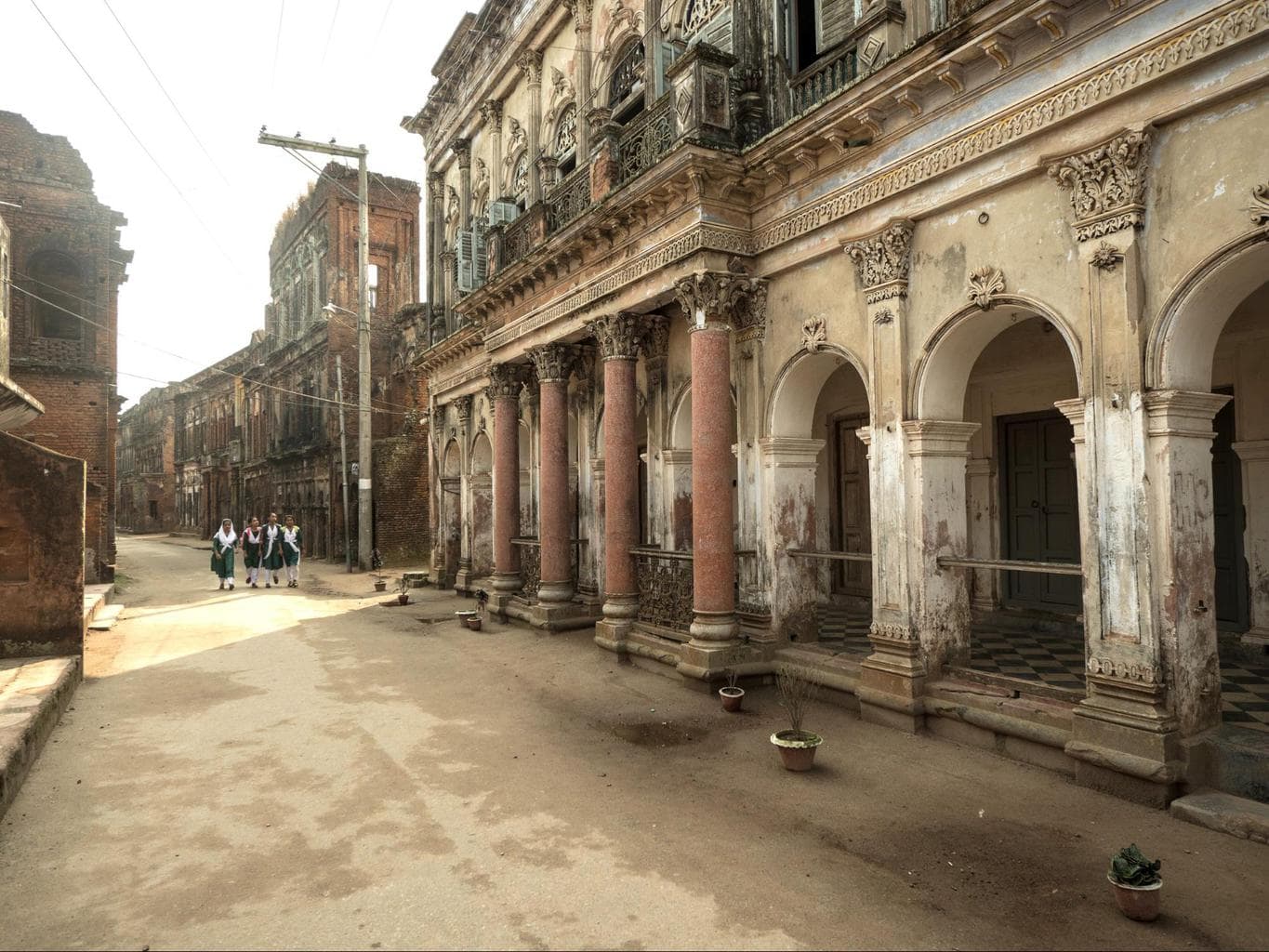
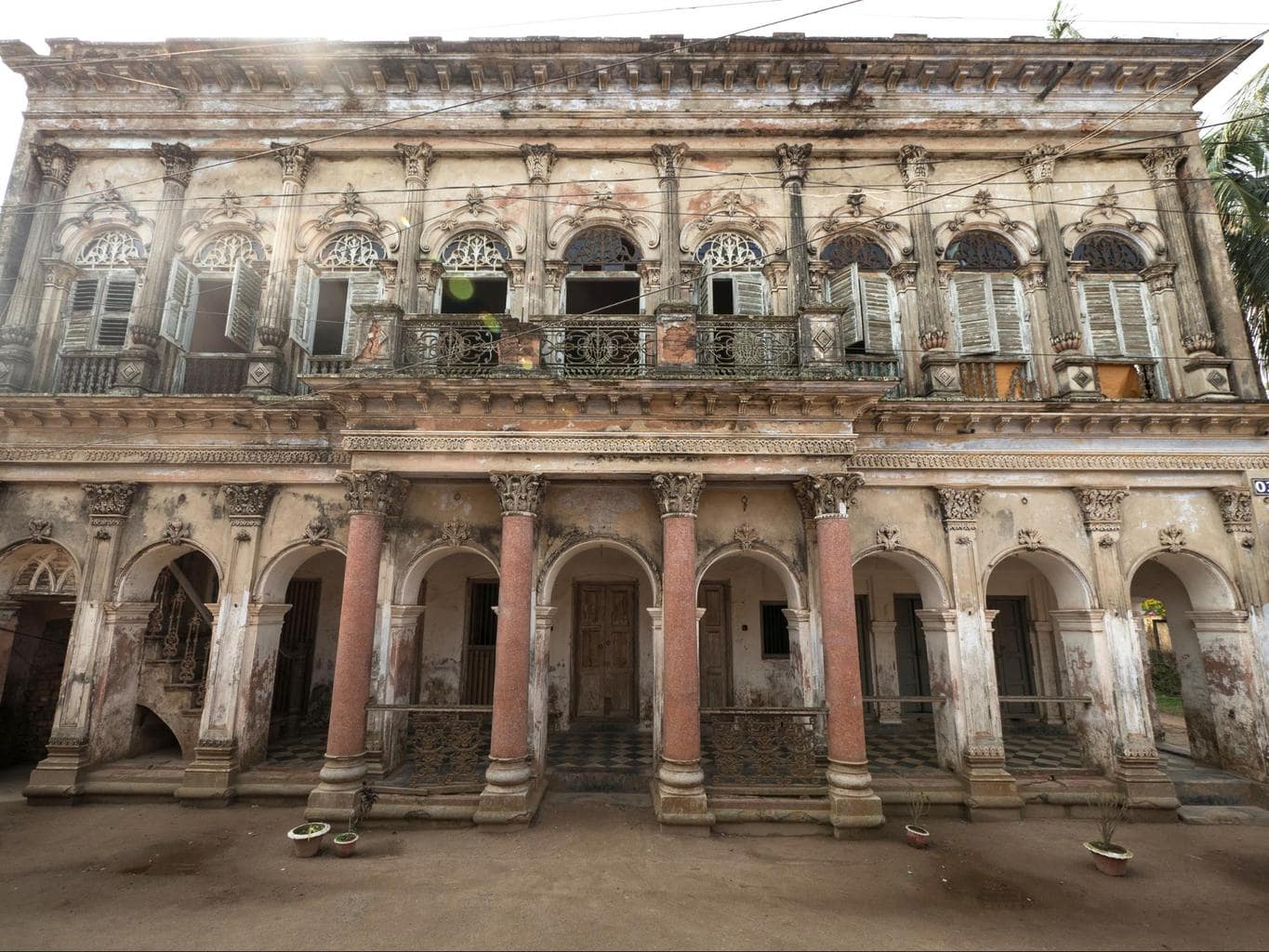
Panam Nagar Bazaar is a 600m long street in the old Panam Nagar neighbourhood of Sonargaon with about 52 remaining Hindu mansions that were abandoned when the textile industry declined and the area became a part of Pakistan and have been left almost as they were.
They are in varying degrees of conservation, some are in very good state and you can even see the stained glass windows and the intricate wood carved designs on verandahs and door frames, others are little more than ruins.
Panam Nagar was founded by Hindu traders in the 19th century who settled here when the British East India Company opened a textile fabric manufacturing facility and the buildings were constructed following the Indo-Saracenic style of the time, with Mughal (Islamic and Persian) and European elements fused to create a unique appearance typical of the Indian subcontinent.
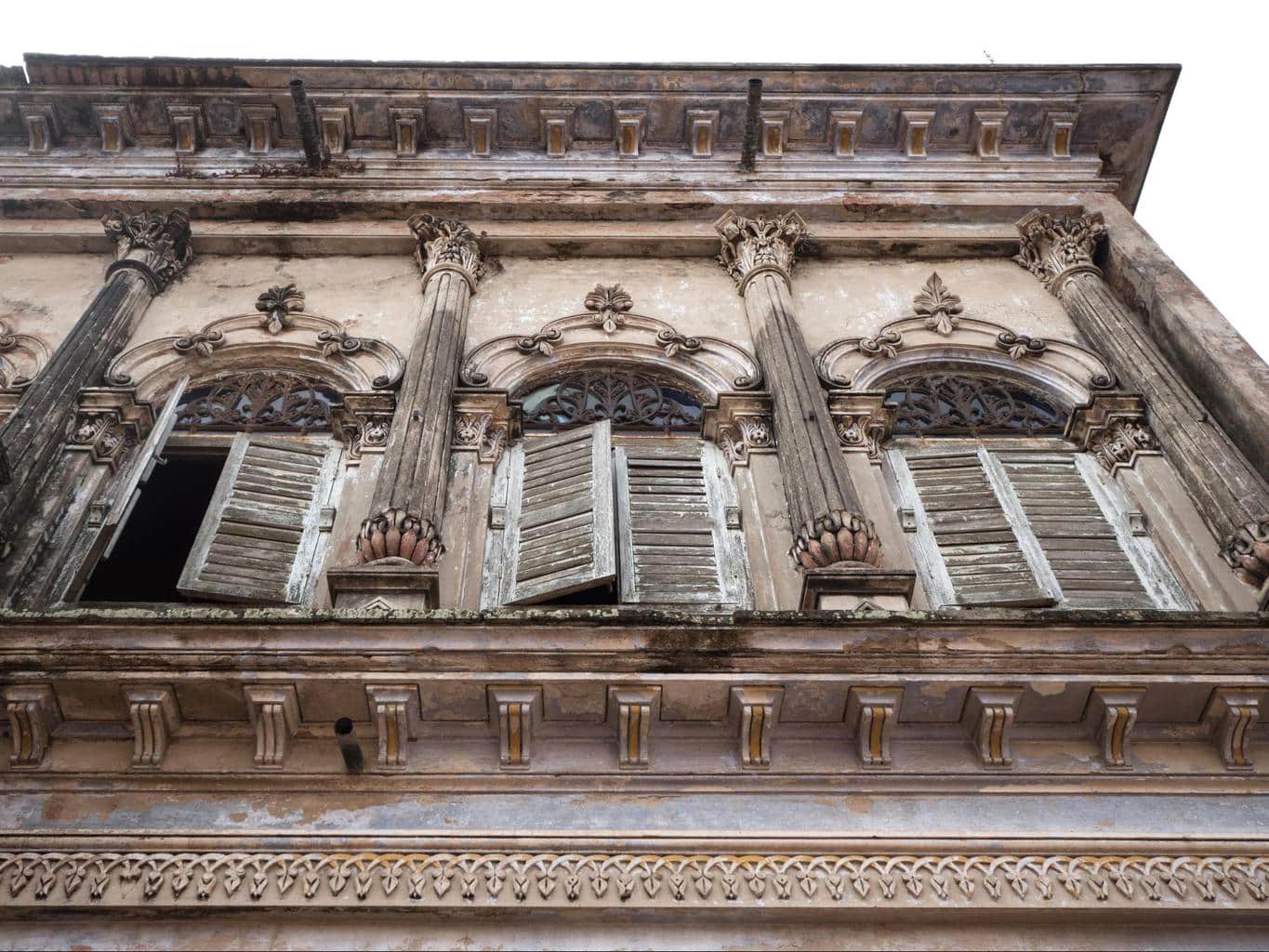
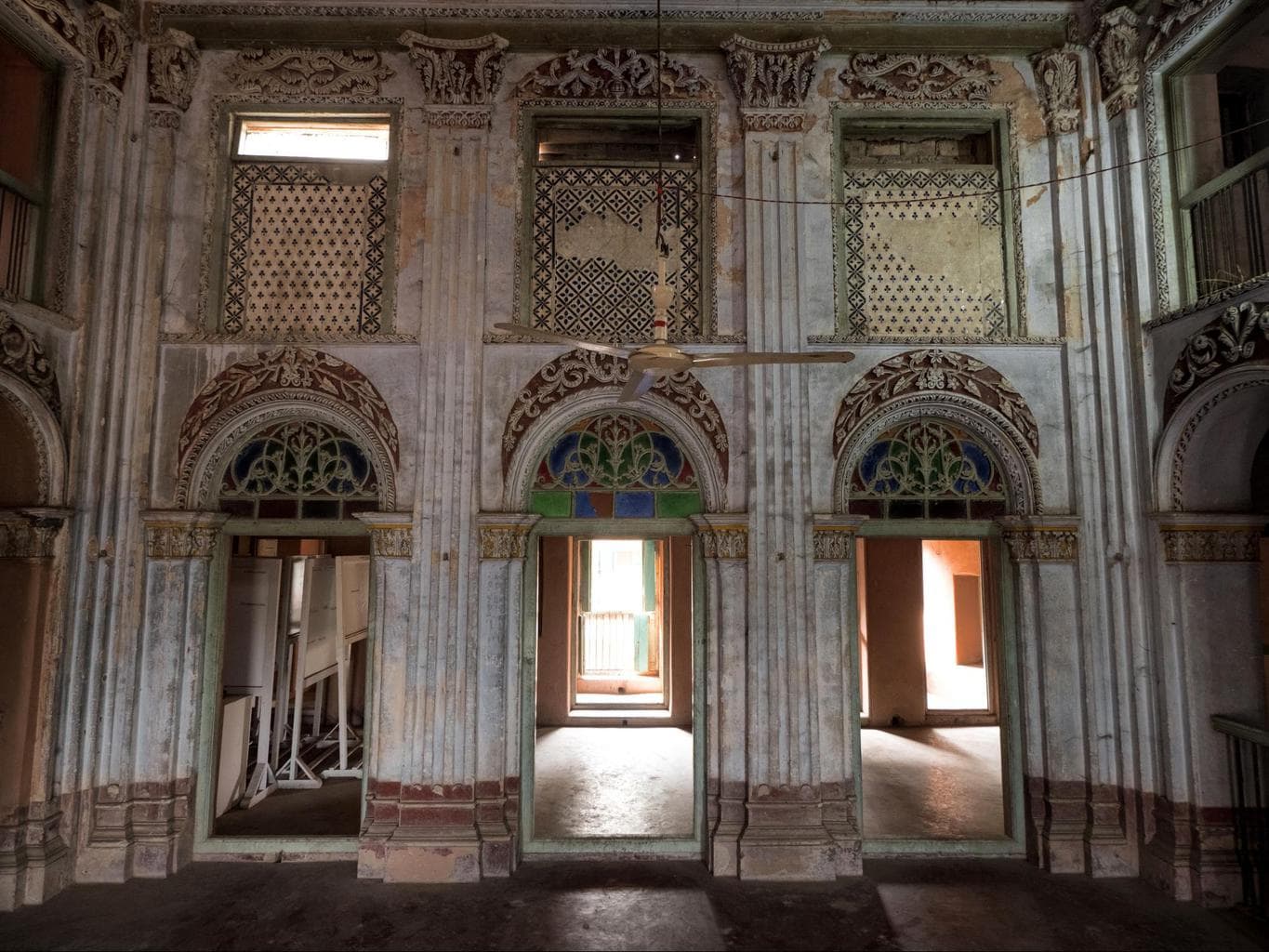
The buildings were made with brick covered in plaster, some conserve the original plaster designs and paint, most just show the exposed brick. Here, you can also see a bit of the Chini Tikry technique used in Star Mosque, although not much is left of that.
At the back of the buildings there are gardens, grass, wells and ghats that face the canals which were used to transport the textiles in and out of Panam Nagar. Locals come here for picnics and the weekends see more movement but generally, Panam Nagar is a very peaceful place.
You can get in and up the upper floors of some of the buildings, look out for the open doors, but be careful as some of them are in dire need of conservation and could collapse, as indicated by the fact that they have been added in the watch list by the World Monuments Fund.
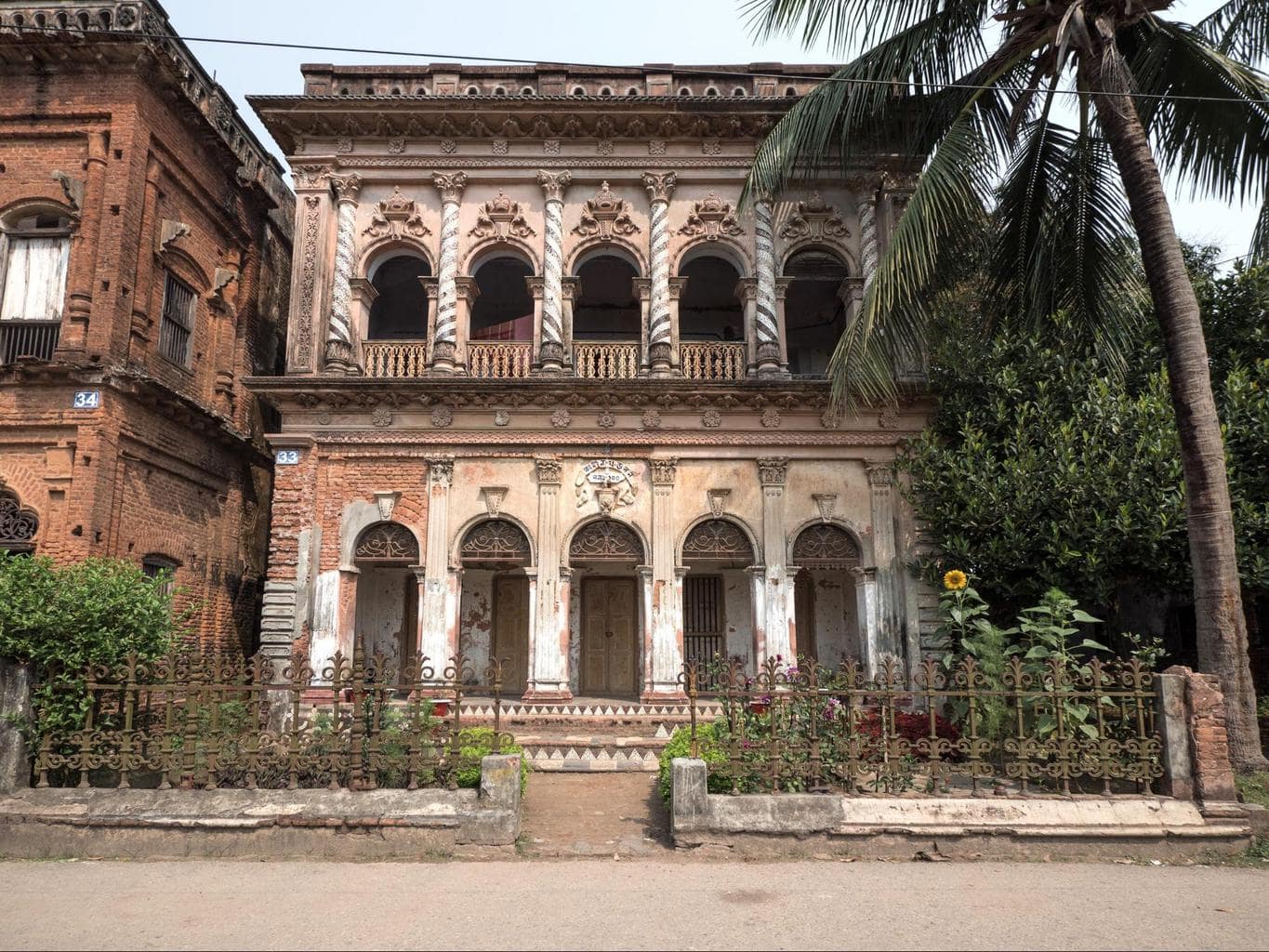
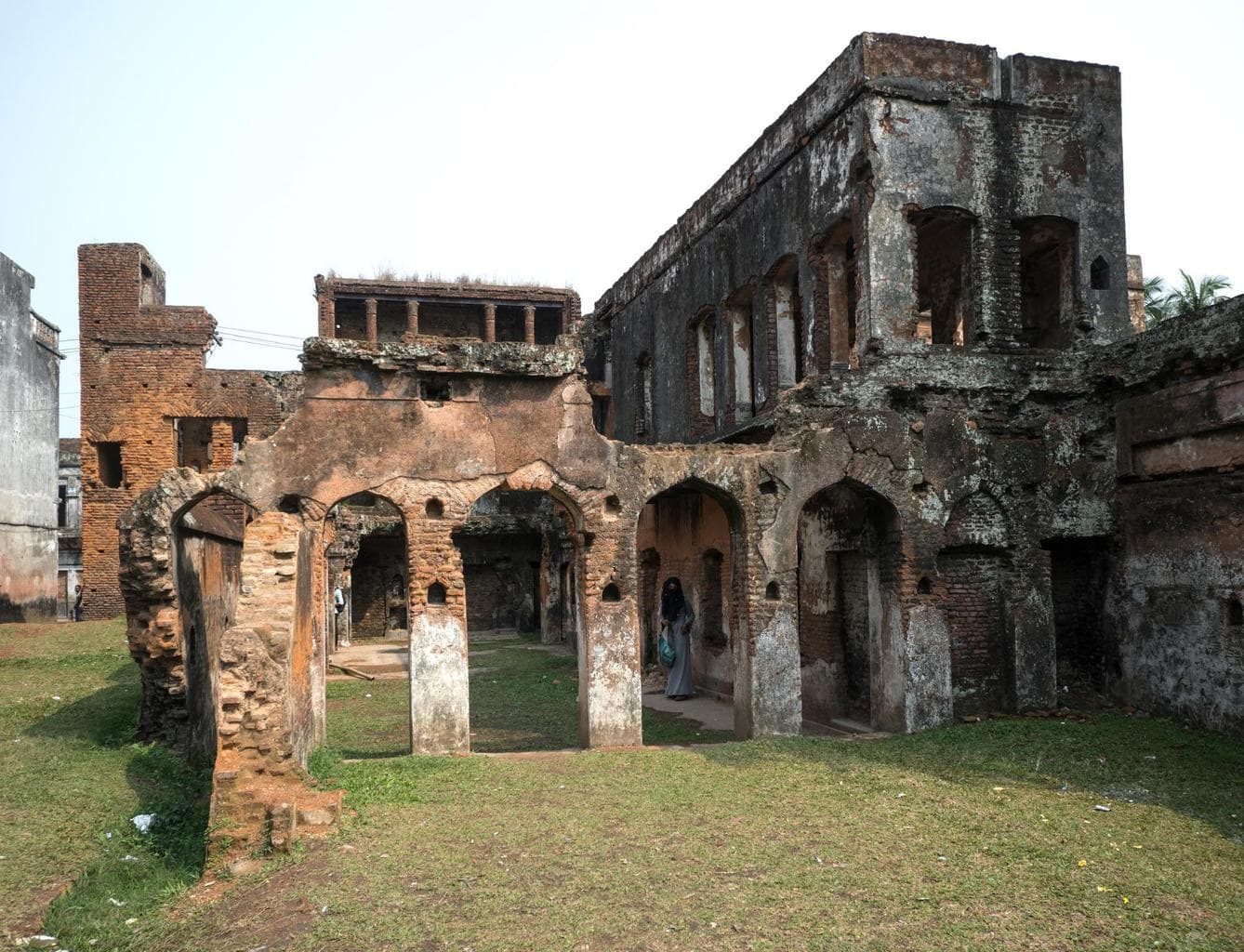
There are no signs in the area, and very little information online, so without a guide to tell you more you will be lost of commentary.
The caretaker will get your entrance ticket. He lives onsite with his family in the first construction you see when you enter Panam Bazaar, by the parking lot. If you ask him nicely, he will let you go into his house.
Zainul Folk Art & Crafts Museum in Sadarbari
This museum is as important for its building as for its contents. Housed in a mansion from 1901 called Sadarbari, the Folk Art and Crafts Museum showcases pieces from the area. The mansion is stunning, with a rear facade facing the river which is one of the most photographed places in Sonargaon.
Goaldi Mosque
This small square mosque built in exposed red brick is not open to the public so you cannot get in, but you can walk around it in the small fenced garden that guards it.
It was built in the 16th century and it is one of the few remaining structures from the medieval period. It’s conservation state is the result of the government’s efforts to restore what was left of it after it collapsed.
Boidar Bazaar Boat Terminal
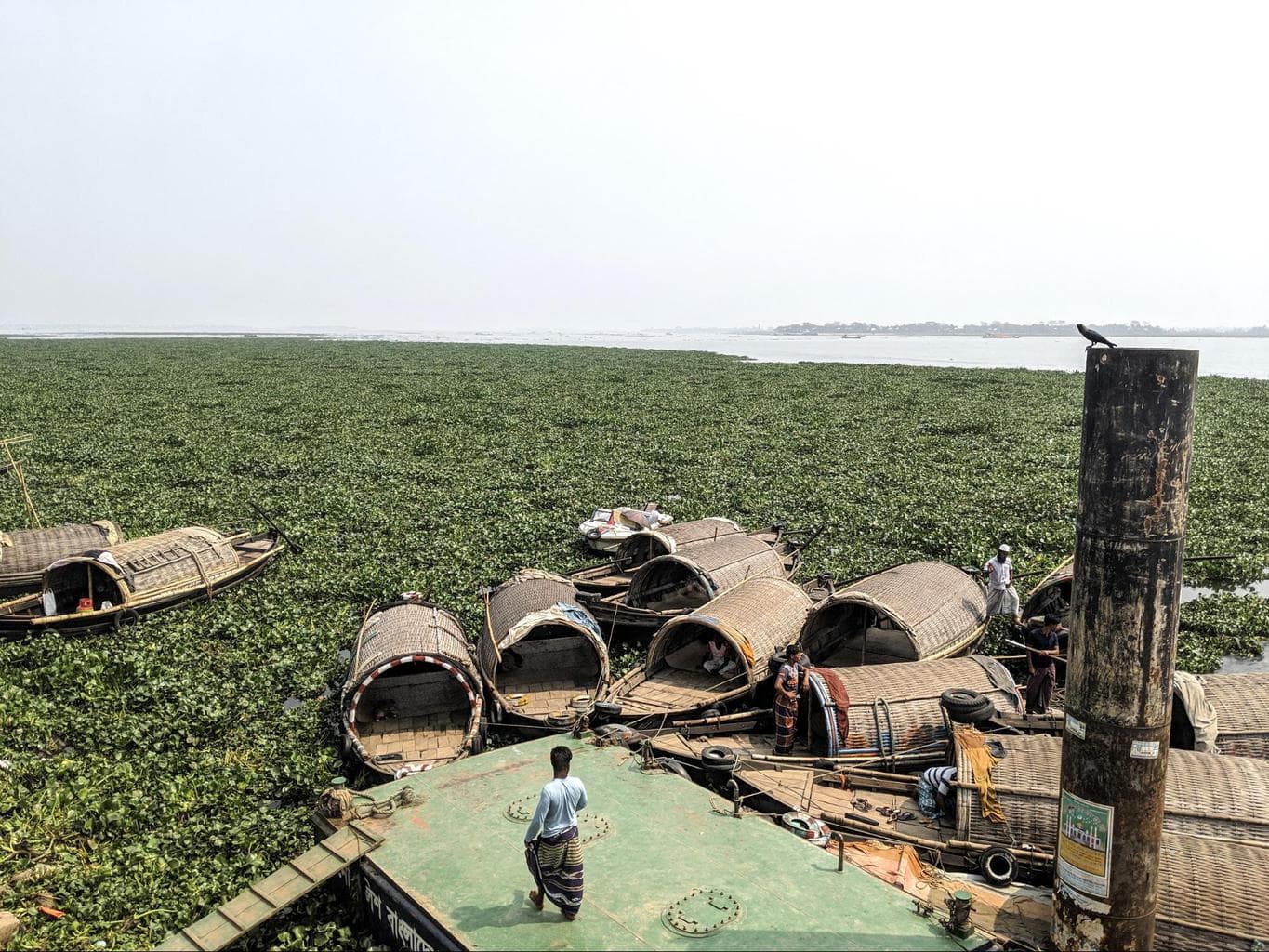
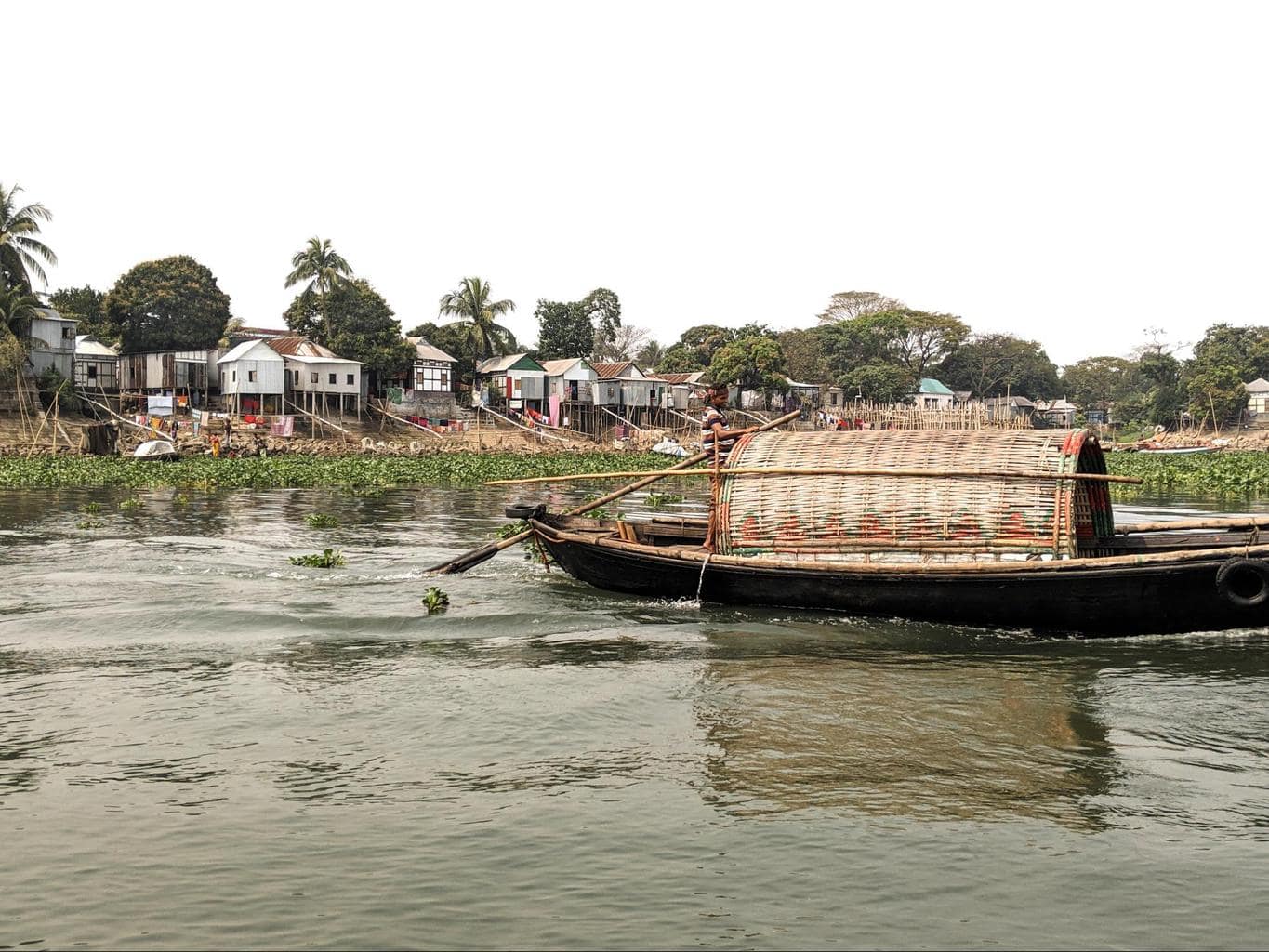
You came all the way here so you might as well make the most of your time here by taking a small wooden boat excursion on the river Meghna and to the small colonies on the other side.
The boats are very much like the picturesque houseboats in Kerala, and the area looks a bit similar too, but there are no narrow canals here, the river and its many affluents are wider.
Along the river you will see boats that are extracting sand for sale and the majority of the people in the area either live off that or are fishermen. On the other side of the river, there are a few islands where the wives and children of the fishermen and sand workers live.
Take a boat and go to the other side, ask the boatsman to wait for you and explore the small islands. You will not be able to walk long before a local woman will invite you in for a drink and some snacks, like biscuits or crackers.
It pays to come here with a guide because otherwise you won’t be able to communicate, but it is nonetheless interesting to see how the wealthier yet rural communities live.
Houses are made of brick and tarpaulin with intricate facades with carved wooden details indicating how wealthy the family is.
Inside, they are spacious, and clean, many have TVs and are fully furnished, with fridges. There is electricity on the island, sometimes coming from a generator.
Jamdani sari making
Sonargaon and Panam thrived thanks to the textile industry and, most notably, the cotton muslin fabric that is incredibly fine and made Bengal famous the world over since the times of Ibn Battuta and Marco Polo.
Muslin grew particularly well in Bengal, and especially around Sonargaon, because of the type of cotton plant which loved the weather and soil around the River Meghna and the constant level of humidity.
The fabric was so thin that it is said an entire sari could fit in a matchbox. It became the official fabric of the Mughal Emperor and it was exported to Europe where the royal families and nobles in France and England wore it for special occasions.
The textile industry is the original reason why Panam was created by the British East India Company who set up a factory here to export Muslin.
At the same time, the British set their own textile industries in the UK, in Lancashire, to compete with the handmade muslin, and eventually starved the demand from Bengal. Weavers left their craft and changed professions and trade declined.
To top it all off and ensure that no muslin would ever be made again, legend has it that the British cut the thumbs of all the artisans so that the skill would completely and surely disappear. Our guide insisted this to be the case.
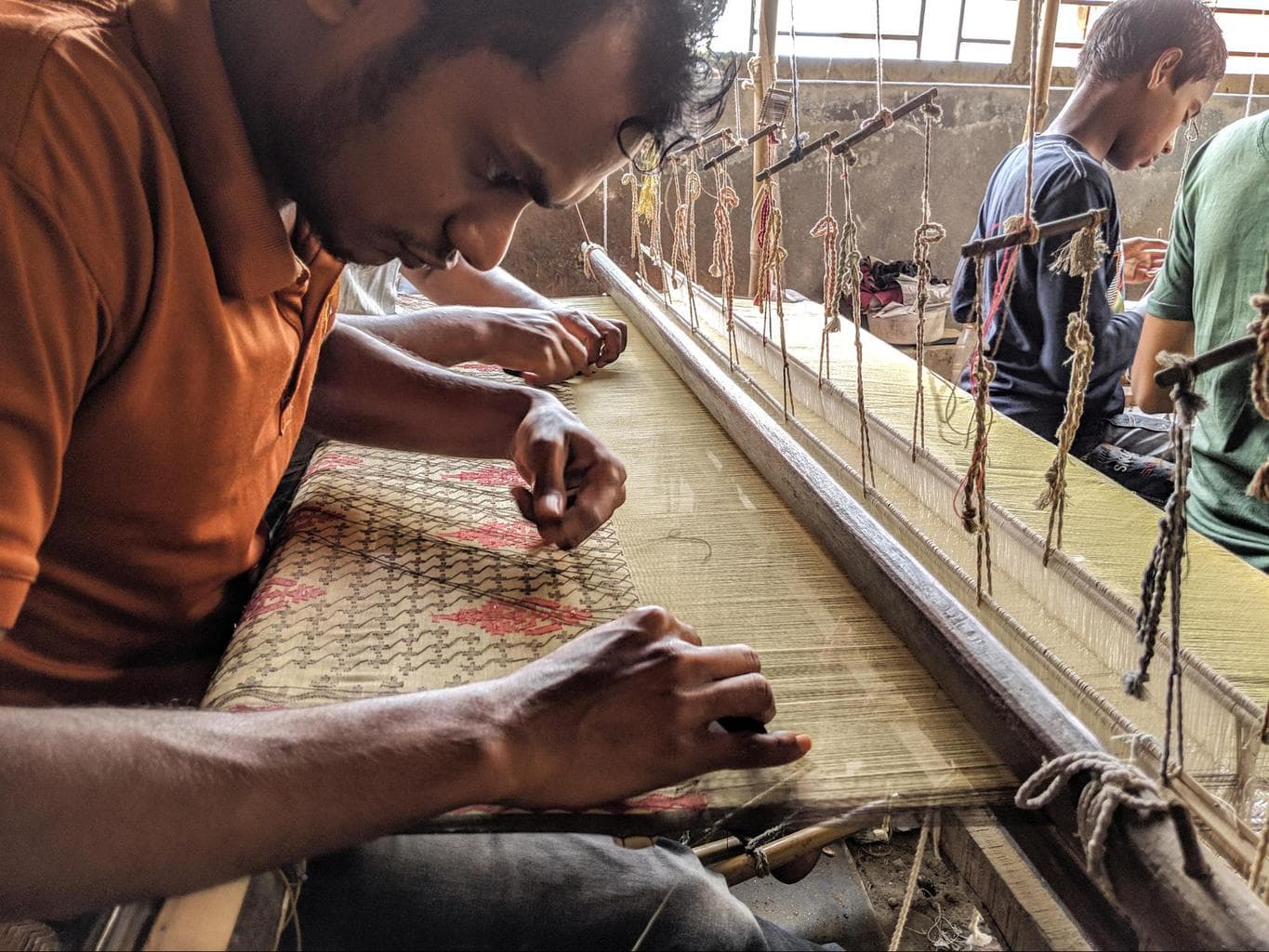
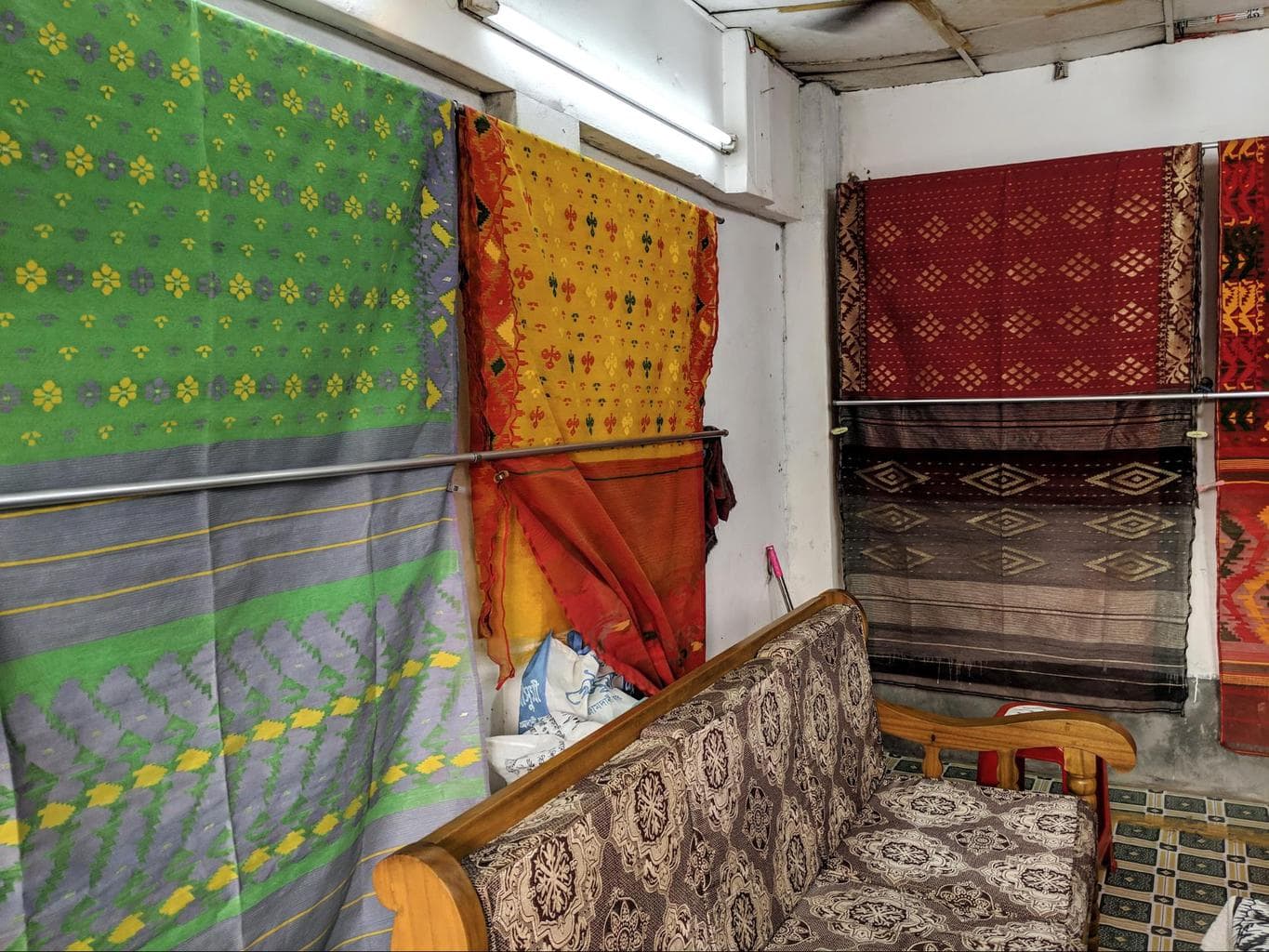
While muslin is no longer made and the original cotton plants and techniques are gone, some NGOs and companies have tried to bring it back in a new modern form, and you can read more about it here or even buy it on Amazon.
Today, most saris are made with machinery, but there is a small town halfway between Sonargaon and Dhaka called South Rupshi filled with textile workshops where Jamdani saris are still made using the Indian pit treadle looms.
These saris are the cousins of muslin fabric and are as light and airy as these were, only they are weaved into patterns, and embroidered into beautiful designs while muslin was a white fabric.
The word jamdani comes from the Persian for flower vase, and was given by the Mughals in the early 17th century, and they are as pretty as this sounds. UNESCO also thinks so and included jamdani weaving in its list of Intangible Cultural Heritage of Humanity.
Jamdani thrived during the Mughal Empire but declined with the British arrival and competition from cheaper mass-produced textiles. They have however remained as a refined and premium fabric used to make the most beautiful saris, like the ones worn by the Bangladeshi Prime Minister, or Priyanka Chopra.
Jamdani saris are sold in shops near the workshops, they also sell scarves and other textiles and you can see how they make them in the open workshops.
Book a tour: I would highly recommend coming to Sonargaon and Panam on a tour, not just for convenience (the buses take forever) but also for commentary and safety. You will also have access to buildings you would otherwise not have access to because the guide knows the caretaker. Here are the tours I recommend:
- Sonargaon and Mainamati tour which also includes a visit to these mounds which are included in Bangladesh tentative UNESCO list. As this may be a group tour (min 2 people) you may not be able to include visits to the Jamdani village or the boat trip on the Meghna River. Book it here.
- Sonargaon and Meghna River tour. This one includes the river component and all of the places above but the Jamdani village. Book it here.
Where to stay in Dhaka
I am a luxury travel blogger, but also one that travels to out of the ordinary and unknown places. Bangladesh, and Dhaka, are not luxurious places, they are fascinating and interesting for many other reasons but there aren’t many luxury hotels for the leisure traveler.
However, there are a few 4 to 4.5 star business hotels targeting business travelers and the area around Gulshan, in the northern part of the city closer to the airport, has a few international chain hotels.
One of my best tips for exploring all the things to do in Dhaka is to pick a hotel wisely because it will determine how long you spend in traffic and how restful you sleep. Peace and quiet after a day in the cacophony of the tourist spots in Dhaka is essential.
The Westin
I stayed at The Westin in a Junior Suite and found the hotel to be very good. The service was friendly and useful, the room was nice and spacious, and everything went well. We also had access to the lounge which had snacks and drinks.
Talking to local contacts and clients of my partner everyone agreed that The Westin was the best hotel in Dhaka but I think the newly refurbished Intercontinental is probably equally as good, just not in Gulshan where all the business travelers go for meetings.
The Westin brand dominates in the business districts across India and Bangladesh, they have a solid offer targeted at business customers and they deliver. I stayed at the one in Hyderabad and Gurgaon and the one in Dhaka was very similar.
The Westin location also meant that we could walk to dinner as there are lots of restaurants nearby.
Book now on Booking.com | Agoda
Intercontinental Dhaka
The Intercontinental Hotel in Dhaka is the best option to visit all the tourist spots in Dhaka. It is the closest to Old Dhaka and most of the sites from all the hotels on this list and has a nice relaxed and resort feel to it with pool cabanas.
The hotel underwent renovations in 2018 and has come out refreshed and has been getting glossy reviews.
Book now on Booking.com | Agoda
Pan Pacific
This is one of only two hotels located relatively central in Dhaka, not in Gulshan but half way between Gulshan and Old Dhaka.
As opposed to the other business focused hotels, this one has a slightly more leisure friendly vibe with a resort-feel to it thanks to the two pools. As this is Bangladesh, expect them to be empty.
Book now on Booking.com | Agoda
Amari
Located near The Westin with views over the lake this smaller hotel is another great option in Gulshan, slightly cheaper than The Westin, with nicer views and a more boutique vibe.
Book now on Booking.com | Agoda
Other planning tips for your trip to Dhaka
Dhaka is one of those places where it pays to plan ahead and think about what and how you want to spend your time.
Plan by geographic area
Dhaka is a difficult place to visit, not because it is extremely dangerous or because people are not friendly, but because the traffic can and will determine your time there and getting around is challenging.
If you don’t plan well, you will end up spending literally hours getting to and from places so it is important to organise your days by area.
Start early, Dhaka is up with the sunrise, so organise your days to follow an early morning. The markets open with the first rays of sunlight so they are a good place to start. Old Dhaka can be explored on foot and by rickshaw, set a day aside for all that is there.
The museums are spread out, so you will need a car and you can leave them all aside for a specific day, knowing that you might end up spending more time in traffic than there.
Sonargaon can be seen in half a day, returning after lunch and leaving at the crack of dawn to avoid the traffic. It pays to go for dinner somewhere near the hotel, walking distance even. All the luxury hotels above have lots of restaurants nearby.
How to get around in Dhaka
Because of the lack of public transport, the only way to get around is by car and rickshaw, but this poses additional problems.
If you need to take a cab, make sure that the hotel gets one for you or helps you with Uber because while the service works wonders, you won’t easily be able to determine if a car is yours. Here’s why.
Firstly, the traffic is insane so spotting a car plate is tough but secondly, and more importantly, the numbers are written in Bengali so they are not in the Roman alphabet making it impossible to translate the number shown on the Uber app into a Bengali sign. It is therefore best to simply ask the driver who took you somewhere to wait for you.
When taking rickshaws, note that the driver will almost surely not speak English and literacy rate among the drivers is low so he might not be able to read either. You should make sure you have the place name written down and get someone to read it for them.
Because of the above, I strongly recommend you explore the majority of the sights on a tour so that you don’t have to worry about transport and can be taken places.
Book a tour/guide
I said this before, but this is the one tip I firmly believe in for Dhaka.
I am not a tour person and I only ever hire private guides. But when I do, it is because I am hiring a person to tell me more about a destination so the guide’s knowledge and their interactions with us is what I am paying for.
In Dhaka, a guide is incredibly useful and will make your trip orders of magnitude more interesting. Language is a barrier and English is not spoken, and most visitors know little about the country, so you can’t guess what things mean or get answers when something catches your attention.
A guide can answer questions, tell you more about something you see, bring historical facts and anecdotes and act as an interpreter. In my opinion, having a guide with us during our time in Dhaka made our trip much more personally enriching than if we had visited alone.
As a recap, these are two tours of Dhaka that include most of the places to visit mentioned above:
- A full small group tour (max 12 people) that includes everything below except for Sonargaon or the sights that are far away from the main tourist area. After this tour, there will be little for you to see independently. Book it here. This tour picks you up and includes lunch and even a theatre performance.
- Smaller group tour with only 6 people that also explores all the sights. This one has no theatre and the food is not included. Book it here.
Cash is king
Credit cards will be accepted only at hotels and at few higher end restaurants, the rest is all cash. Make sure to always have some small amounts, rickshaws cost very little and will not have change.
Dress appropriately
Men and women should dress appropriately, not just for religious and conservative reasons but for the weather and pollution.
Women should have a scarf with them, but no need to wear it, it will be useful to protect from the sun, and to enter mosques. Long trousers or skirts are a must, and long sleeves are recommended, again useful for the sun. I always dress in long tunics and leggings.
I strongly recommend a hat, the sun can be really strong, and to bring a mask if you have respiratory problems. IQAir’s report in conjunction with Greenpeace revealed that Dhaka is the 17th most polluted city in the world and has pollution levels at unhealthy or very unhealthy levels according to the WHO all year round.
And lastly, because of how the city is, wear closed toe shoes, you will walk in mud, dust and potholes, there is garbage, smashed fruits and vegetables and all sorts of animal poop everywhere, walking in Dhaka is an obstacle race so closed shoes will be safer.
Google Maps are a godsend
Get a SIM card, do not even consider not getting one, just get it, because you will need it for Uber and for Google Maps and to get out of the mess of Old Dhaka and onto a road that has traffic (from where you can get an uber or taxi), or to find a place to eat nearby. Internet is a must in Bangladesh.
Also, SIM cards are very cheap so getting one is a no brainer. And on the topic of Google Maps, unlike in other places like Berat (in Albania) or even Macedonia, they are pretty accurate but may not always perfectly and accurately determine where you are because the signal and GPS may be challenged by high buildings and density of people.
Safety in Dhaka
I traveled to Dhaka with my partner, who looks like a local and can muster a few words, we hired a guide for two of the days, not because of safety concerns but because we wanted someone to tell us more about the places since there is no information online.
For the rest of the time we were in Dhaka we had a private driver and a 4×4 car with diplomatic plates from one of his local clients. We tried to use Uber on a couple of occasions and found it really hard because we couldn’t know what car it was, or talk to the driver, so had to get help from passersby.
When walking around with the guide he was constantly keeping an eye on me, so was my partner. I walked around with my camera bag, taking the camera out to take pictures when necessary. There was no point in trying to hide since it was obvious I was a foreigner and had some sort of money.
Was I concerned about my safety? Never, but I was not alone, and the fact that I had male company also deterred a lot of curious faces I saw staring at me.
I will also be honest, I was expecting far more attention from men, constant stares and people taking photos of me. Because this happens a lot in Southeast Asia and is a constant in India and Pakistan. But in Bangladesh people stared far less than I expected and I barely saw anyone taking photos of me.
- Check if you need a visa, get help processing it at iVisa.
- Never ever leave without travel insurance. Get affordable coverage from World Nomads or long term insurance from Safety Wing.
- I find all of my flights on KAYAK. Check their Deals section too.
- Search for all your transportation between destinations on the trusted travel booking platform Bookaway.
- I book all my day trips and tours via GetYourGuide, they are the best and their tours are refundable up to 24h in advance.
- Get USD35 off your first booking with Airbnb.
- Compare hotels EVERYWHERE at HotelsCombined and book with Booking.com.
- Compare car rental prices at Rentalcars.com

